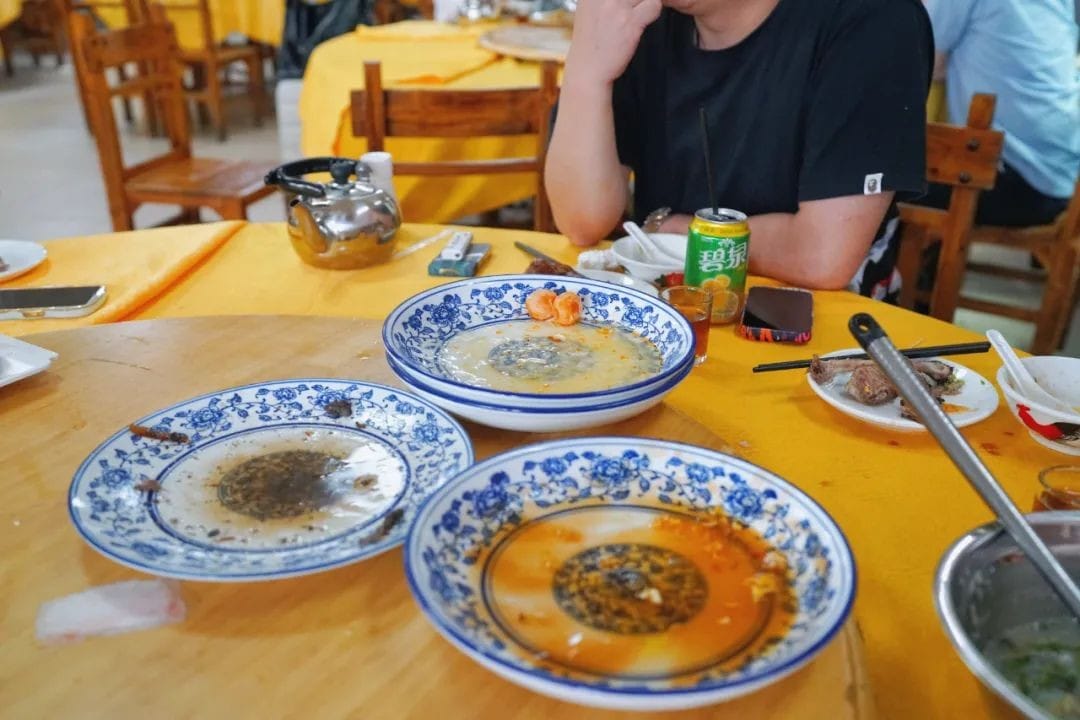
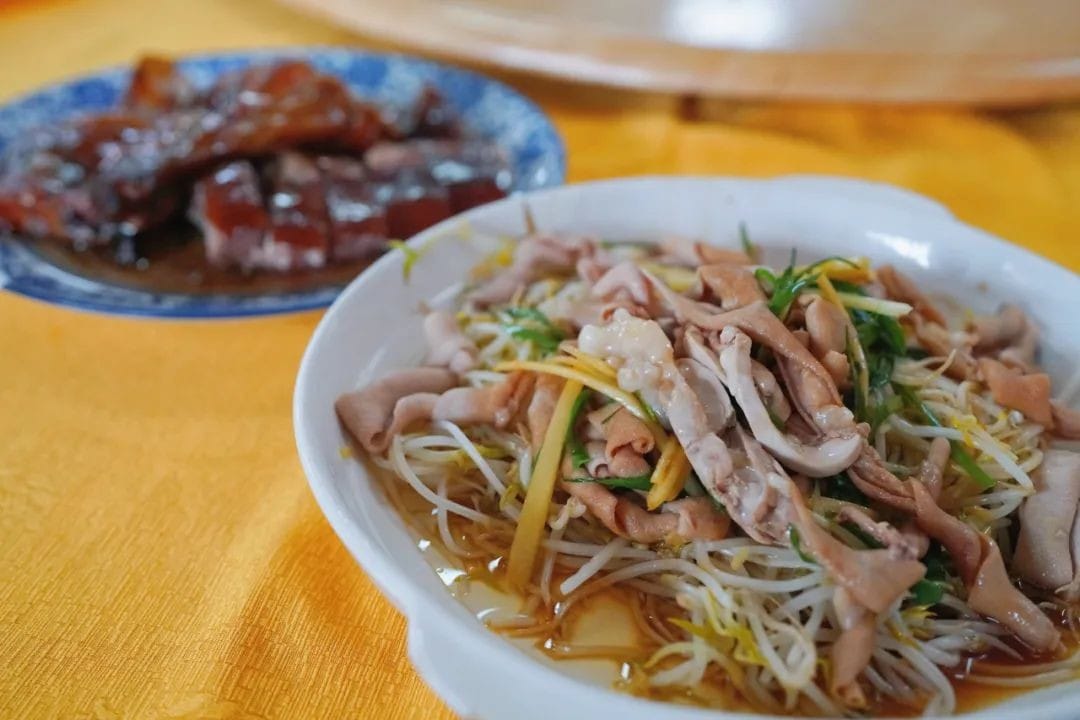
Originally, it was just a traffic jam near Qinghui Garden, but now Huagai Road, Jinbang Village, and Fisherman’s Wharf are all crowded with people around cars and cars blocking people.
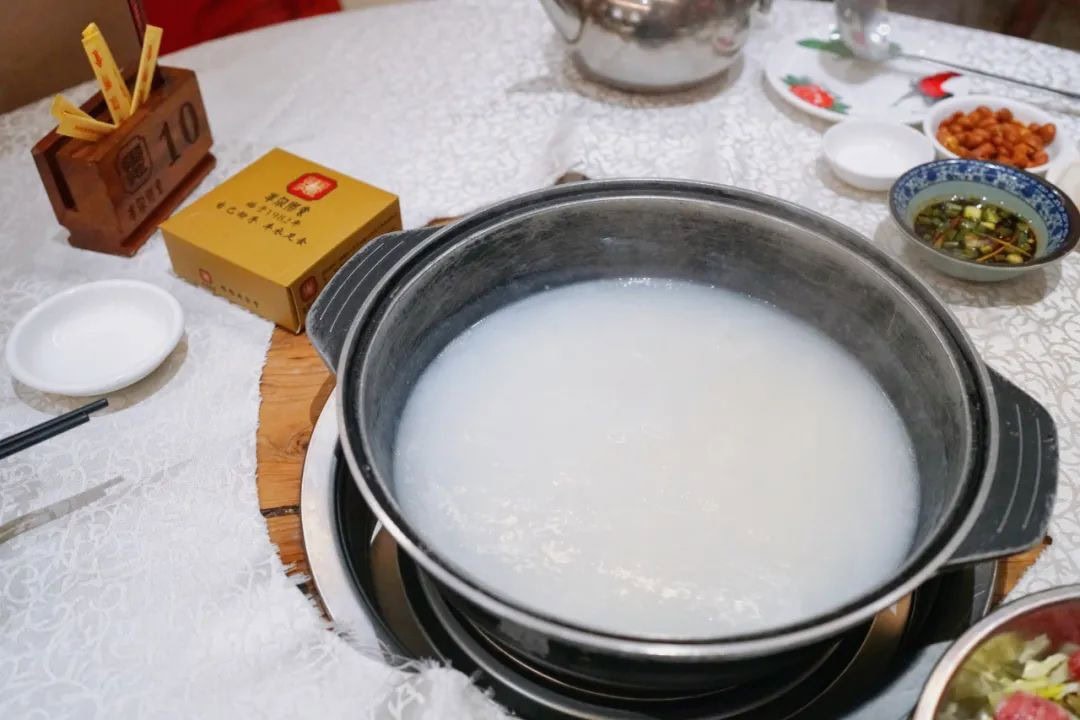
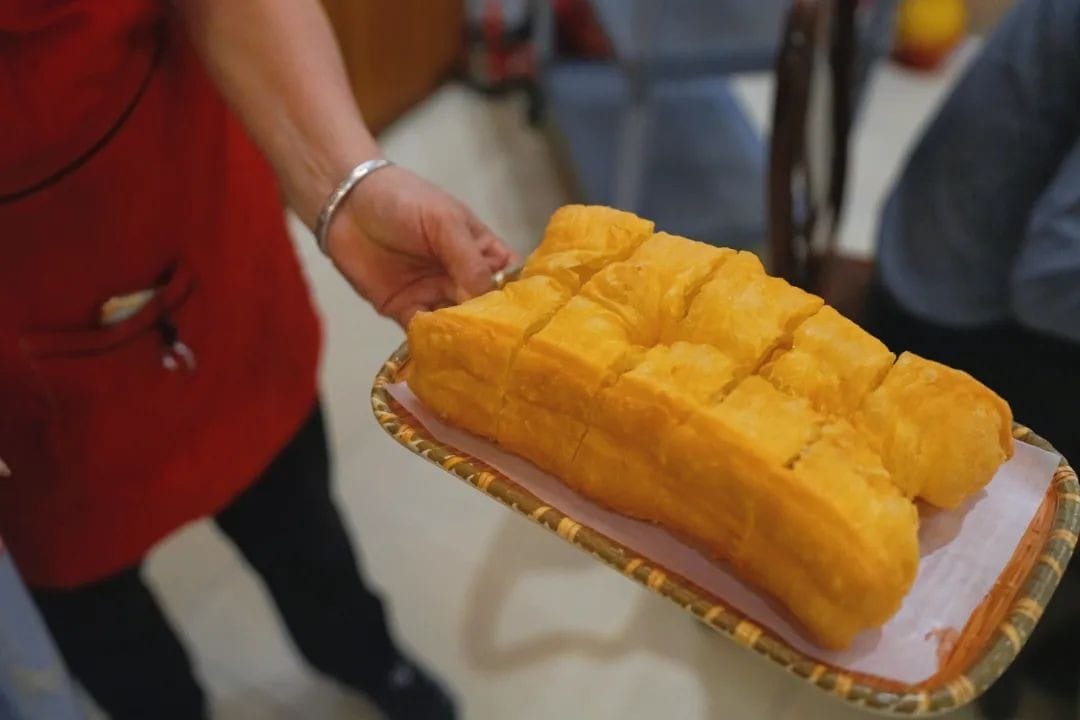
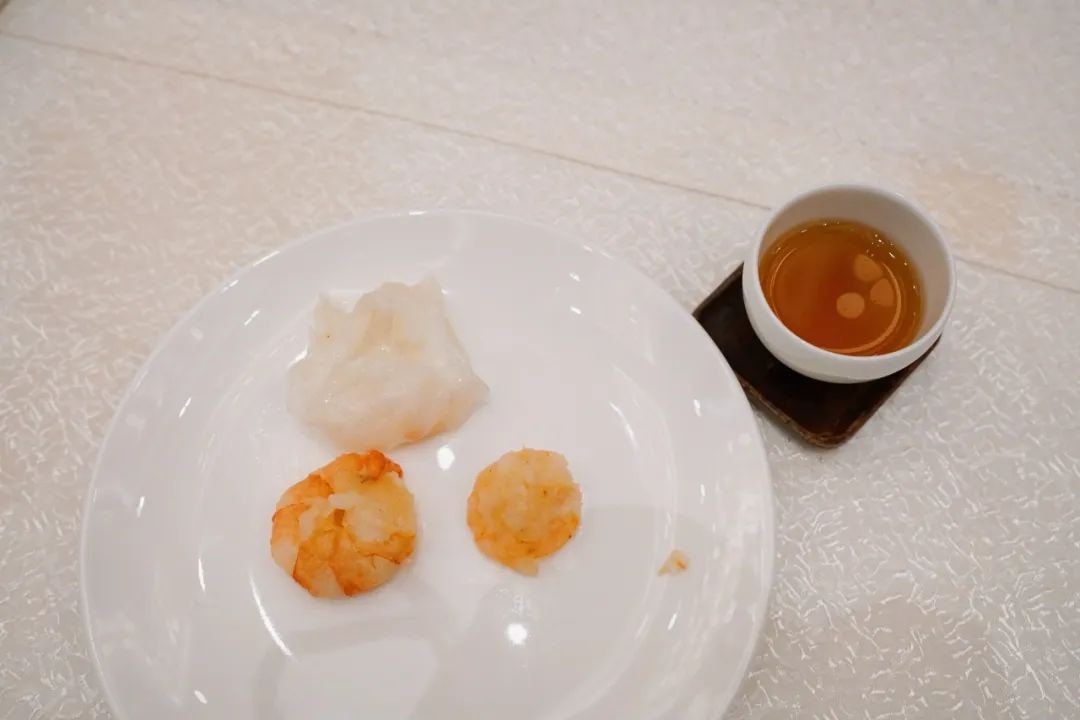
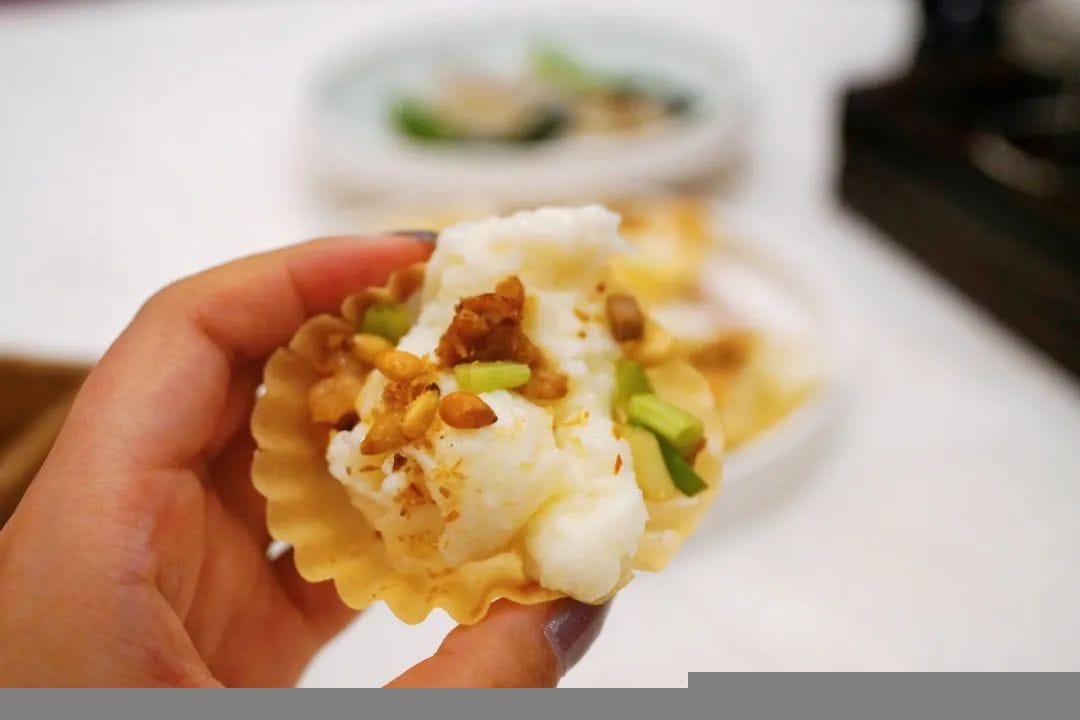
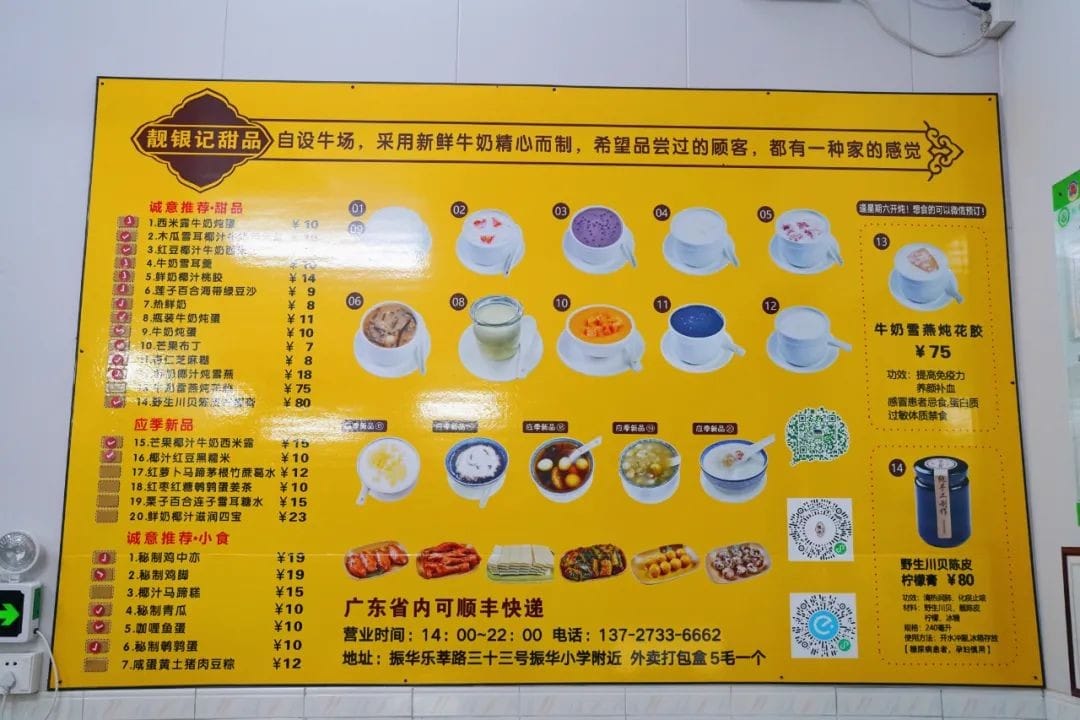
This made me discover the wonderful use of Dianping again—any shop with over 1000 reviews, if it’s the weekend or mealtime, waiting for a table is inevitable.

Fortunately, Shunde’s high dining standards remain as always, even for internet-famous shops, they can still maintain the quality of their dishes.
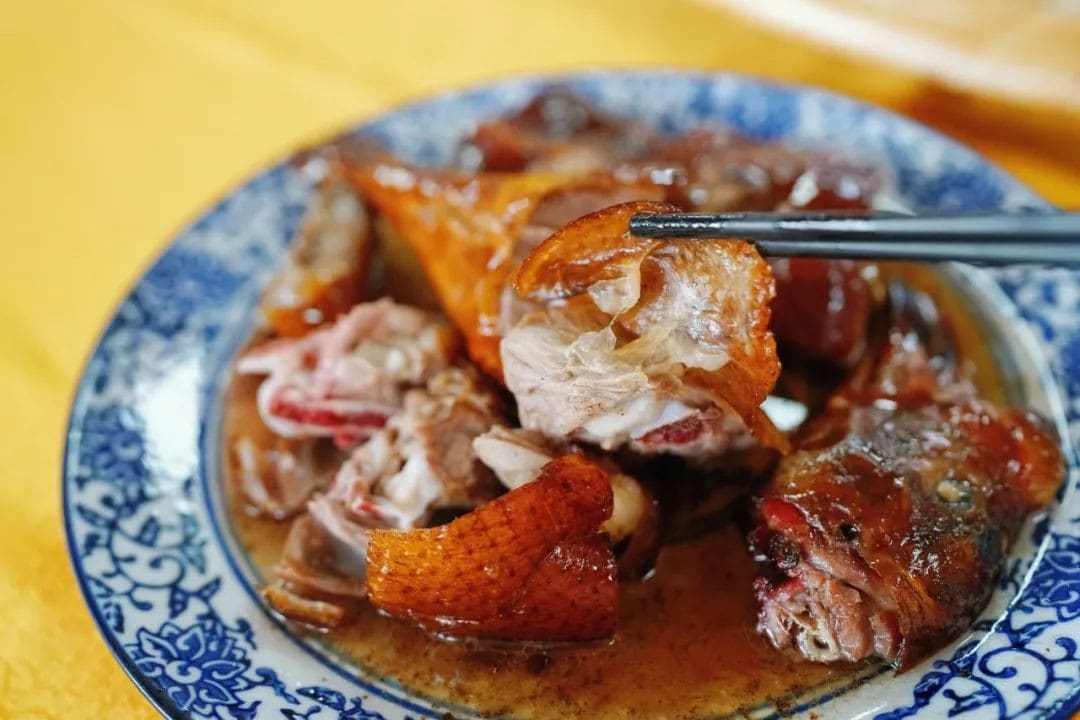
The concentration of Shunde cuisine is high, but the most densely packed areas are Daliang and Ronggui.
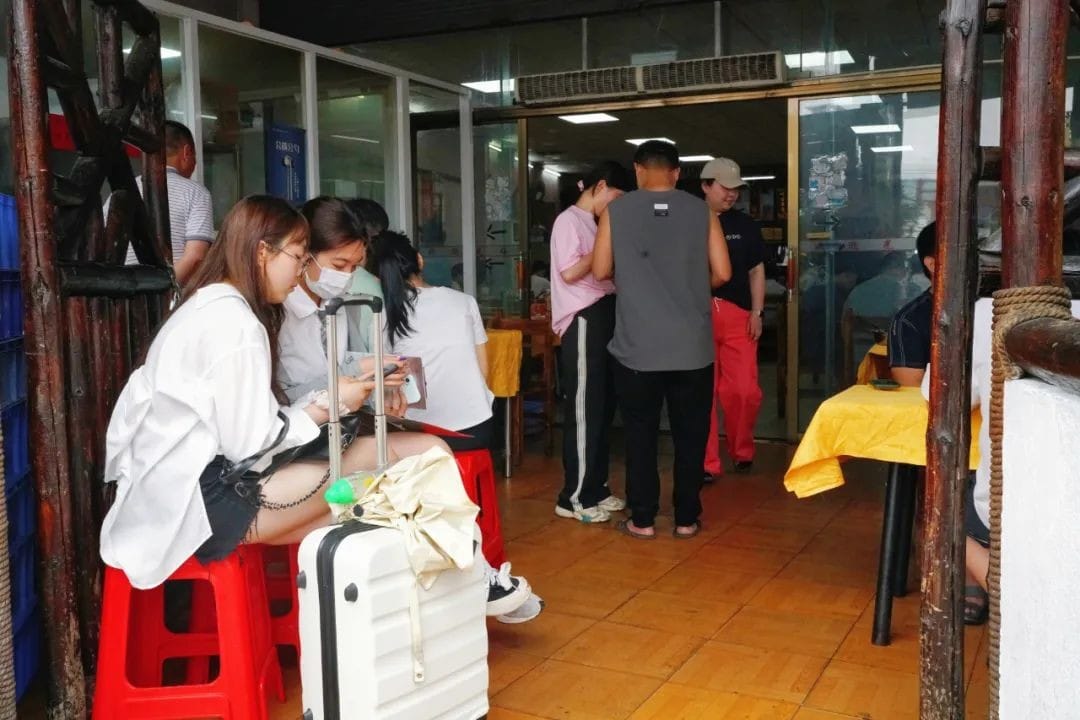
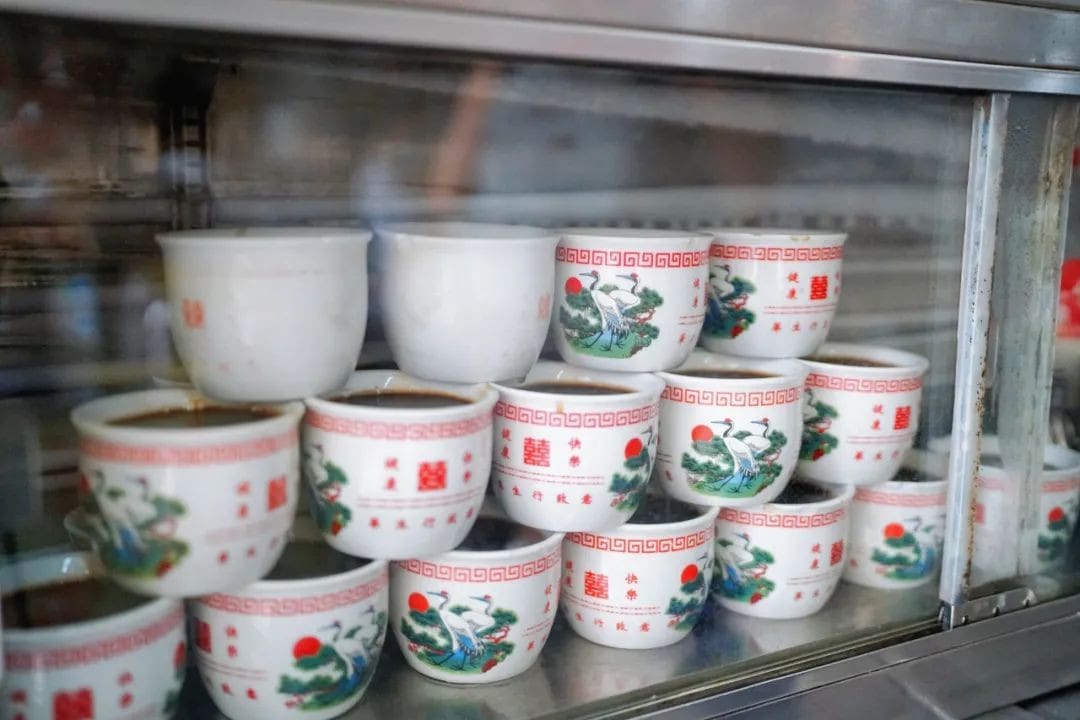
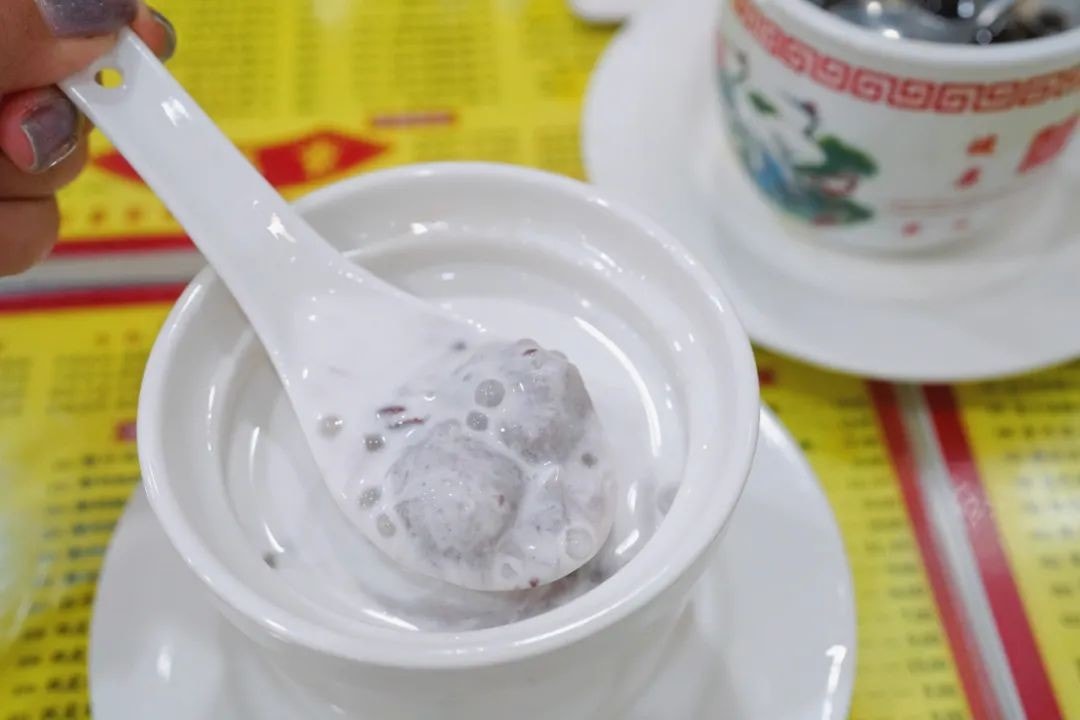
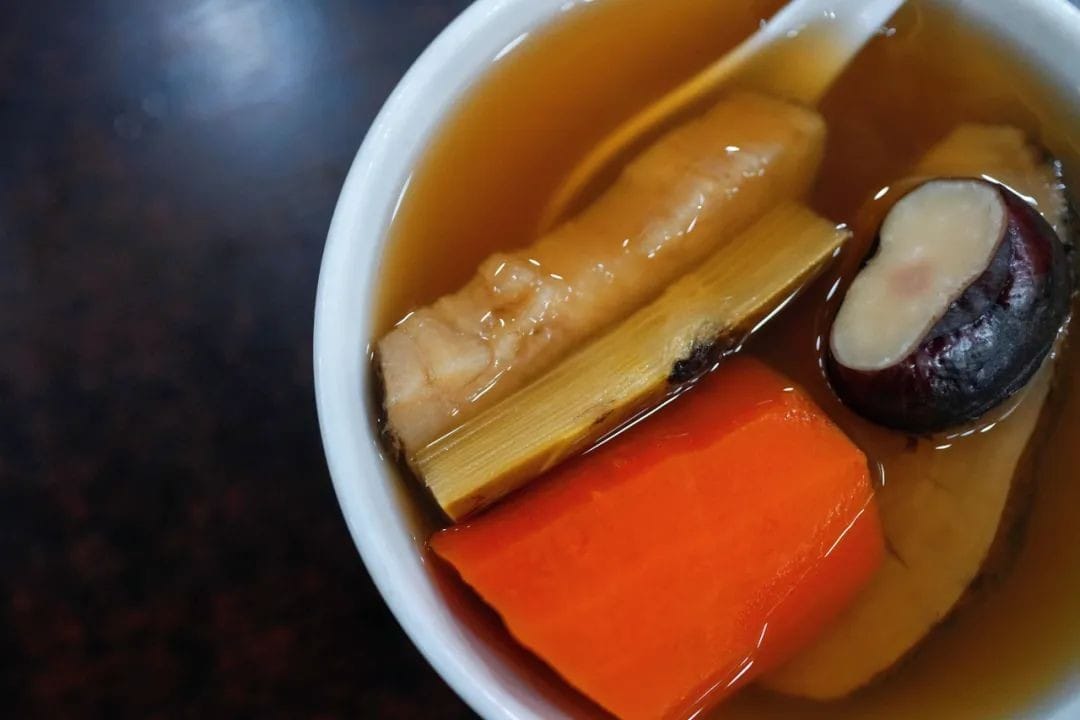
In the previous Shunde dining report, I arranged it according to the timeline from morning to night. To avoid making you “run back and forth,” this dining report will be divided into two parts: Daliang and Ronggui.
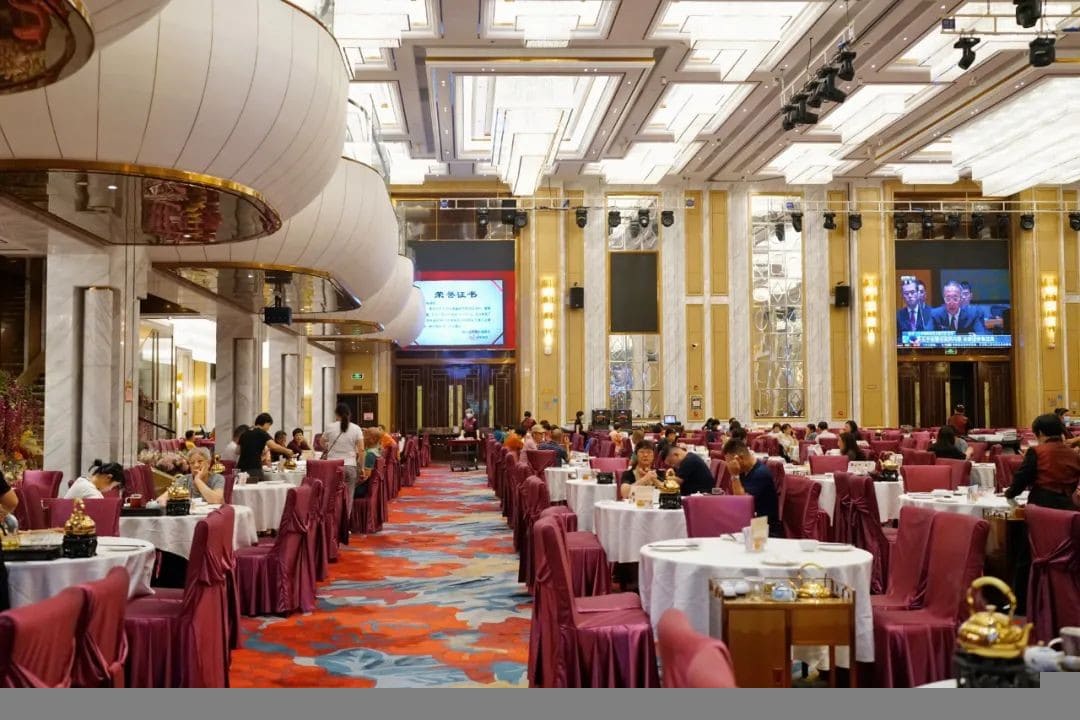
Without further ado, let’s start eating~
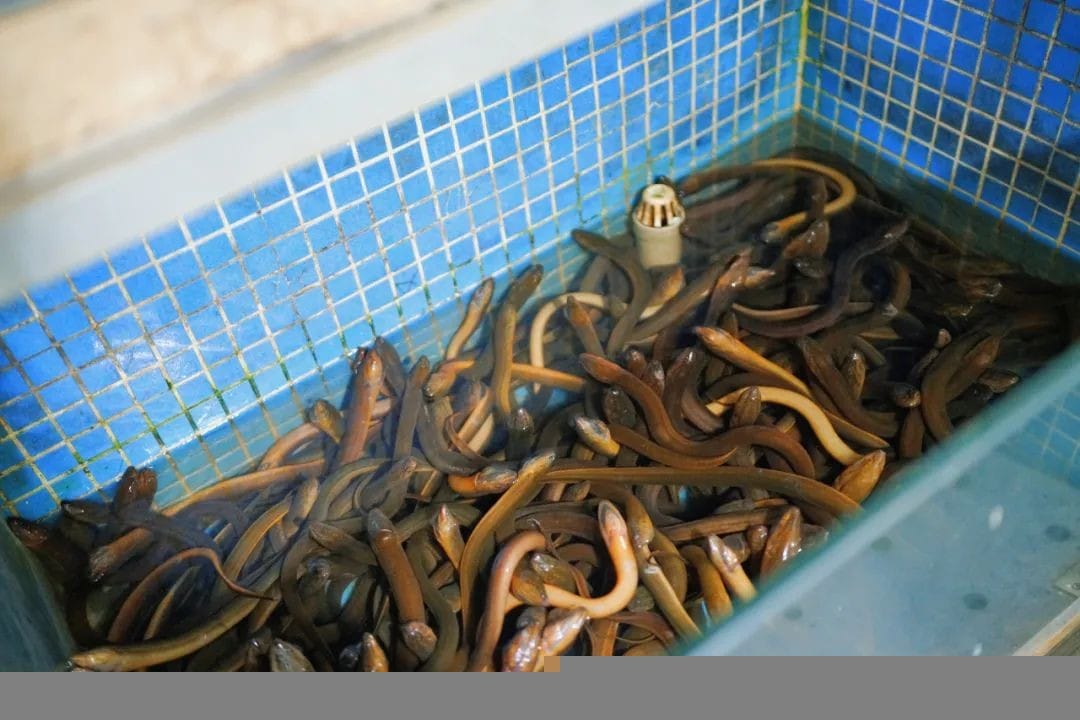
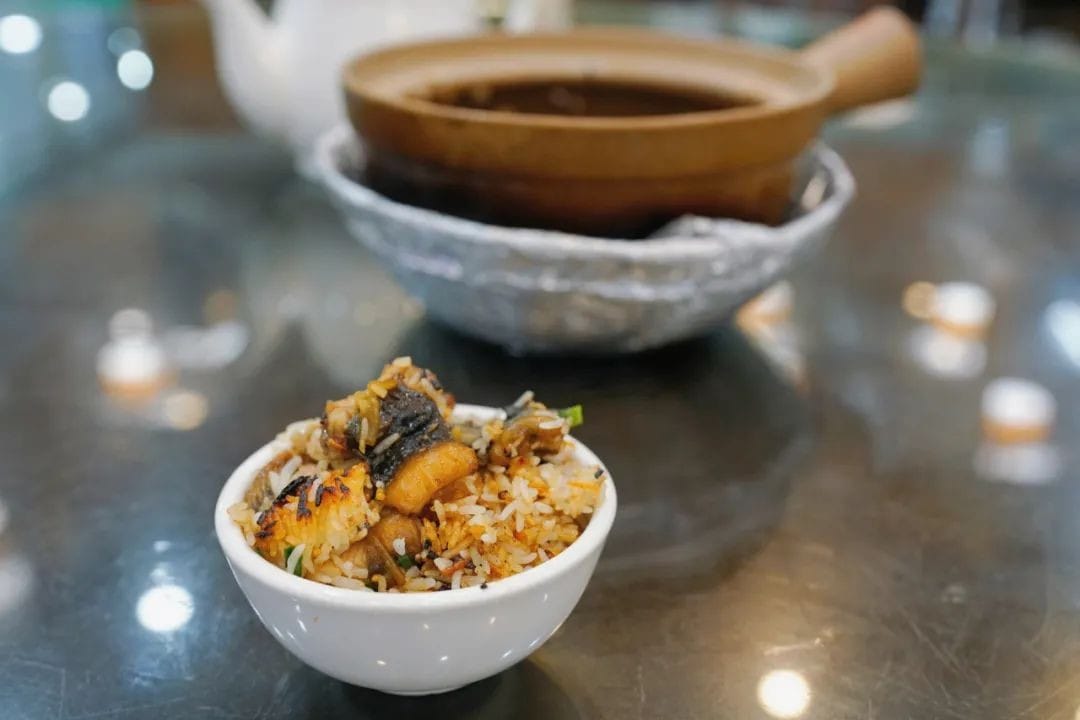

🥛🍲🥢

Daliang Section

Roast Goose Again (Daliang Branch)
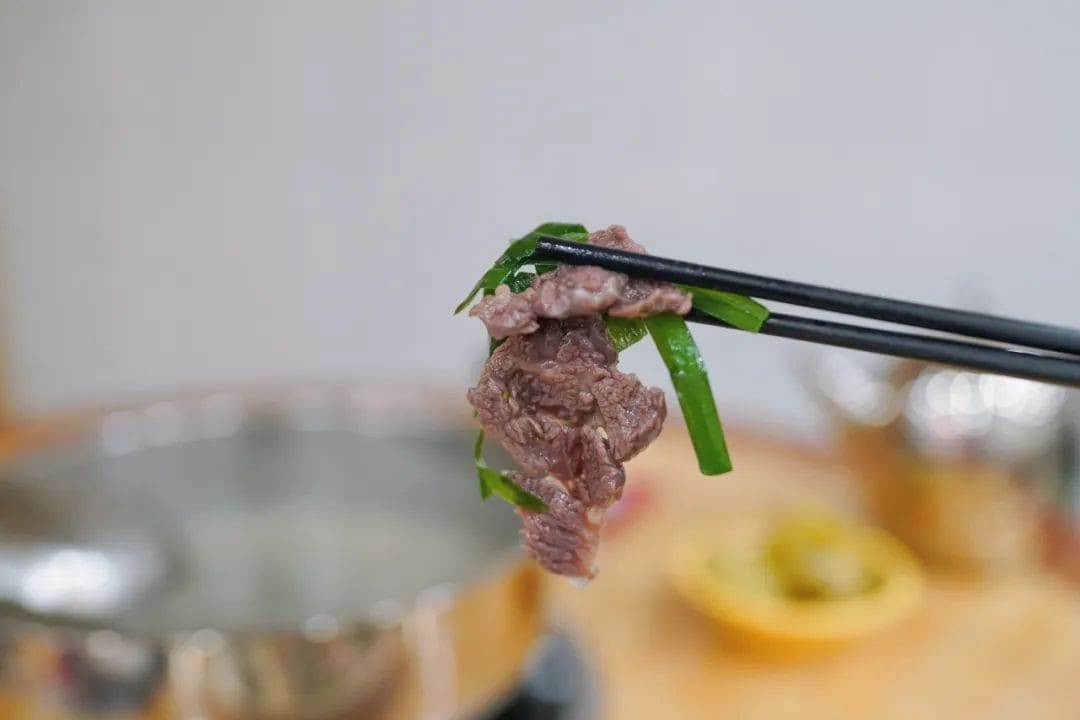
📍: No. 19, Guangyuan Road, Jinliang Community, Daliang, Shunde District
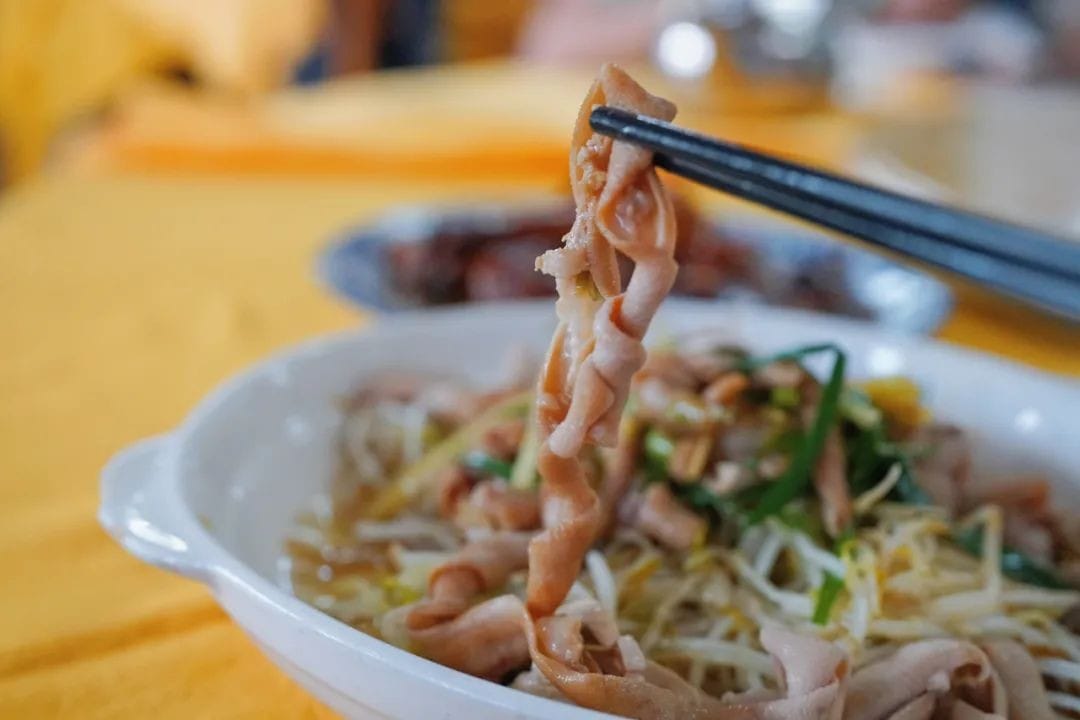
⏰: 11:00-14:00, 16:30-21:00
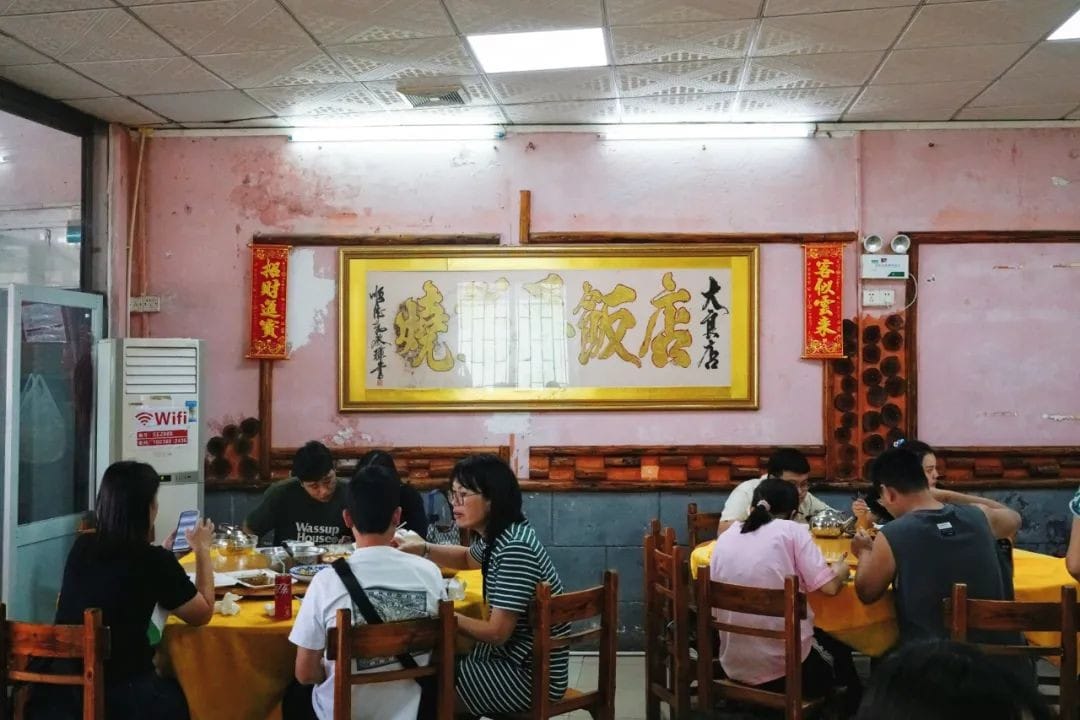
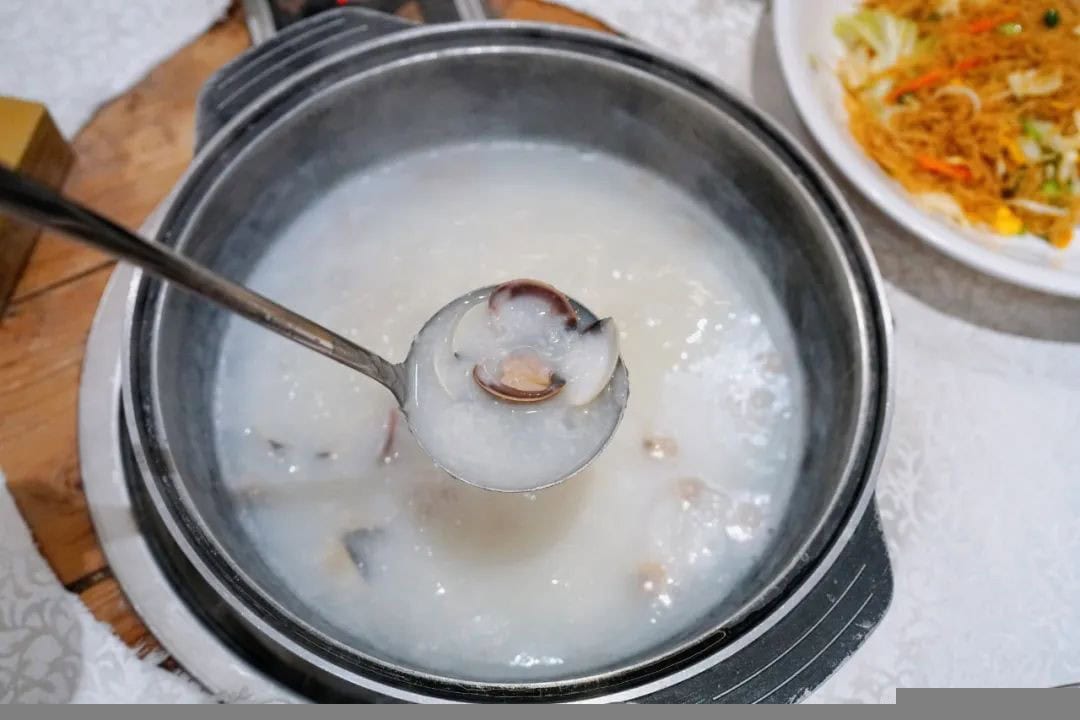
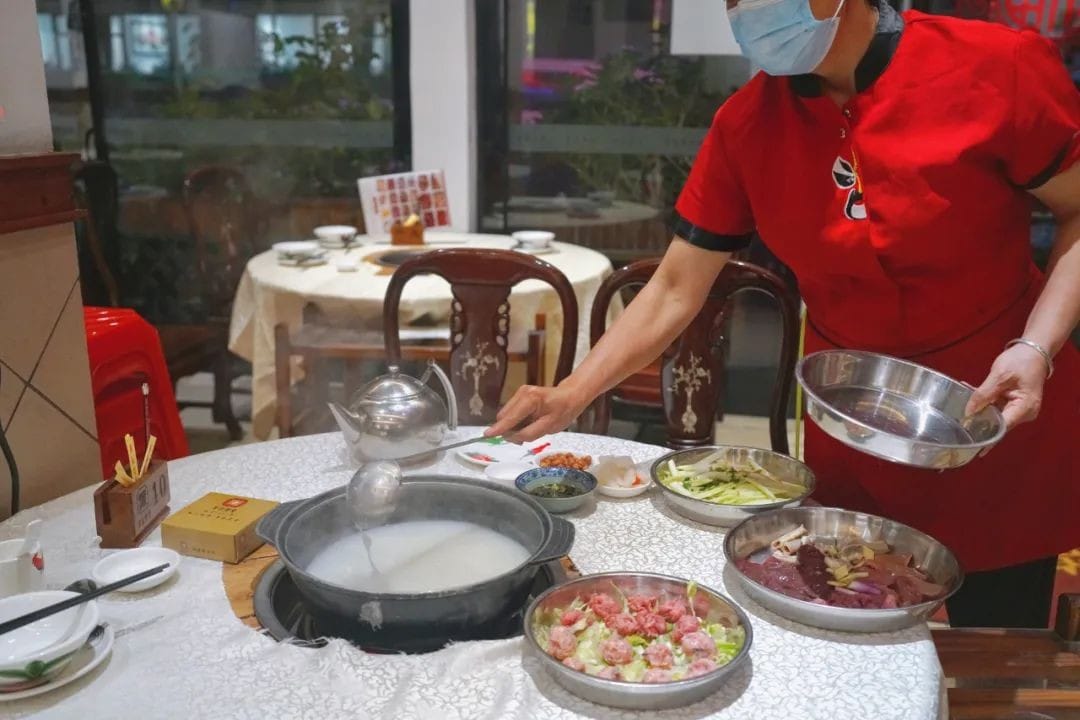
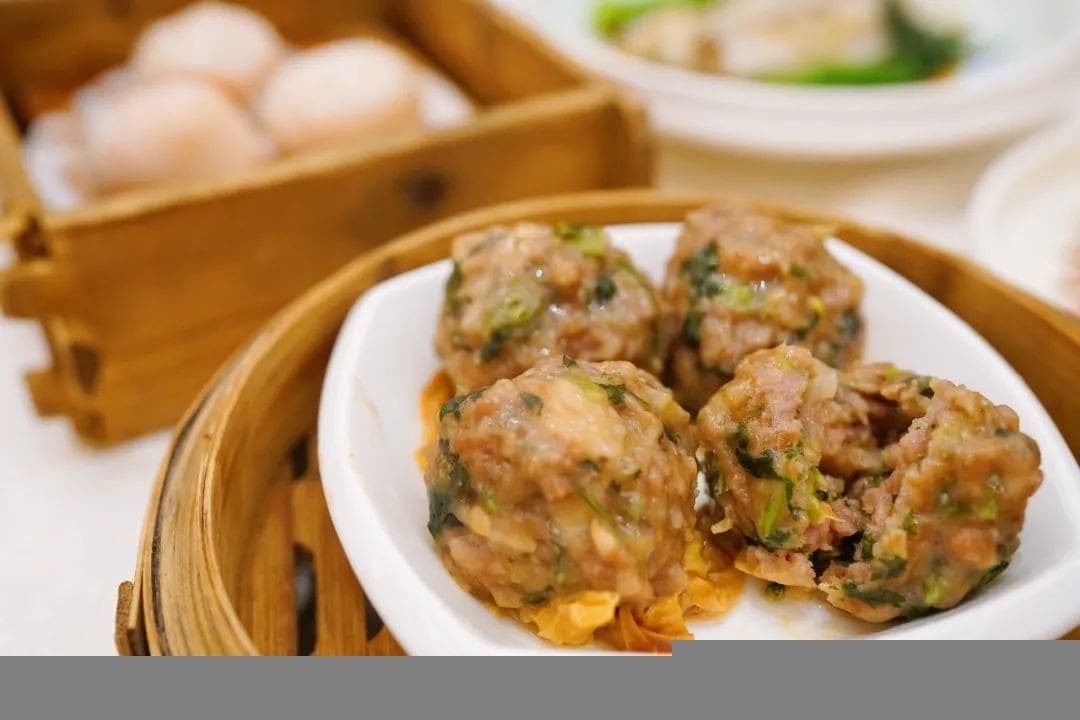
I am an “anti-queueist,” and Roast Goose Again is the only shop in Shunde that made me wait for a table.
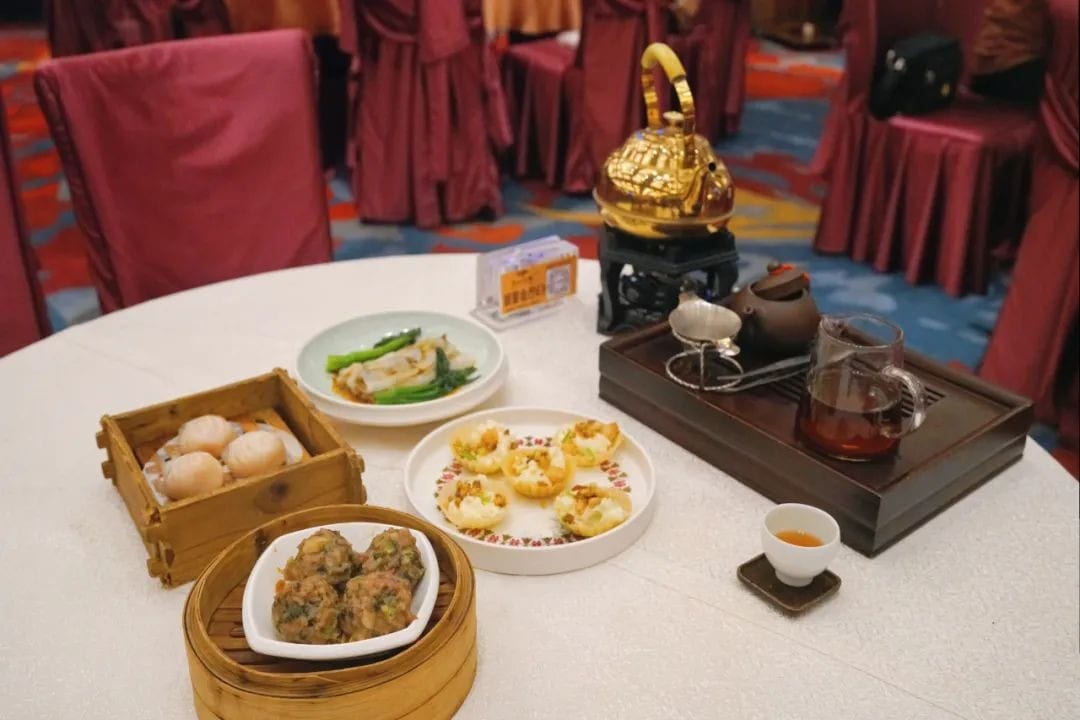
# Translation
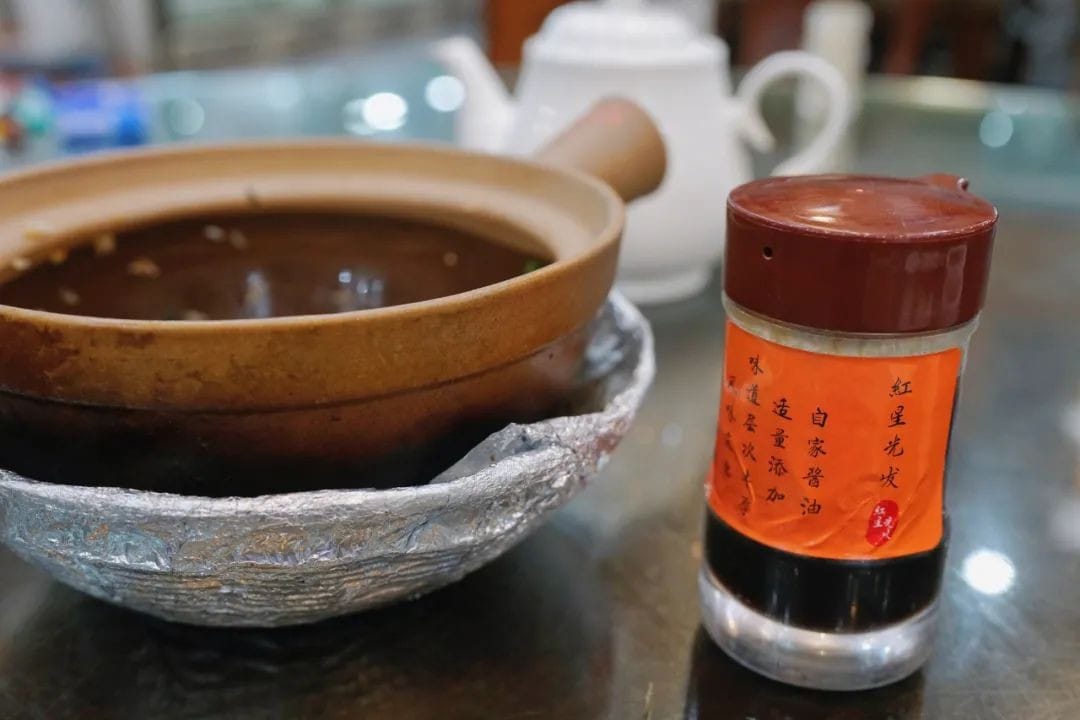
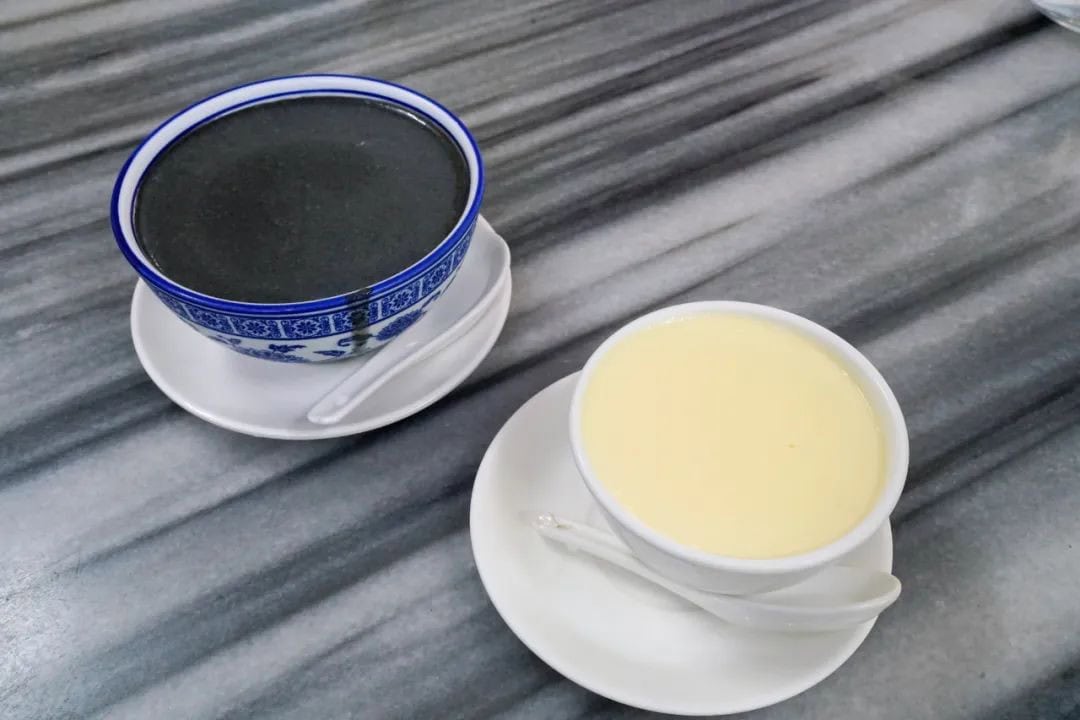
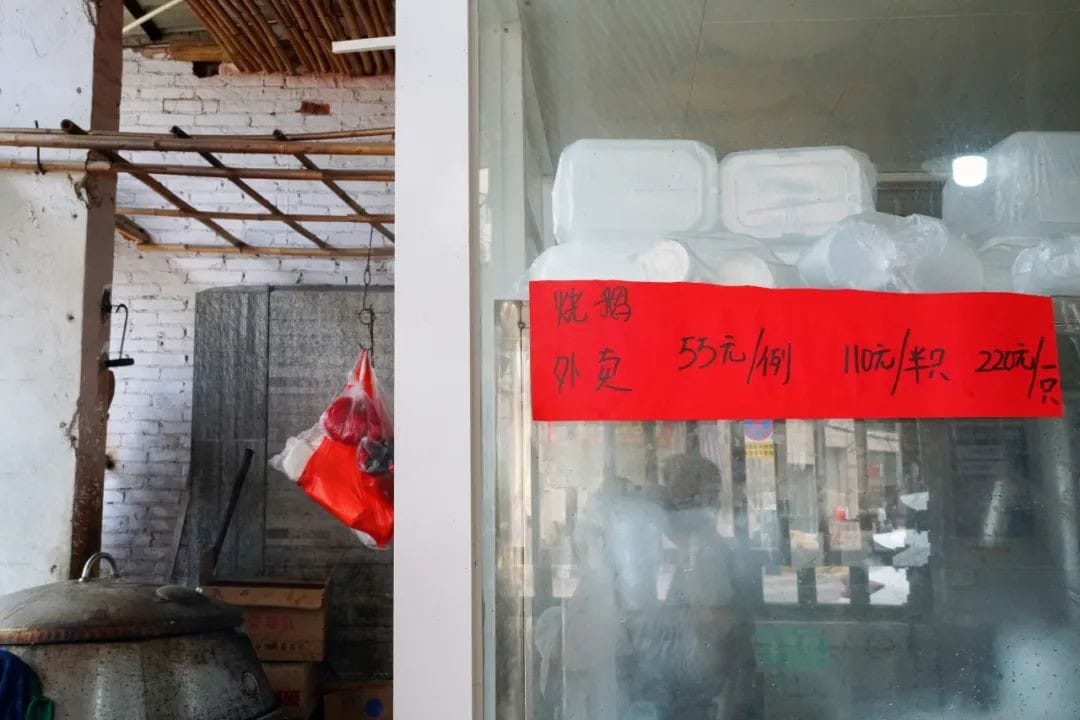
Waited for about half an hour. There were quite a few diners with suitcases, but fortunately, the final conclusion was that it was worth it.
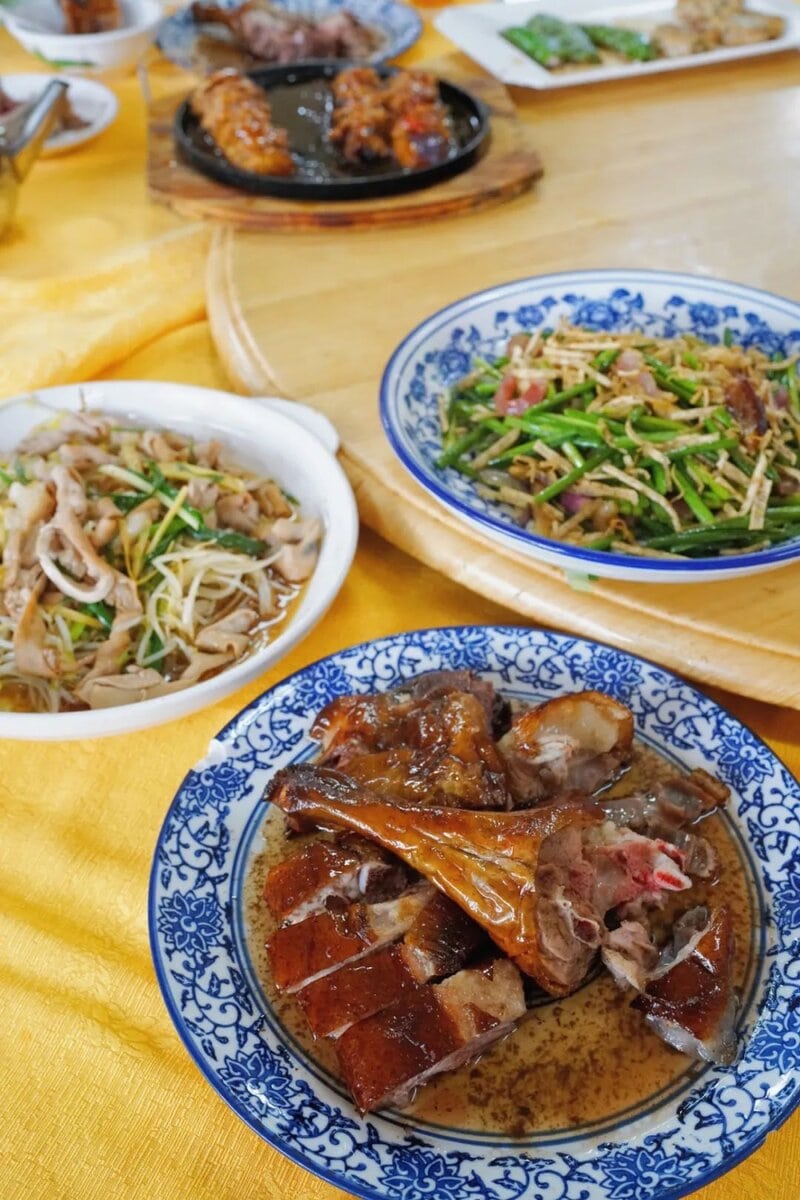
In the Cantonese region, the number of small shops selling roasted meats is more than convenience stores, but usually, they roast a large pot at a time until it’s sold out.
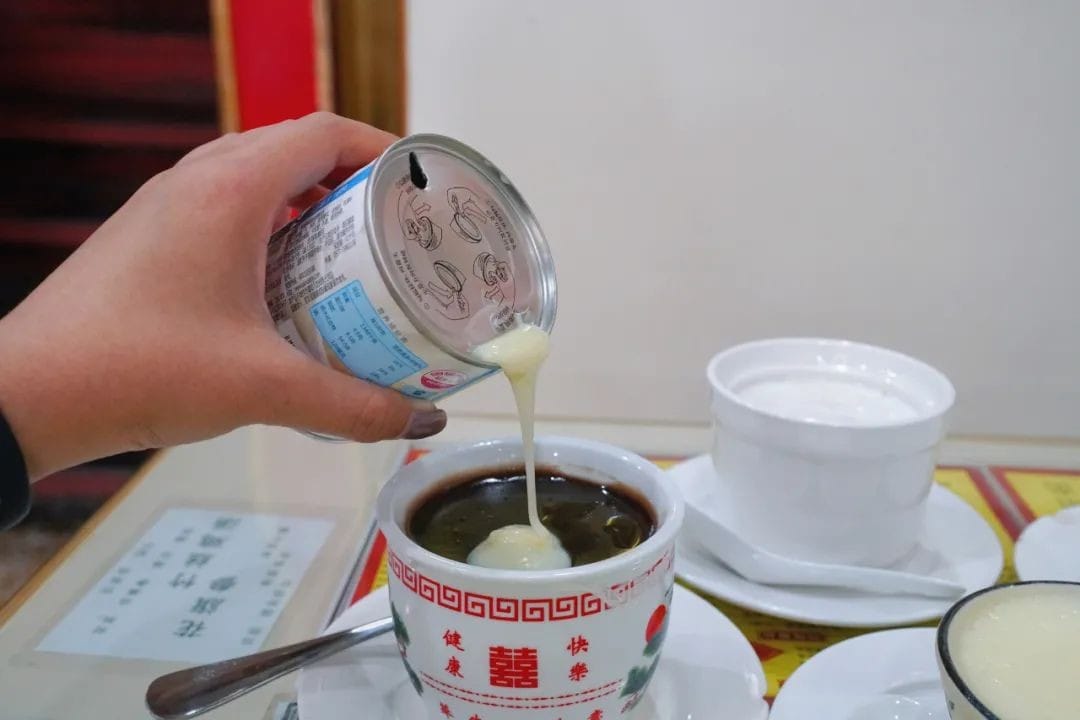

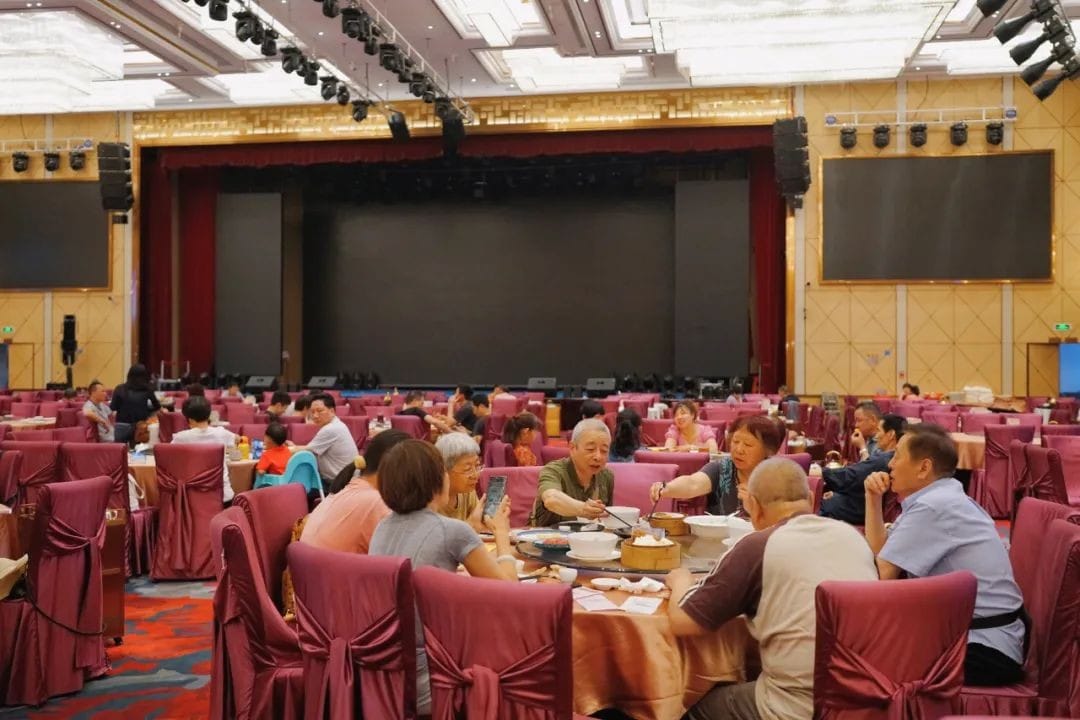
The third-generation owner of this roasted goose shop is a passionate “evangelist” of freshly roasted charm.
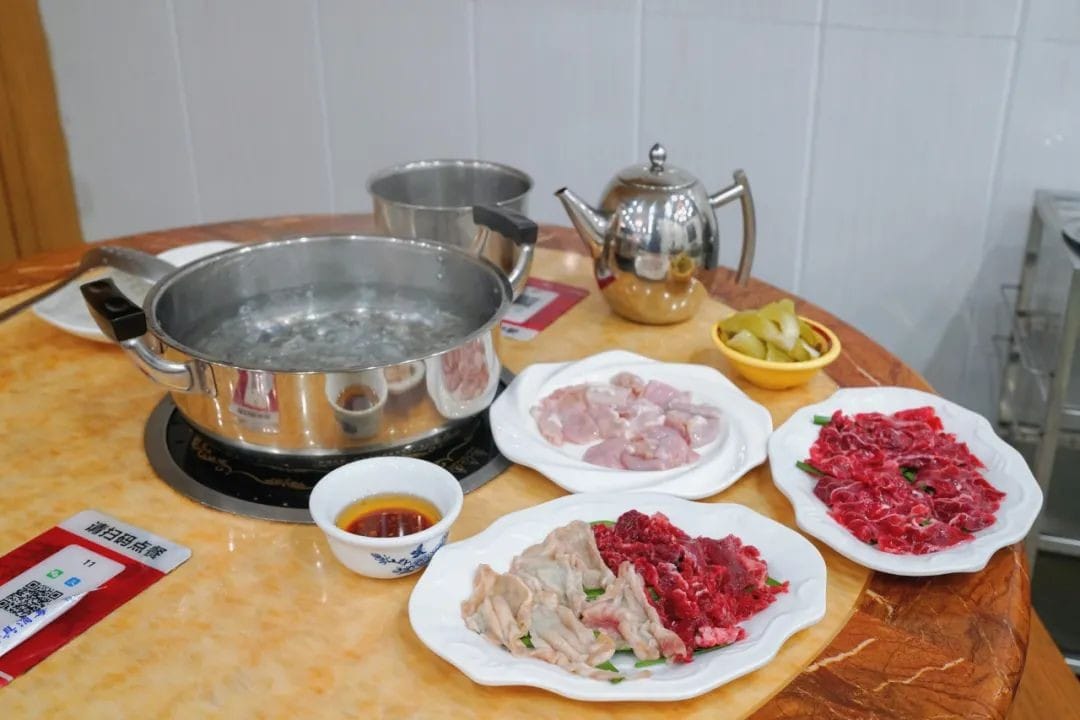
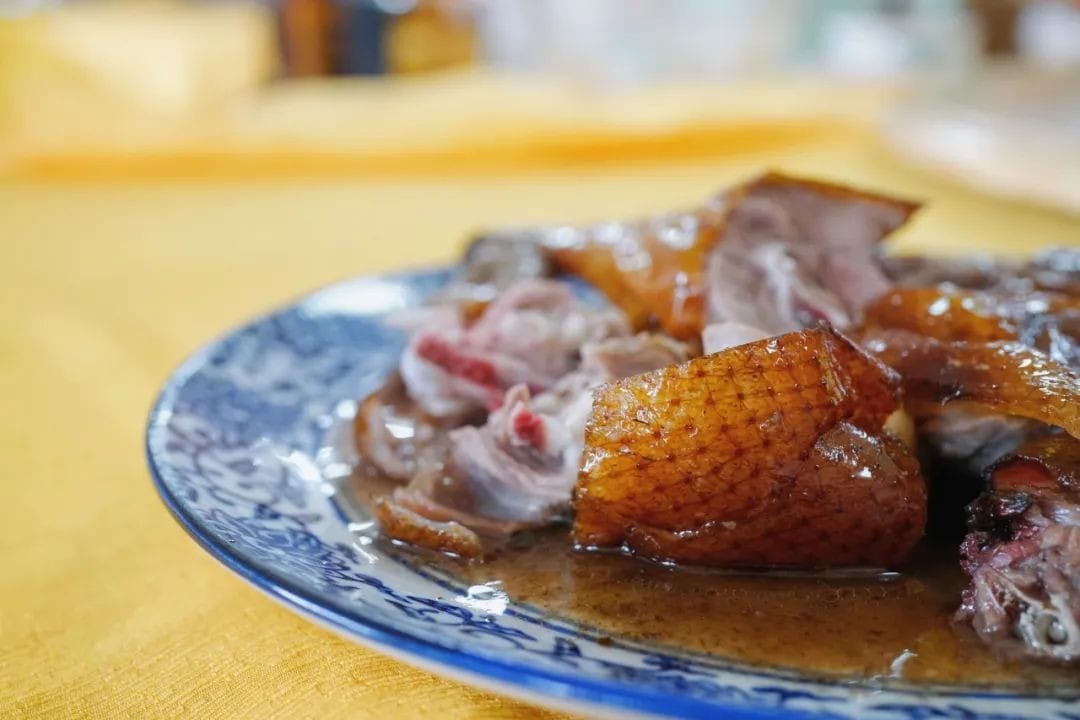
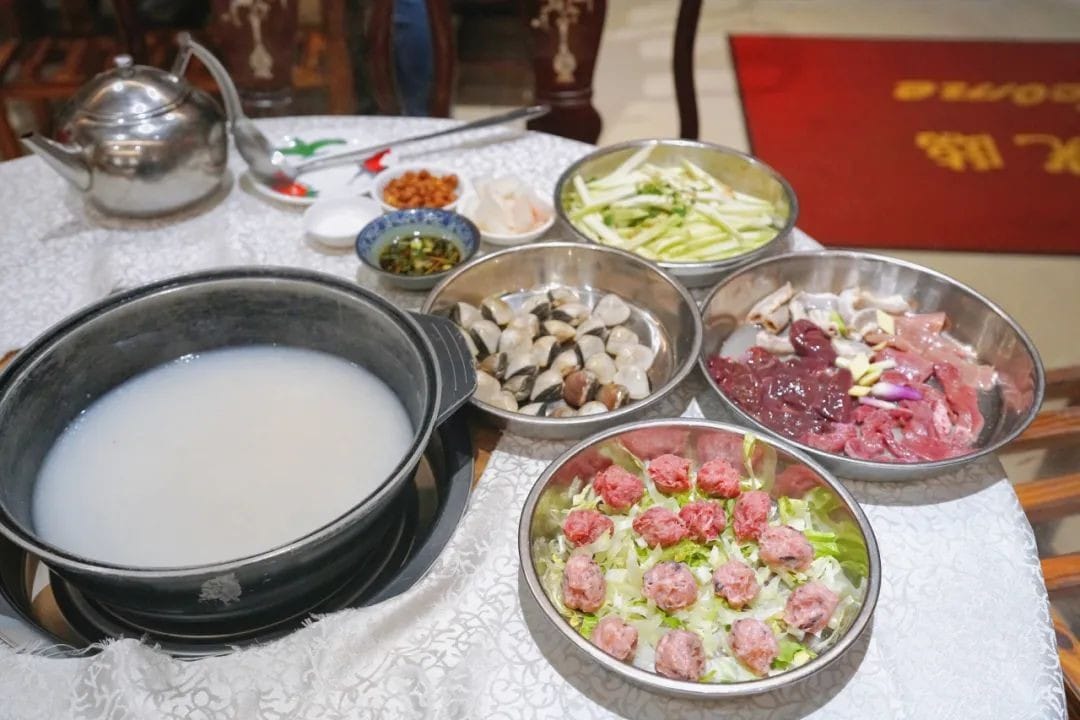
They believe that the golden tasting time for a roasted goose is only 30 minutes after it comes out of the oven.
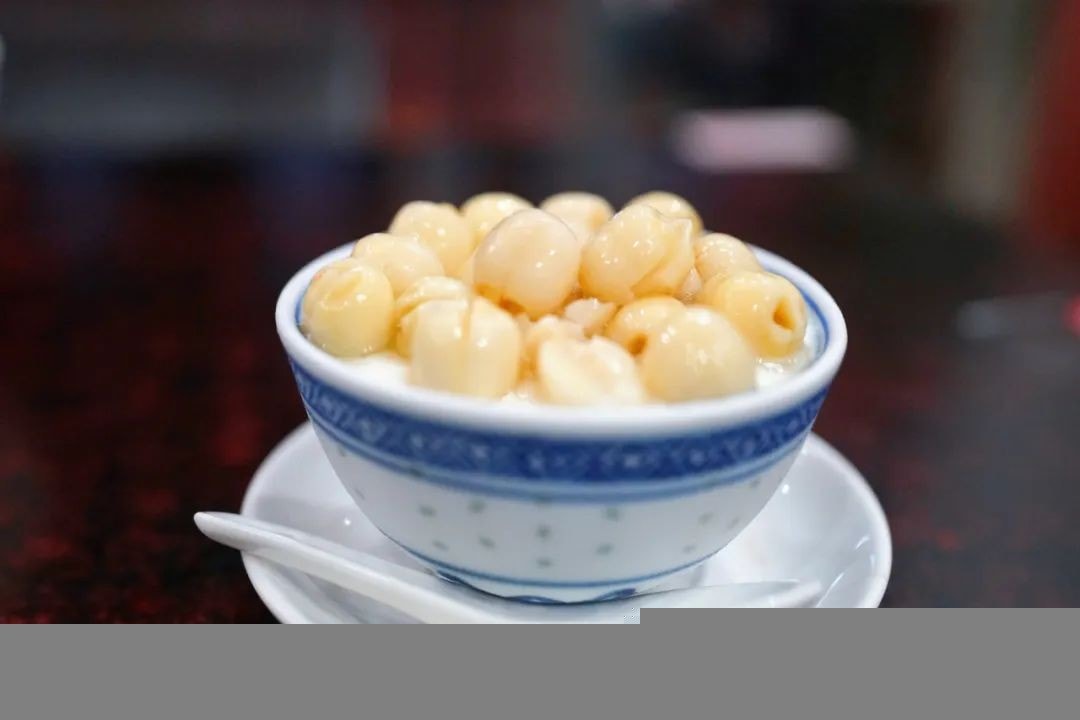
So, there are always fresh geese lined up by the roasting oven, waiting to become the next batch of diners’ praise.
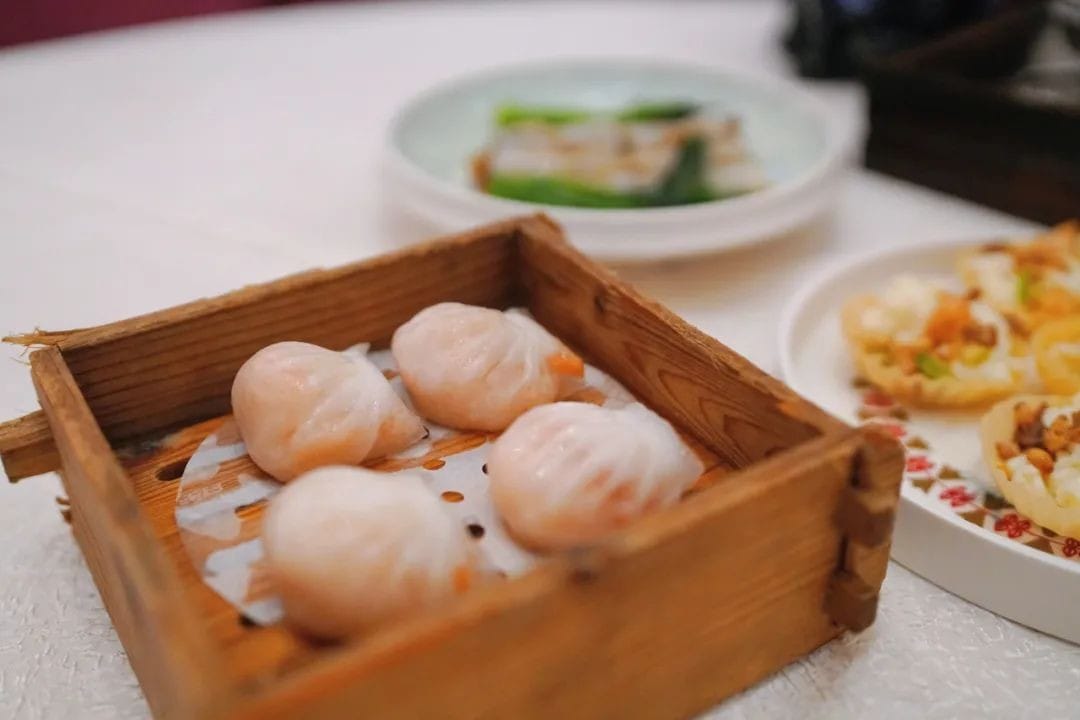
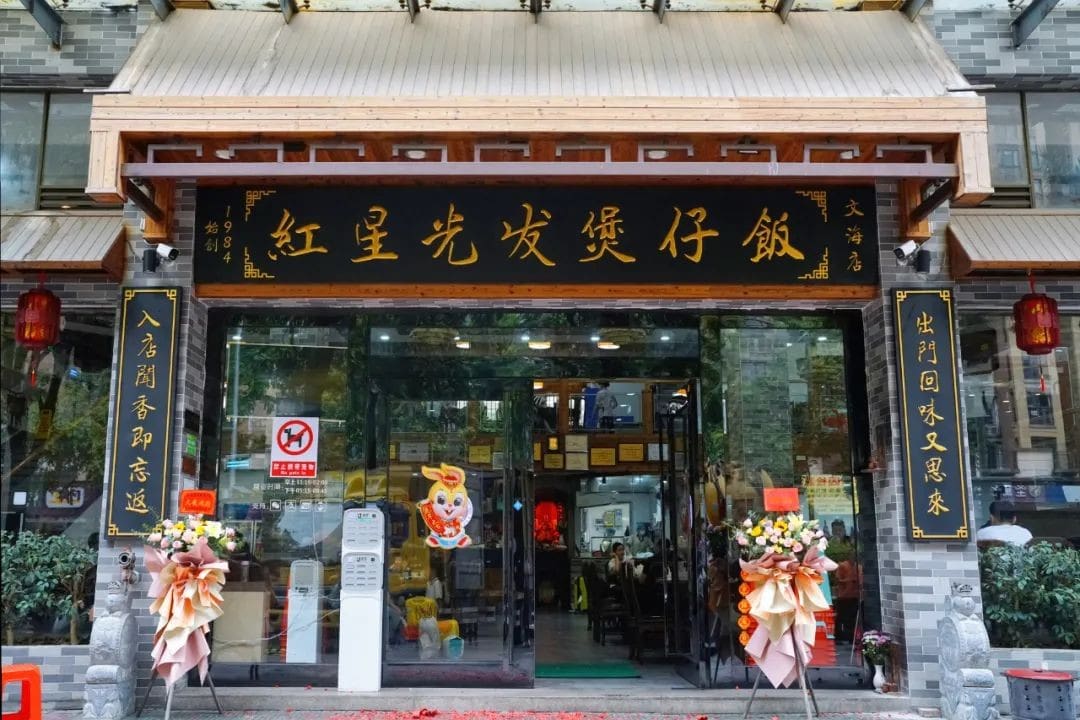
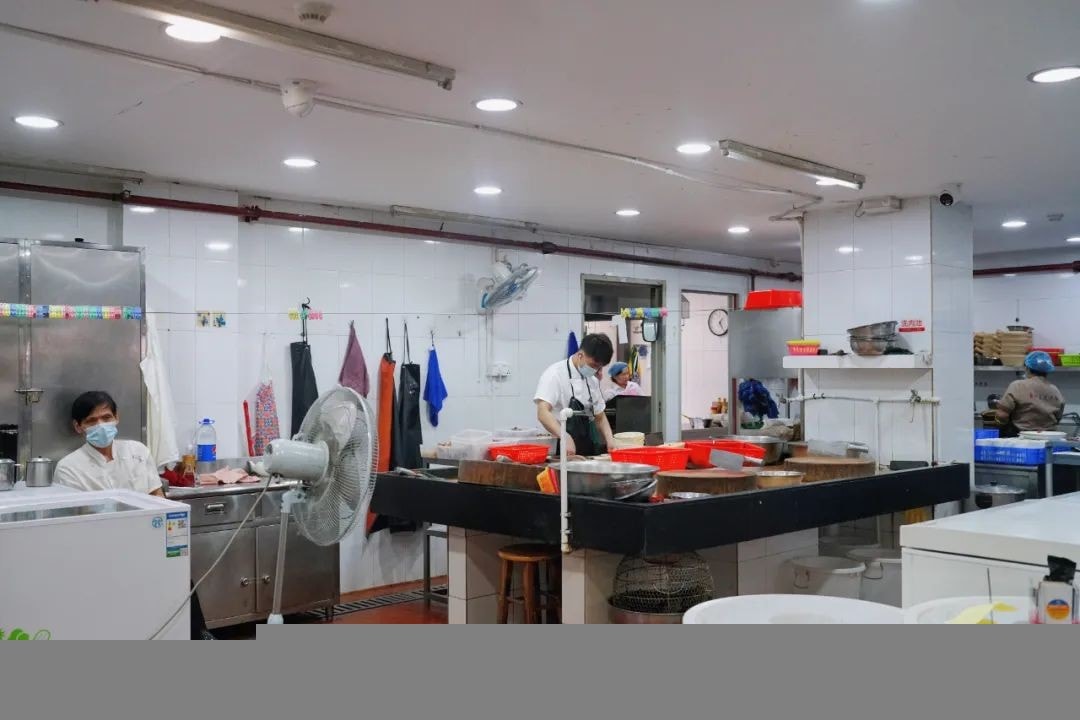
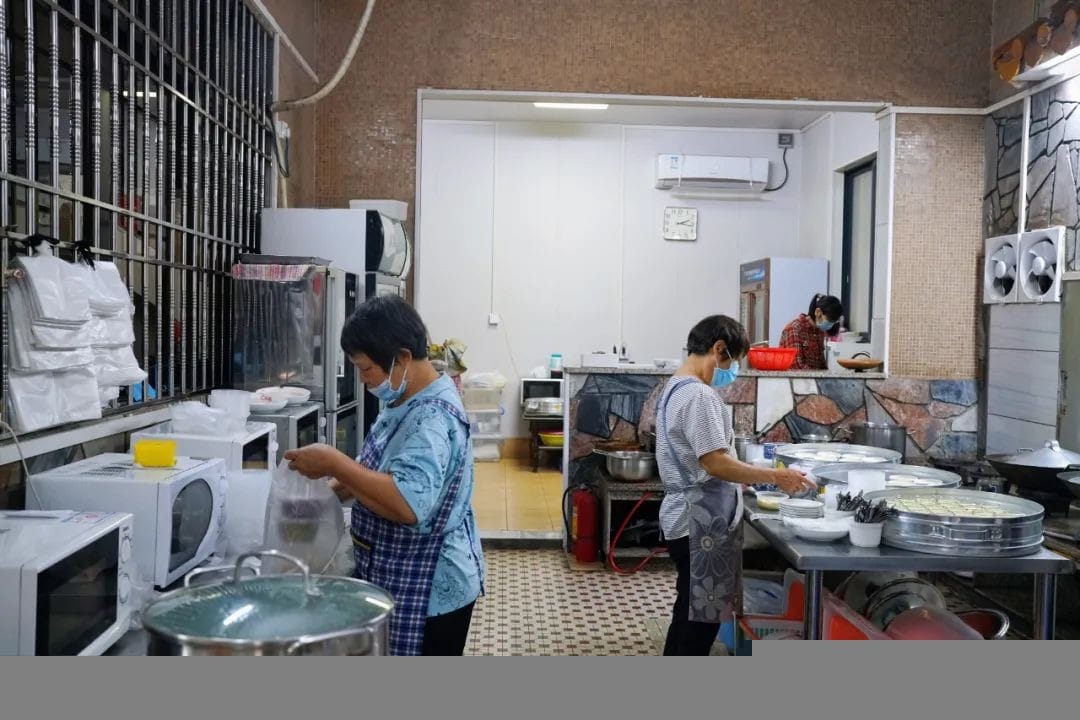
The portion of the roasted goose is very substantial. On the left is a portion for 55 yuan, enough for two people; on the right is half a goose for 110 yuan, which is very reasonable.
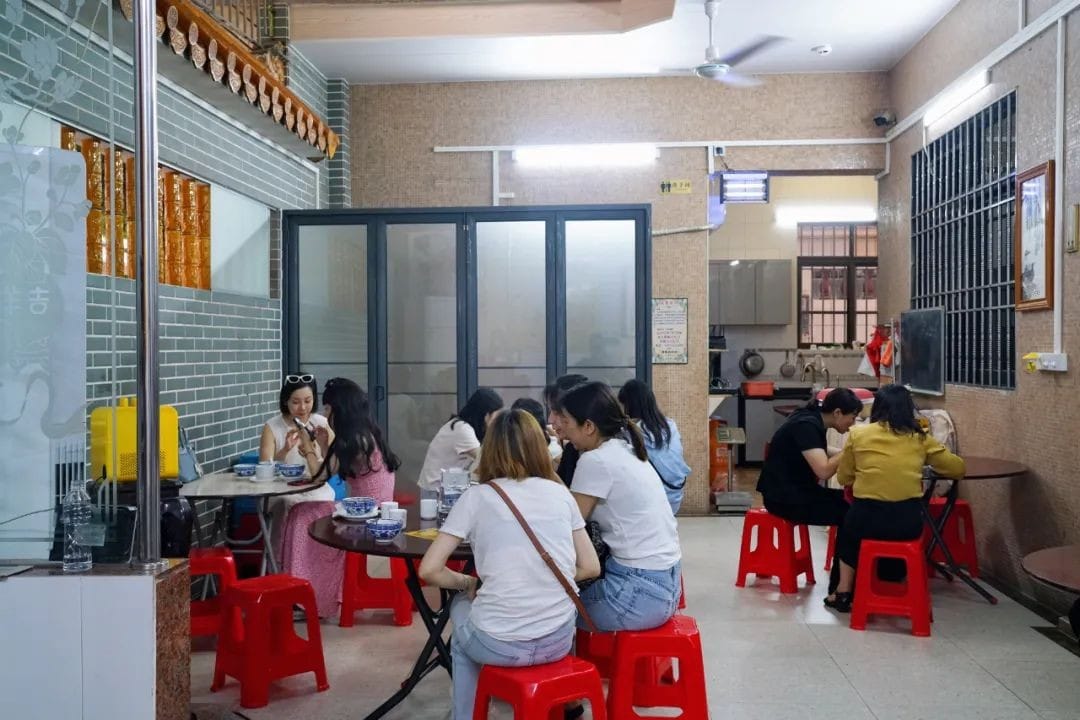
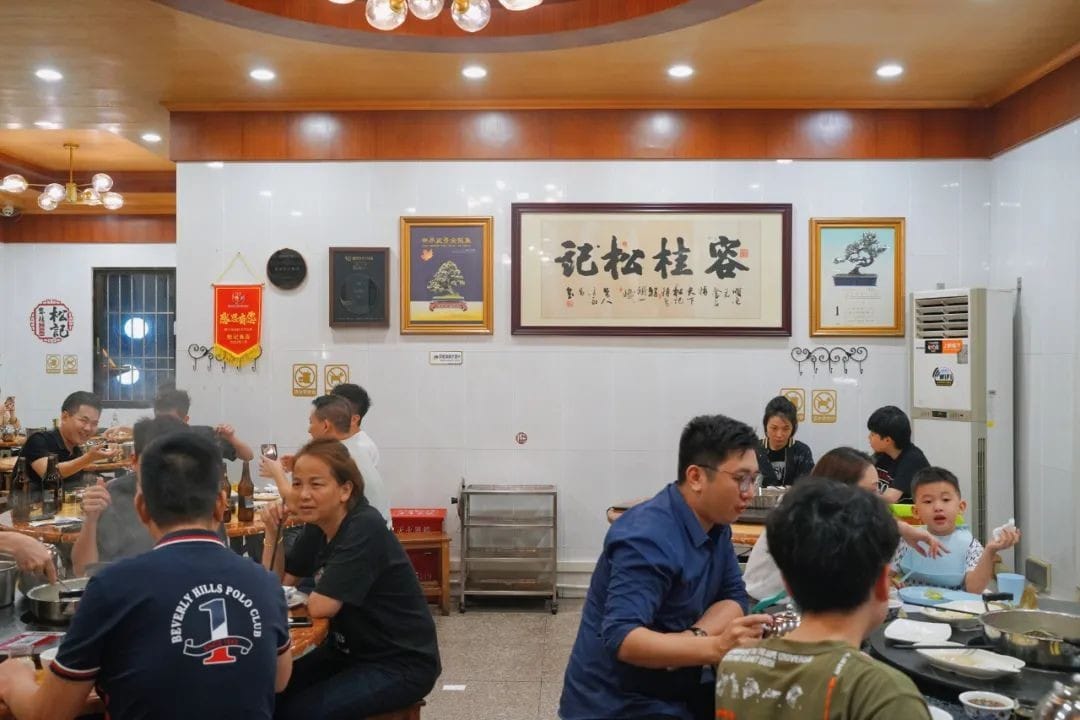
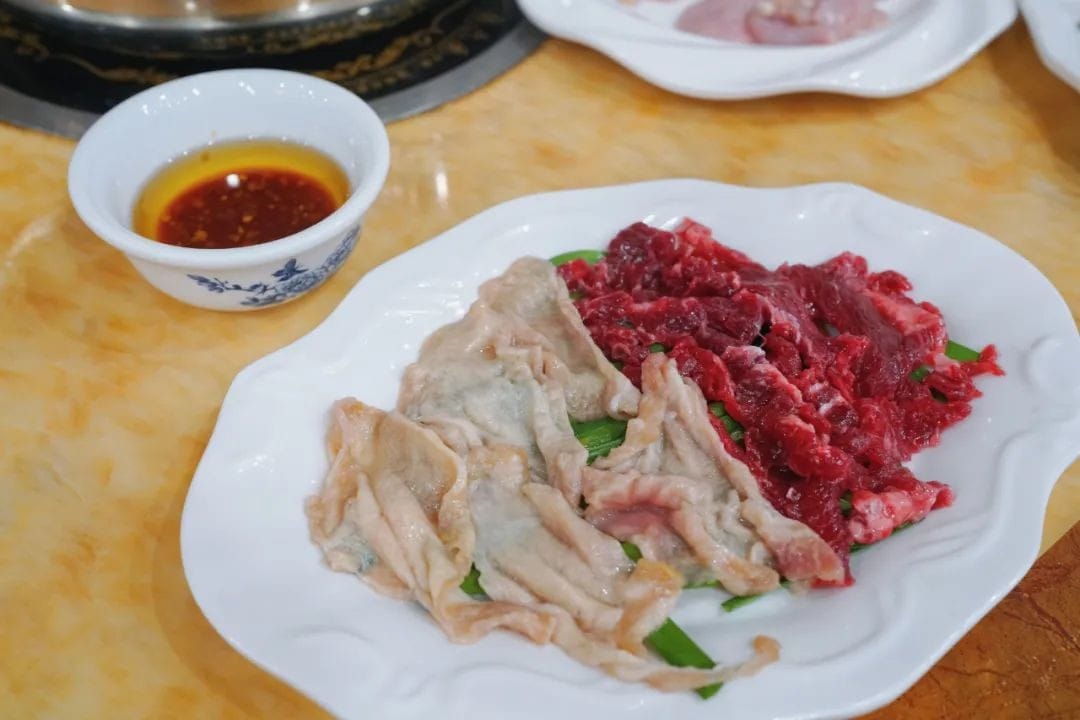
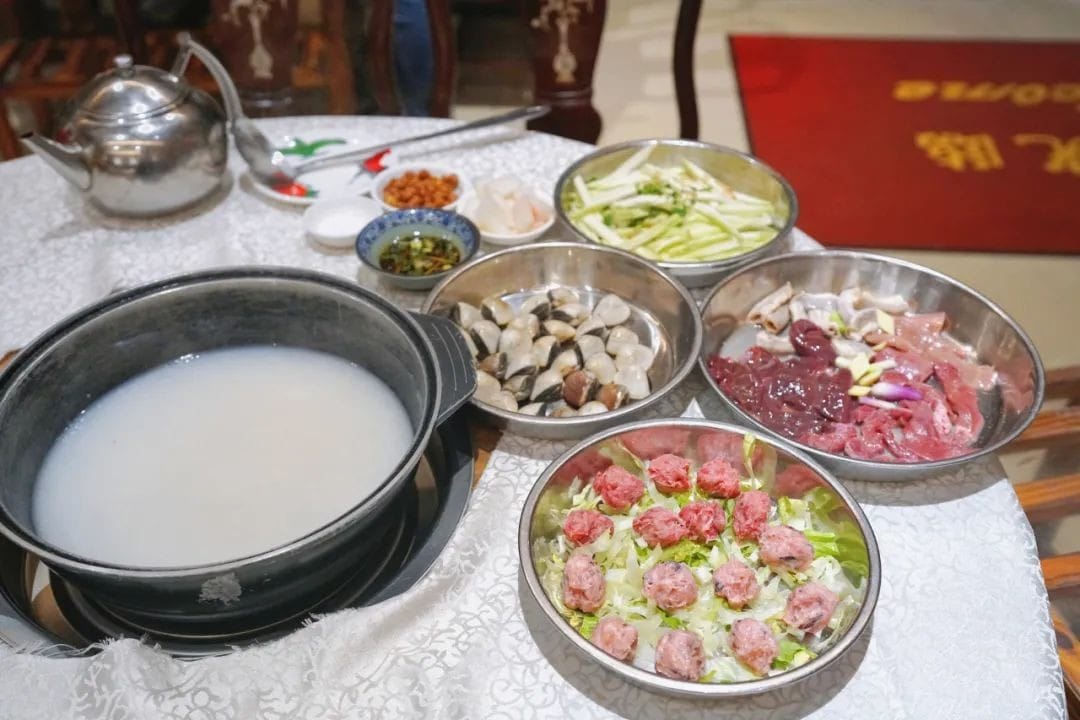
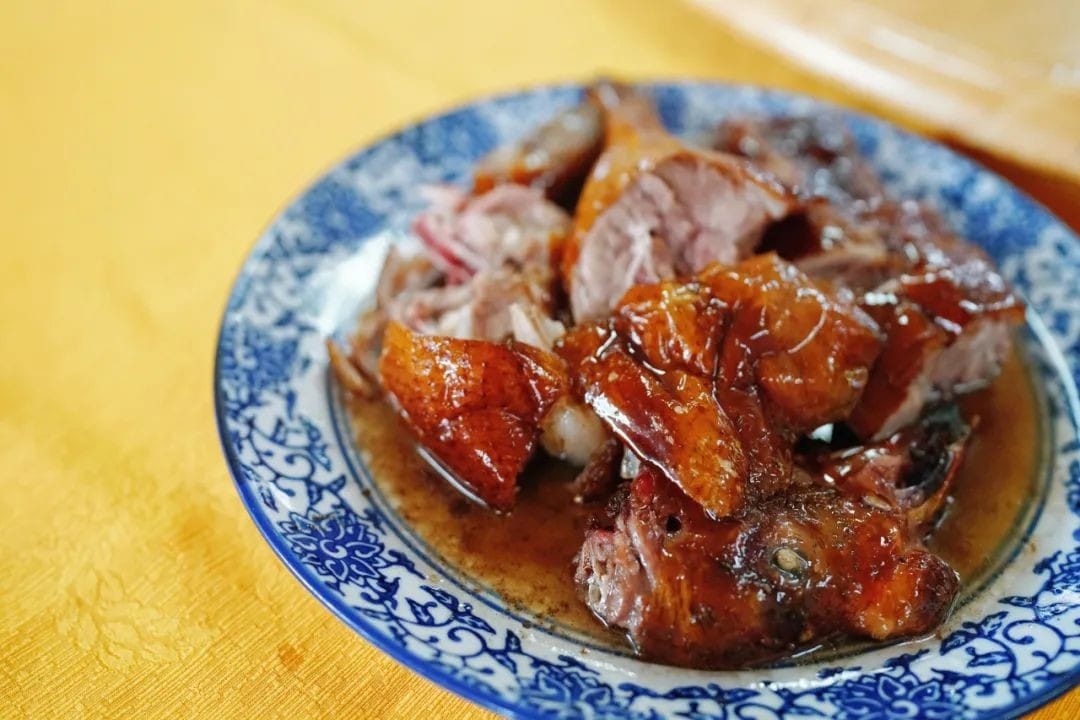
The roasted goose is still hot when served. The geese used by this shop probably insist on dancing beautiful ballet in private, as there is hardly any fat under the skin.
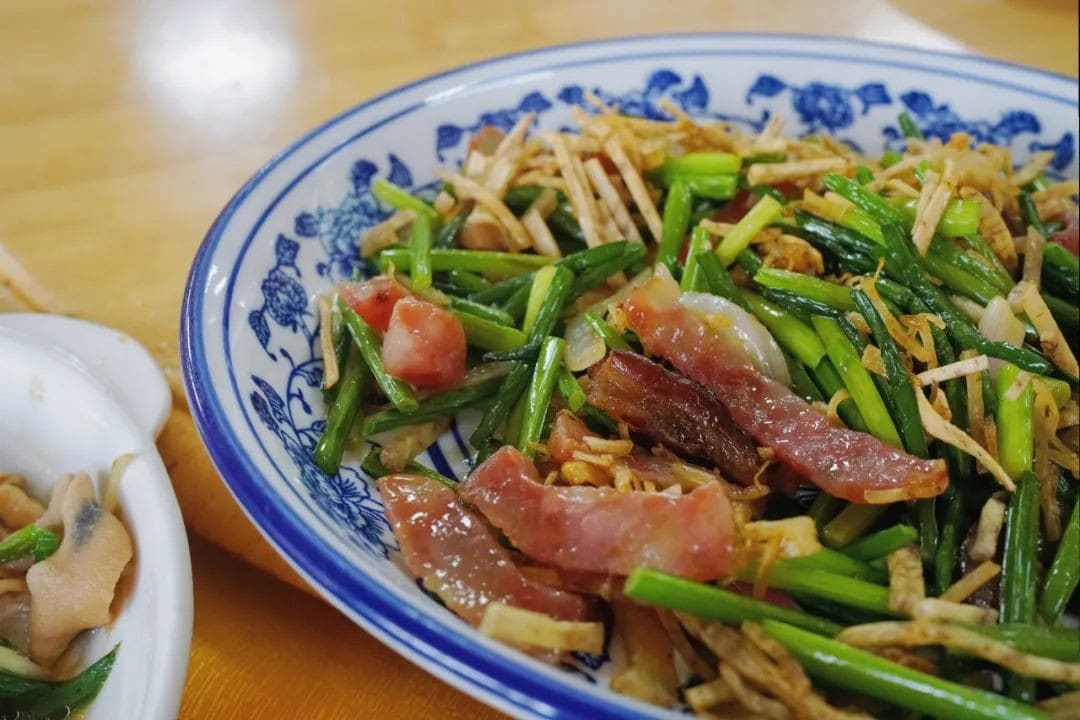

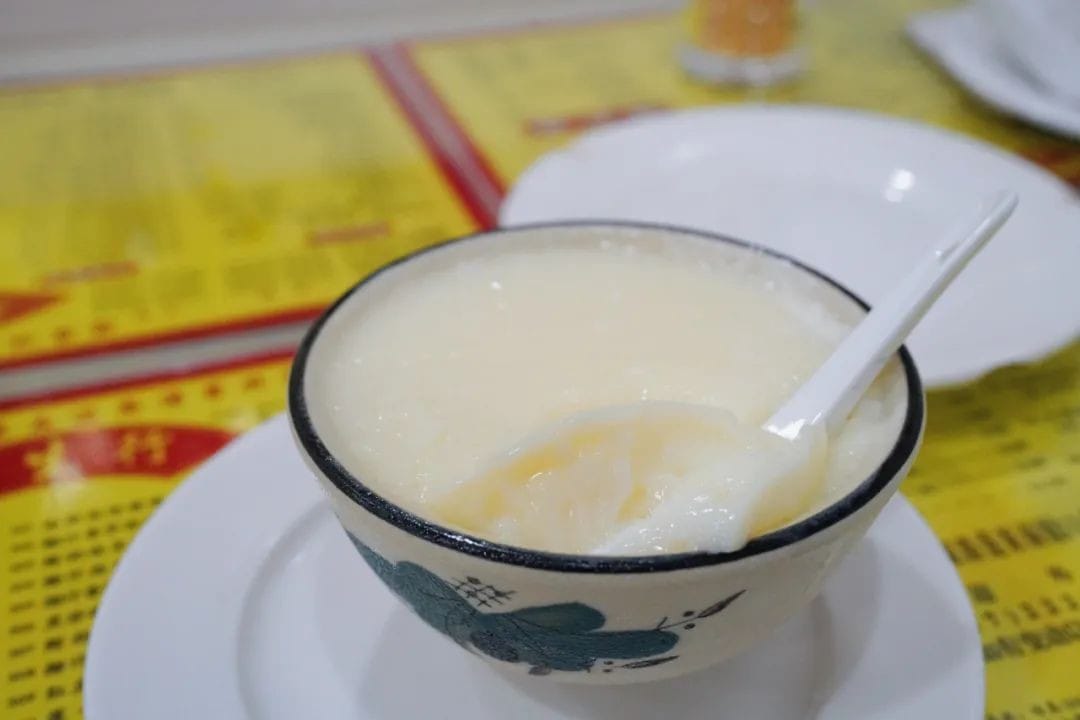
The already minimal fat is further reduced by the heat, enhancing the wonderful process of the fat melting in the mouth.
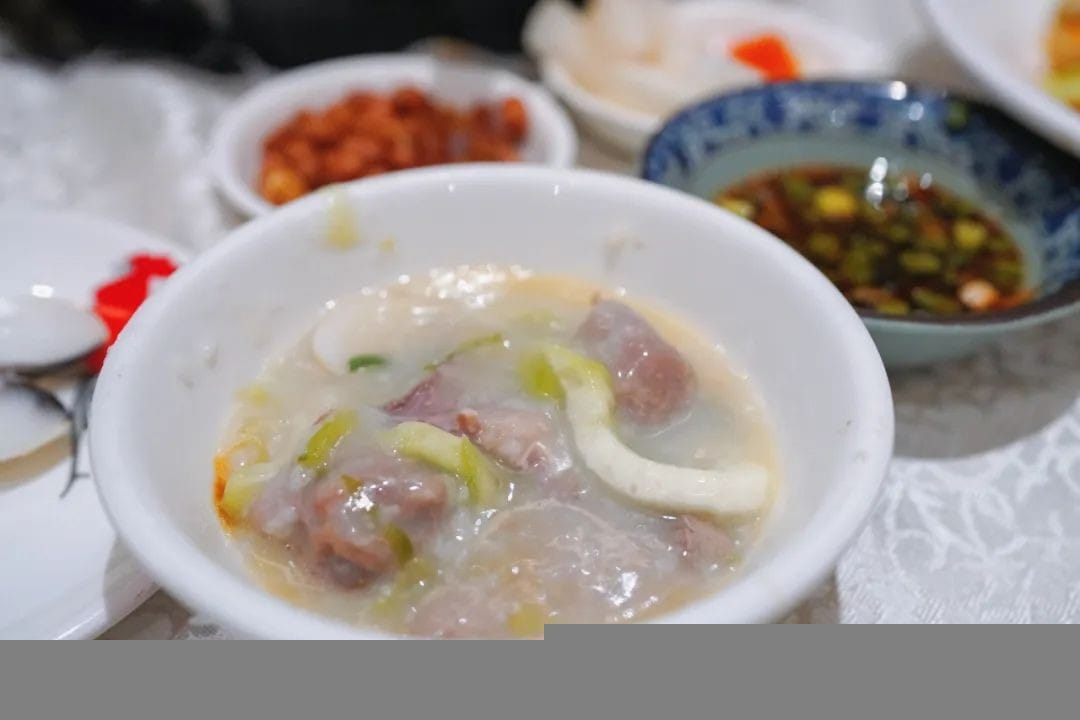
Having little fat has another advantage: the goose skin is so thin it can be translucent, like a thin veil wrapped around the goose, making it very appetizing just by its appearance.
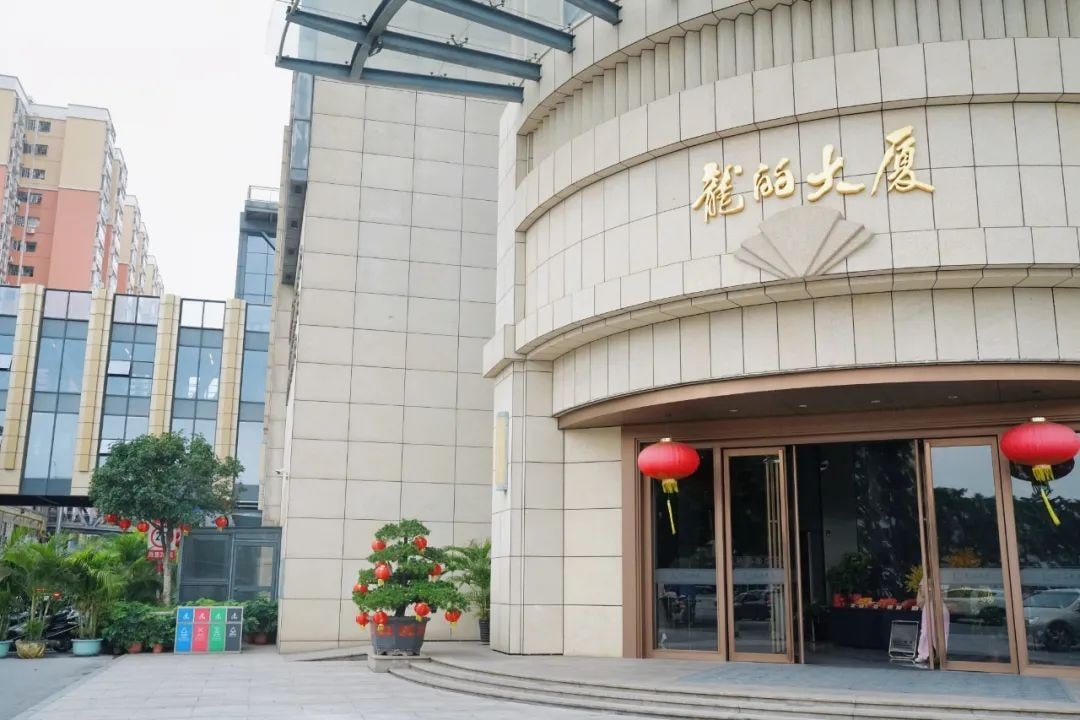
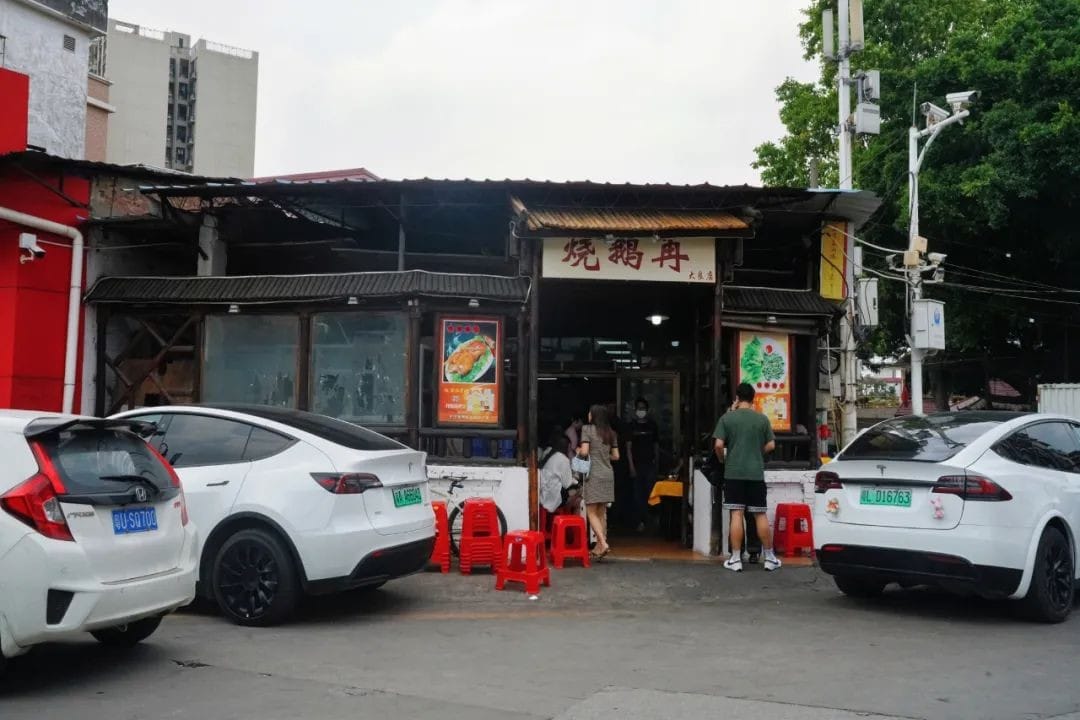
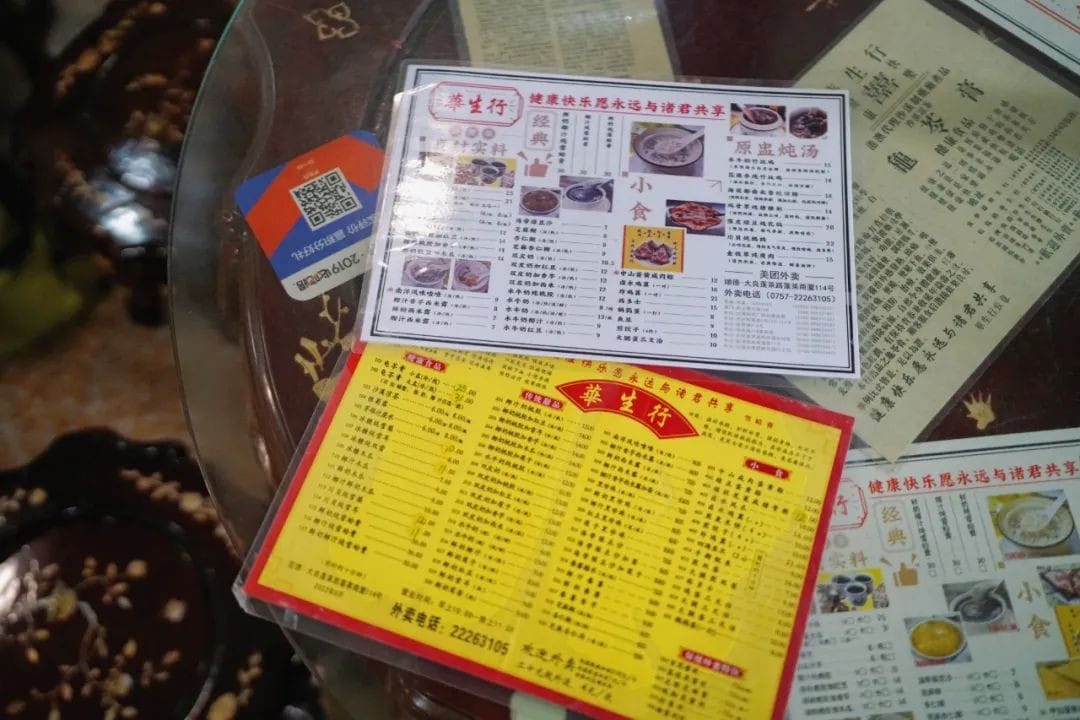
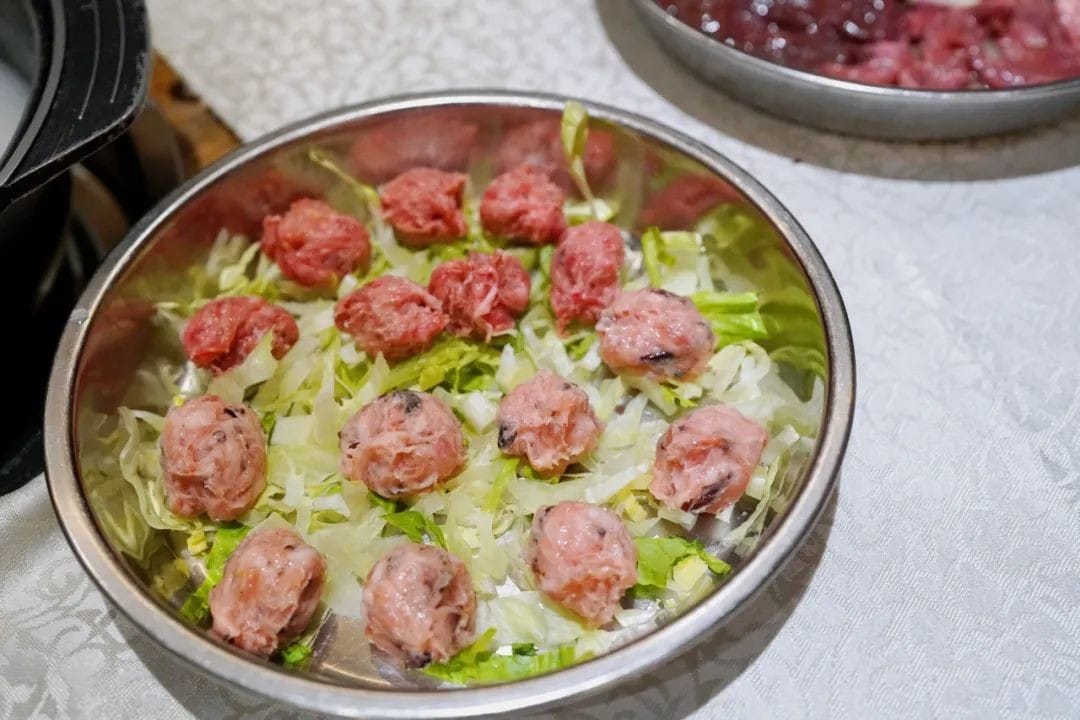
Moreover, their roasted goose is not served with plum sauce or any additional dipping sauce—the amount of juice that comes out when the goose is chopped is just right. Any extra sauce would be superfluous, as the rich juices of the goose meat itself are already sufficient.
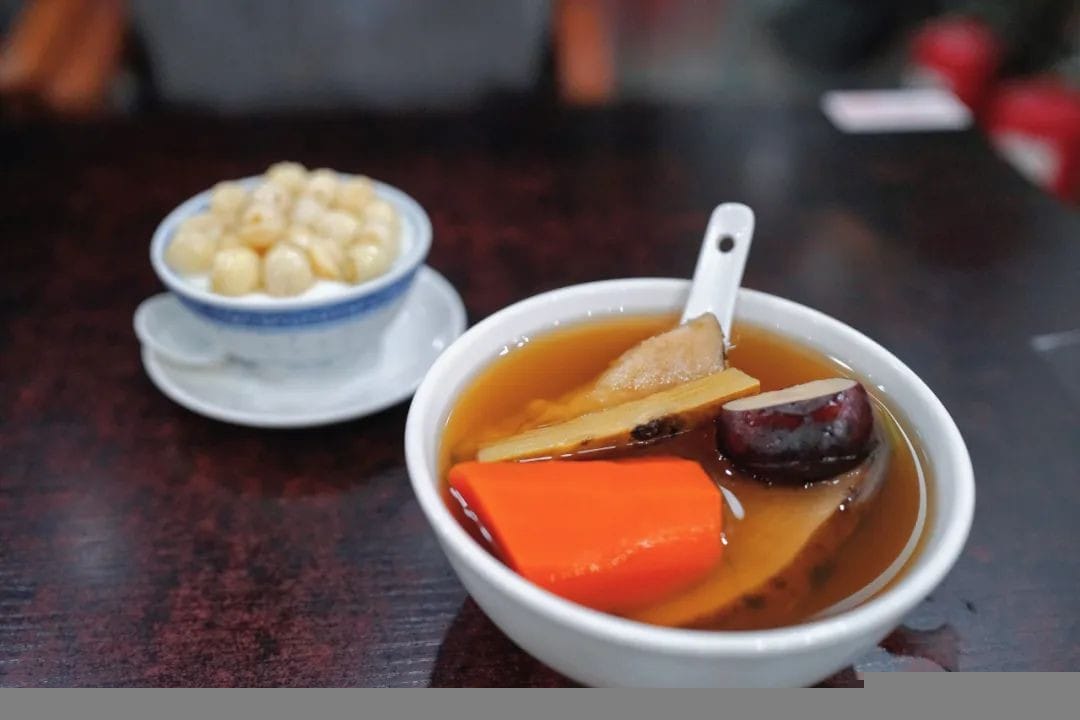
We also ordered a few other dishes, which were not as stunning as the roasted goose but still quite good.
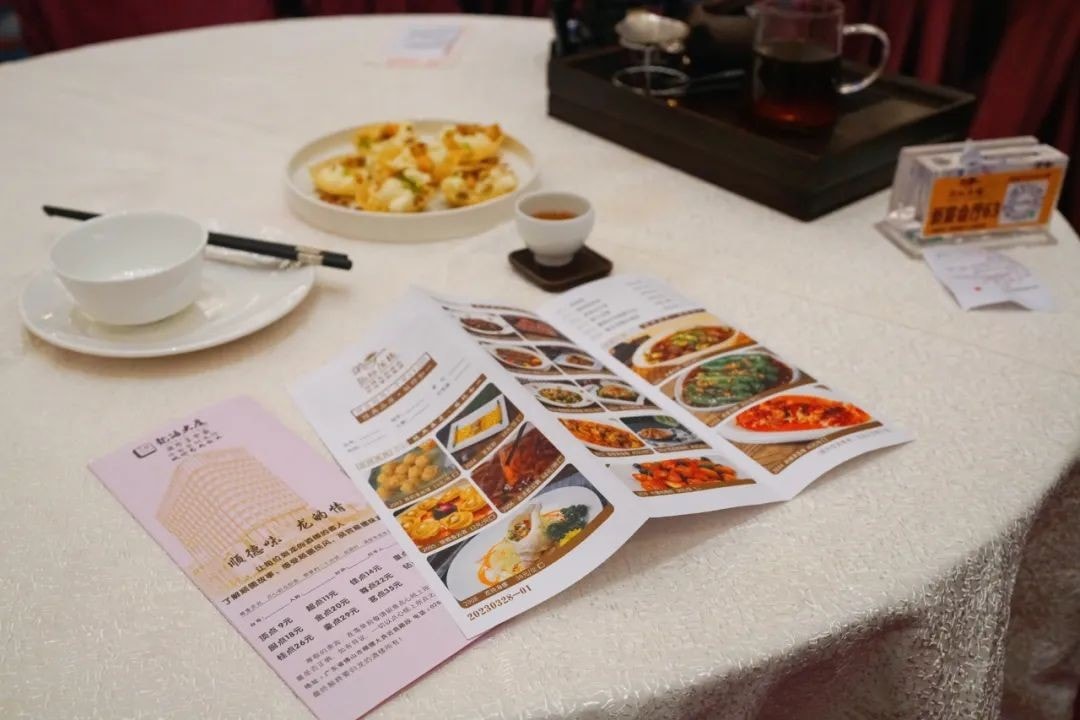
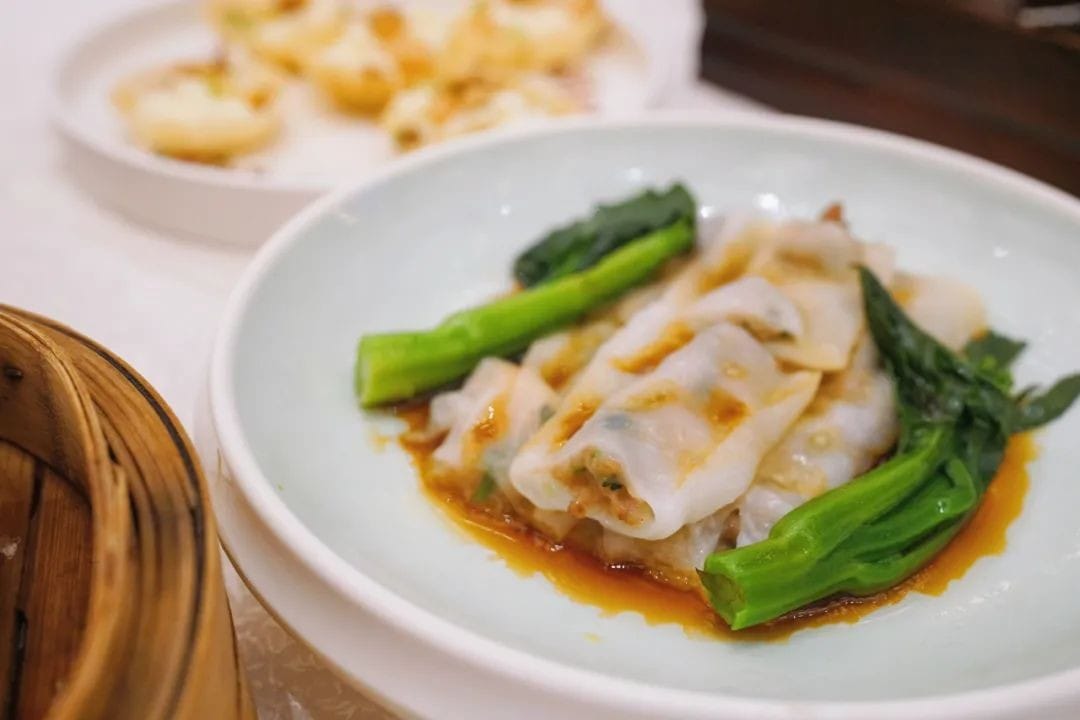
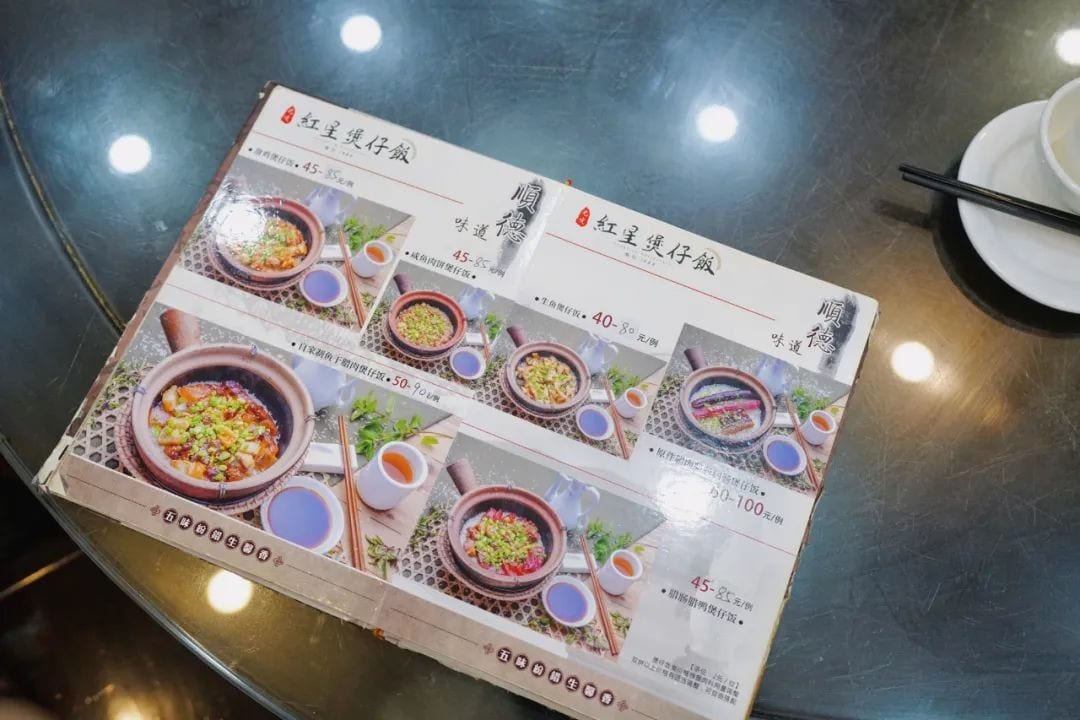
Every goose is neatly prepared, and eating goose should be from the inside out. The blanched goose intestines at this shop are very clean, and after being drizzled with hot oil, there is no noticeable fishy taste. The crispy texture of the goose intestines is like music in the mouth.
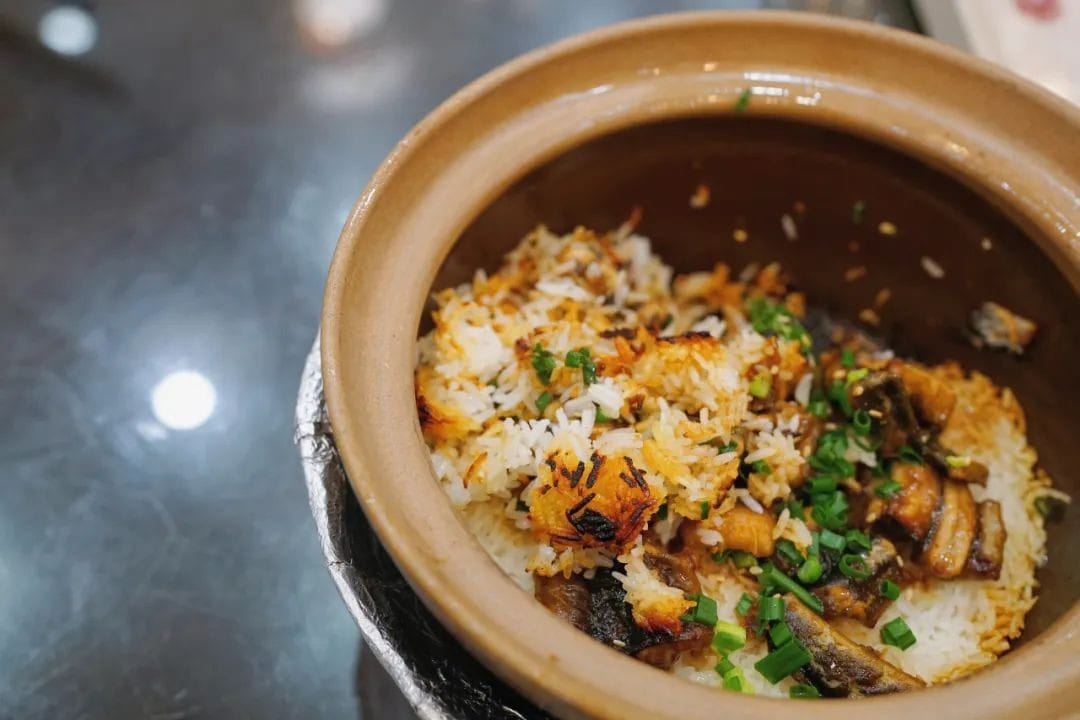
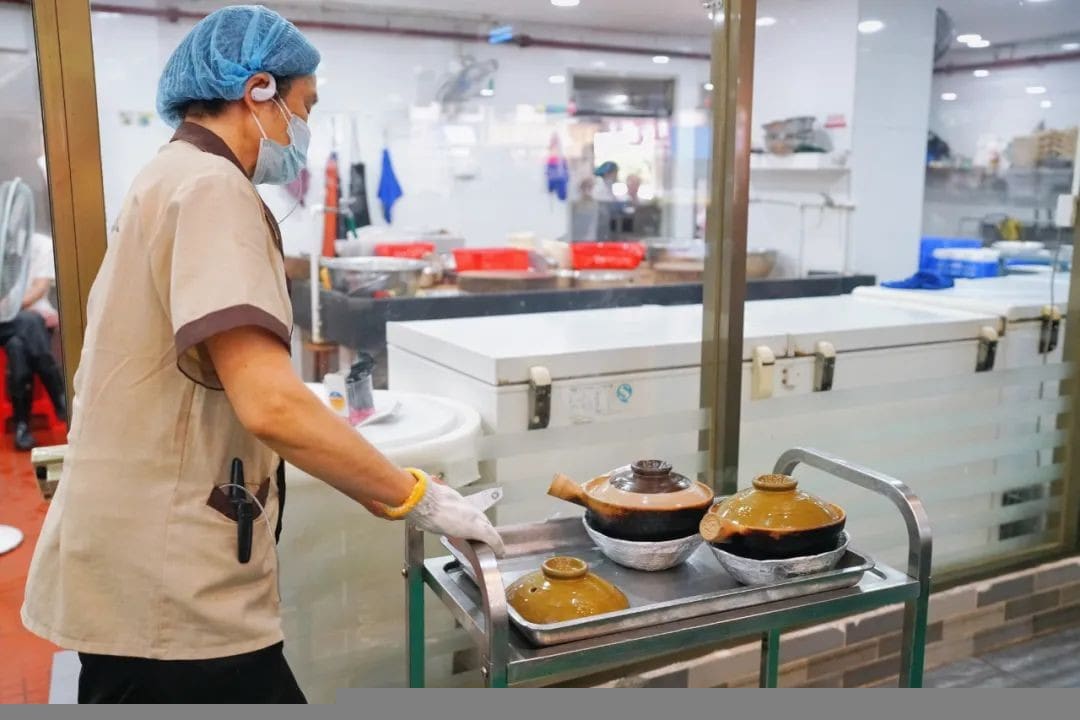
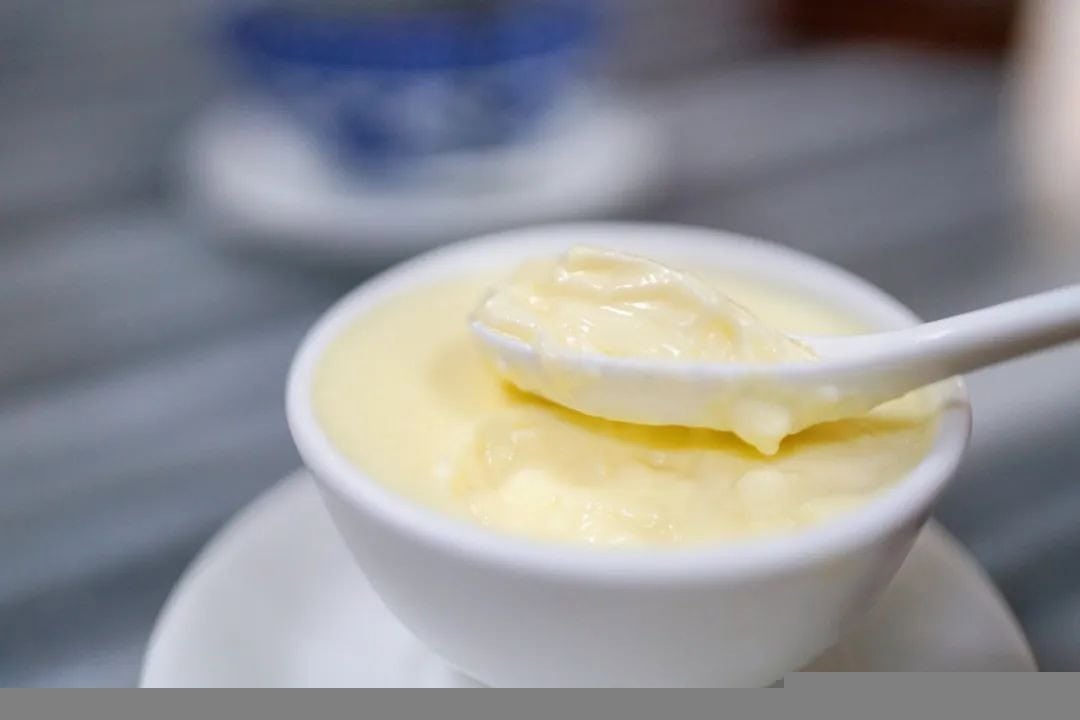
To judge the excellence of a stir-fry dish, you look at whether the meat is flavorful enough.
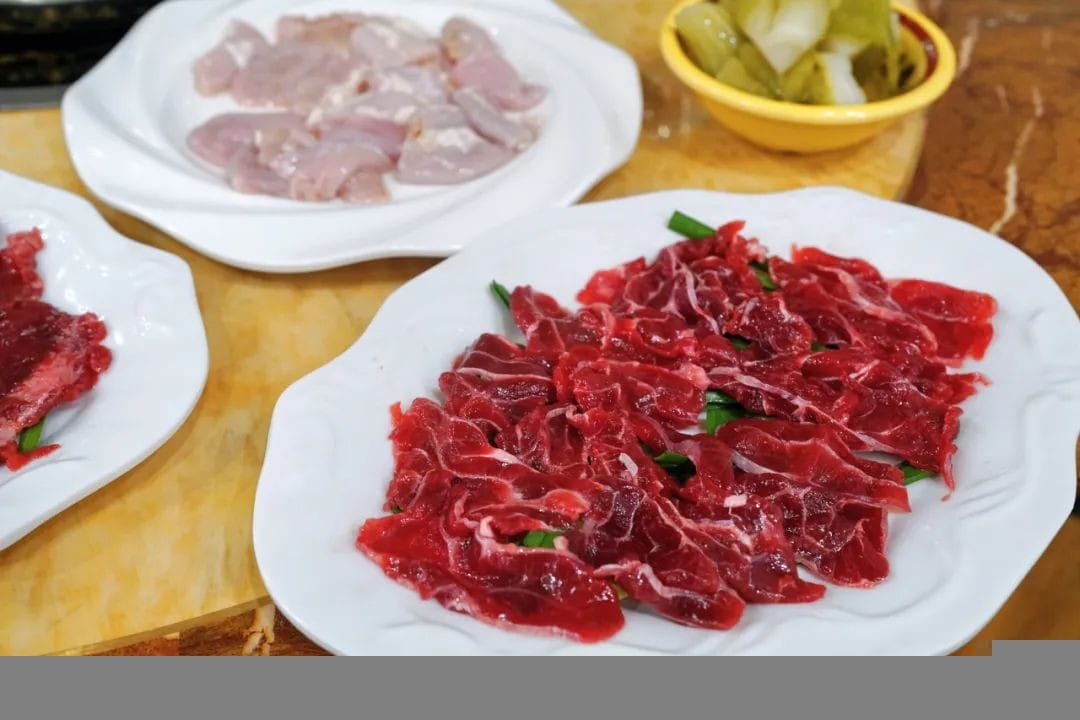
The cured meat gets sweeter the more you chew, and the sausage is full of wine aroma. The handful of shredded taro on top adds more layers to the texture.
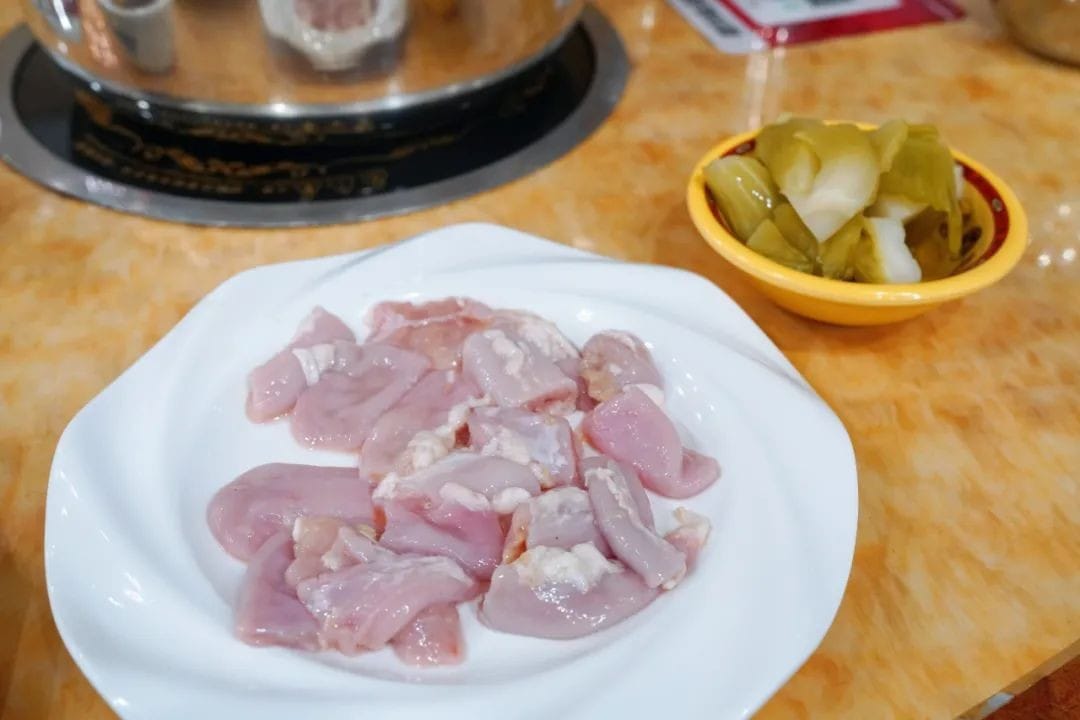
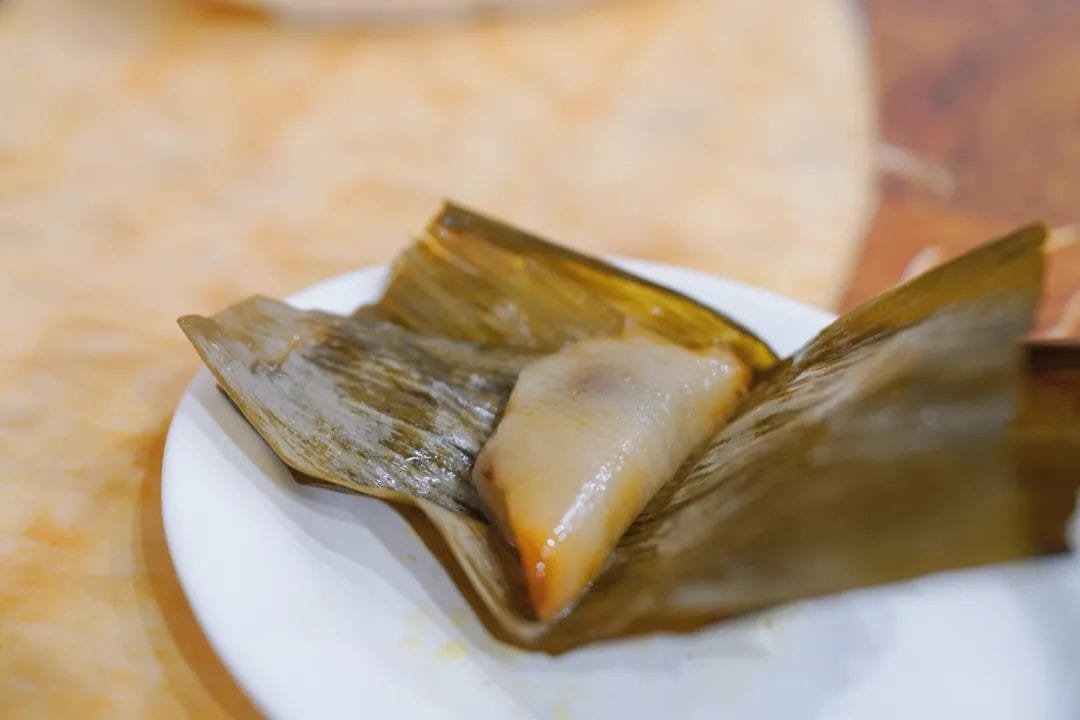
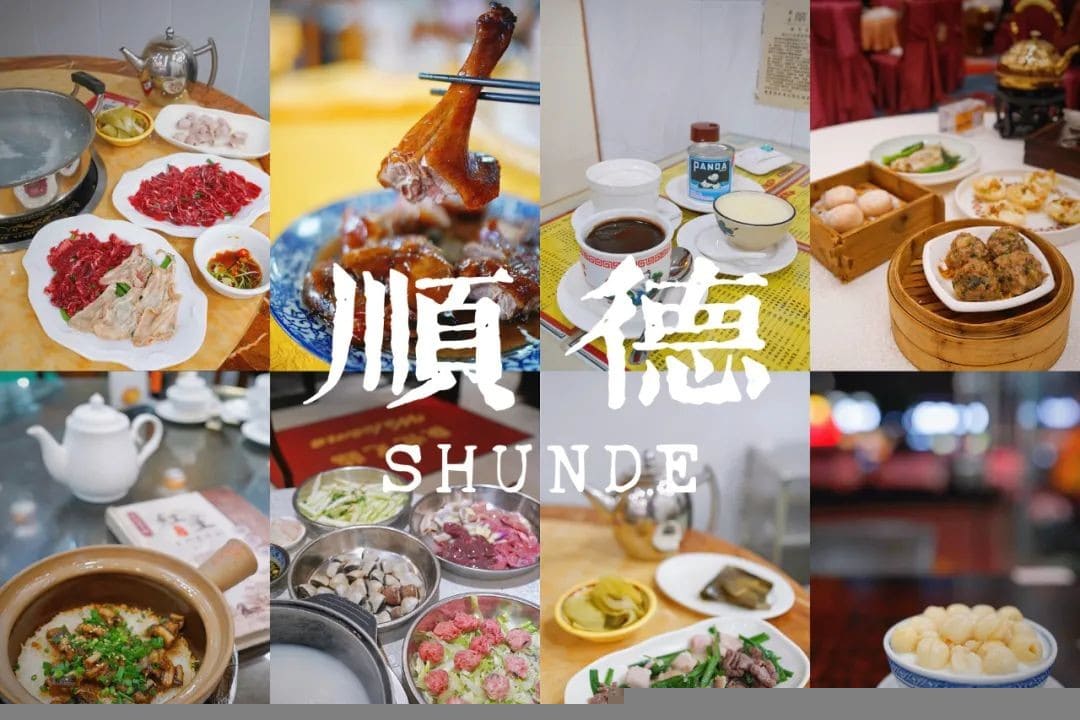
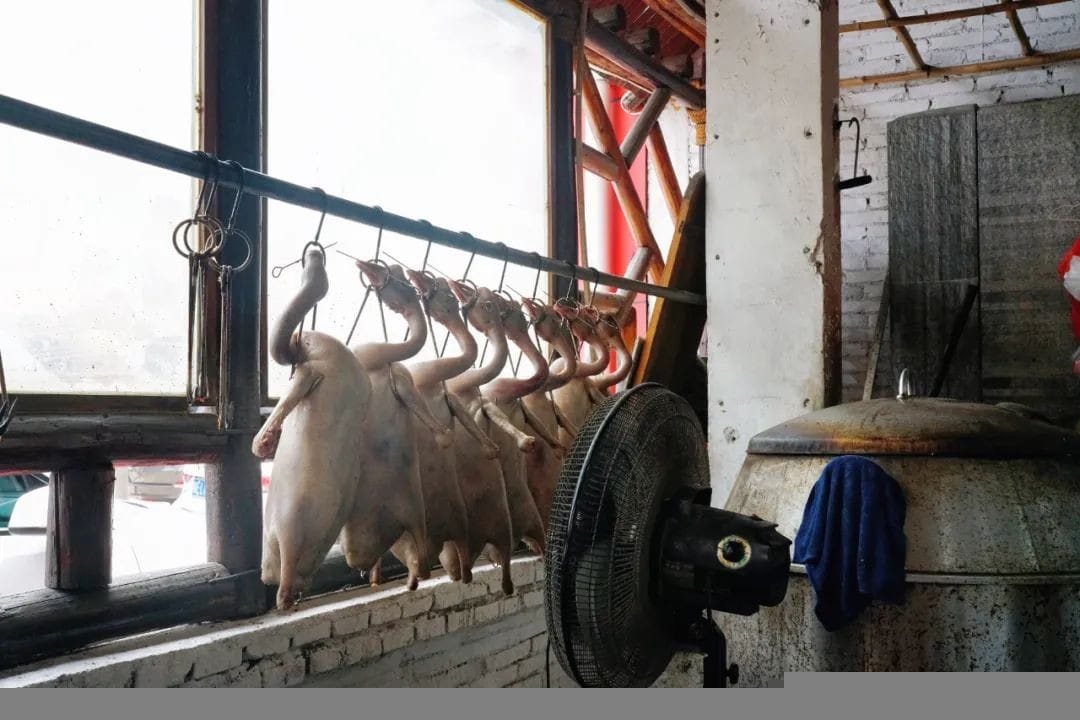
Shunde pan-fried fish cake is a common dish in Shunde. You can taste the elasticity of the fish meat, and the green peppers are quite spicy. This dish is at the average level of Shunde people.
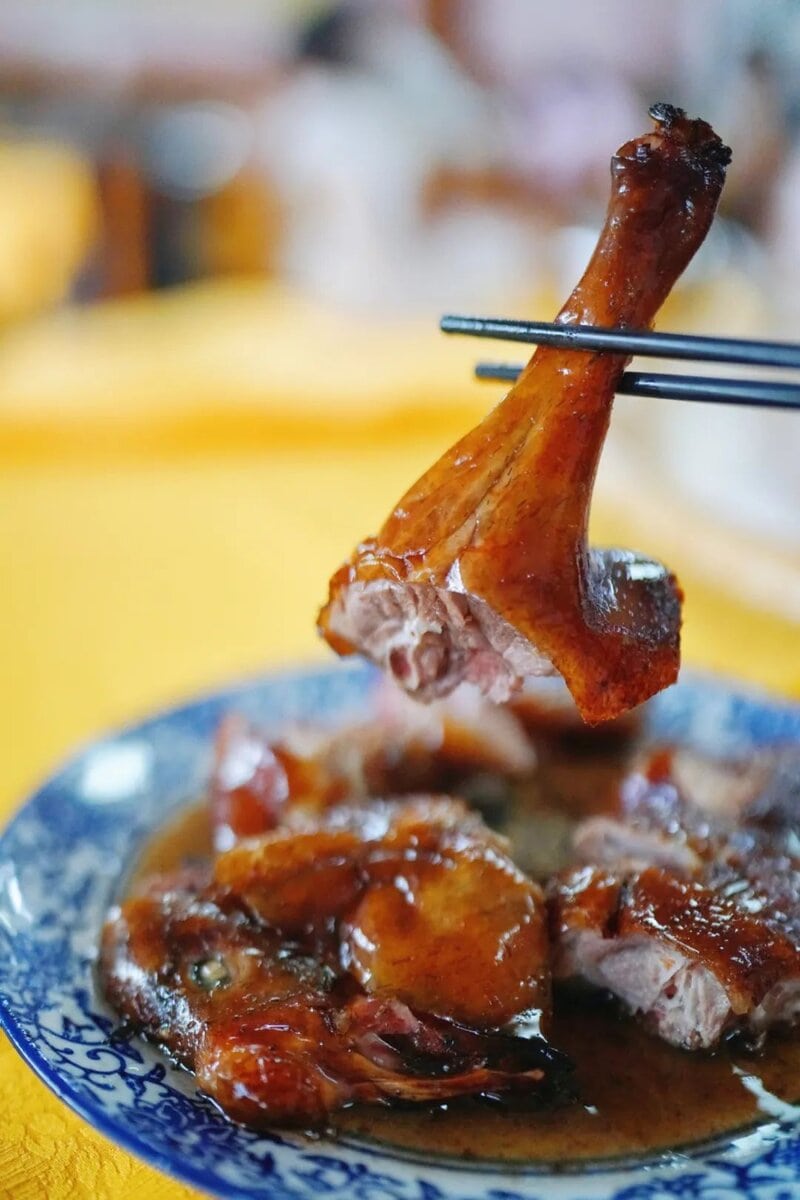
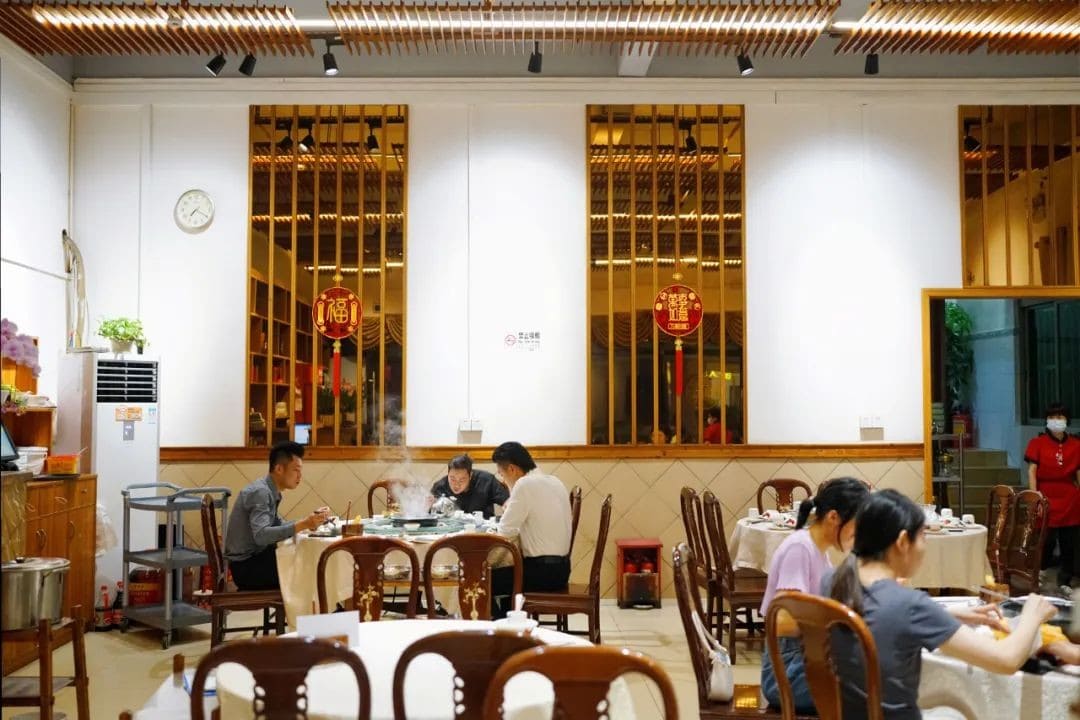
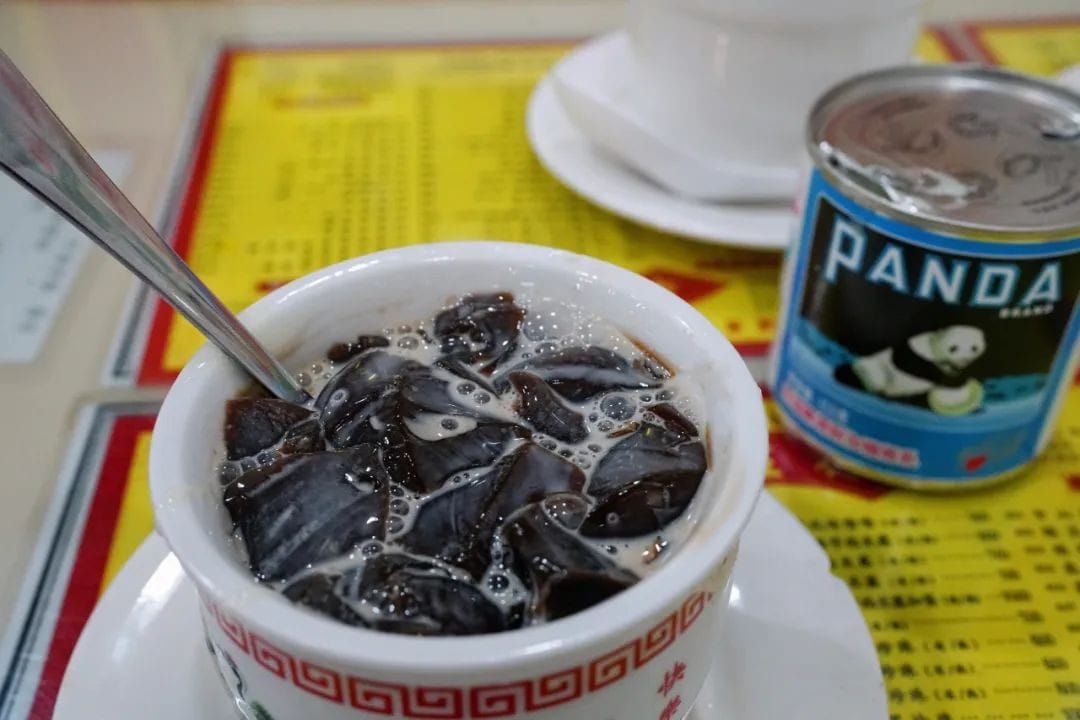
The shop mainly has large tables, and you usually have to share tables with others.
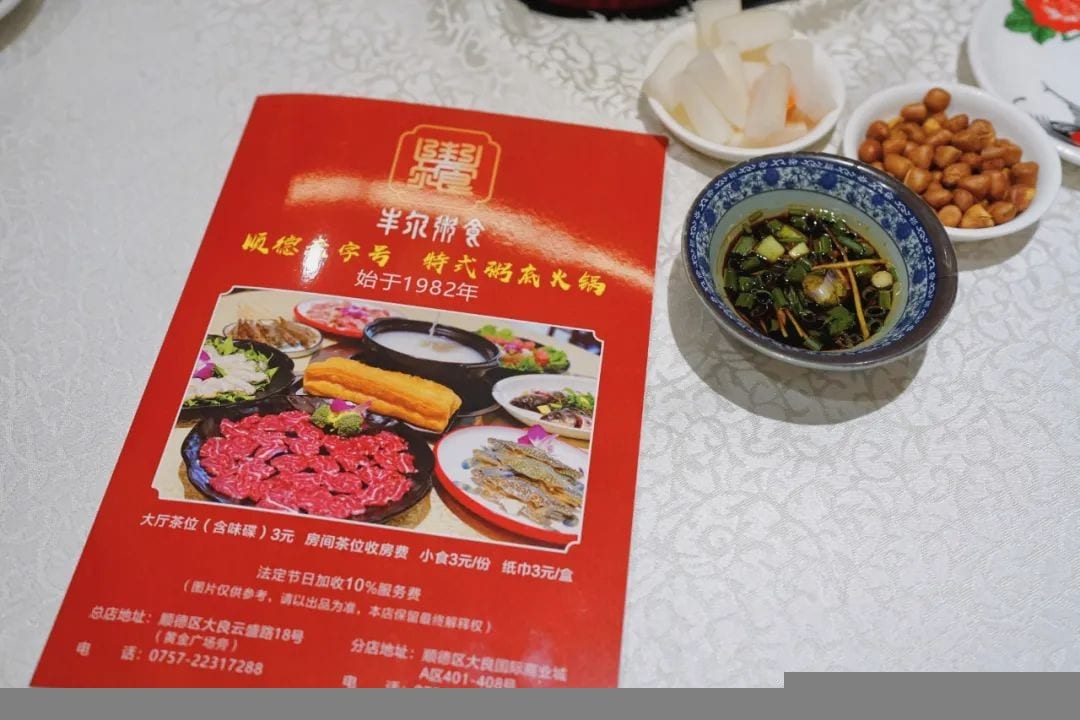
The guy sharing the table with me is probably a wild spokesperson for the “Clean Plate Campaign.” Just look at his achievements.
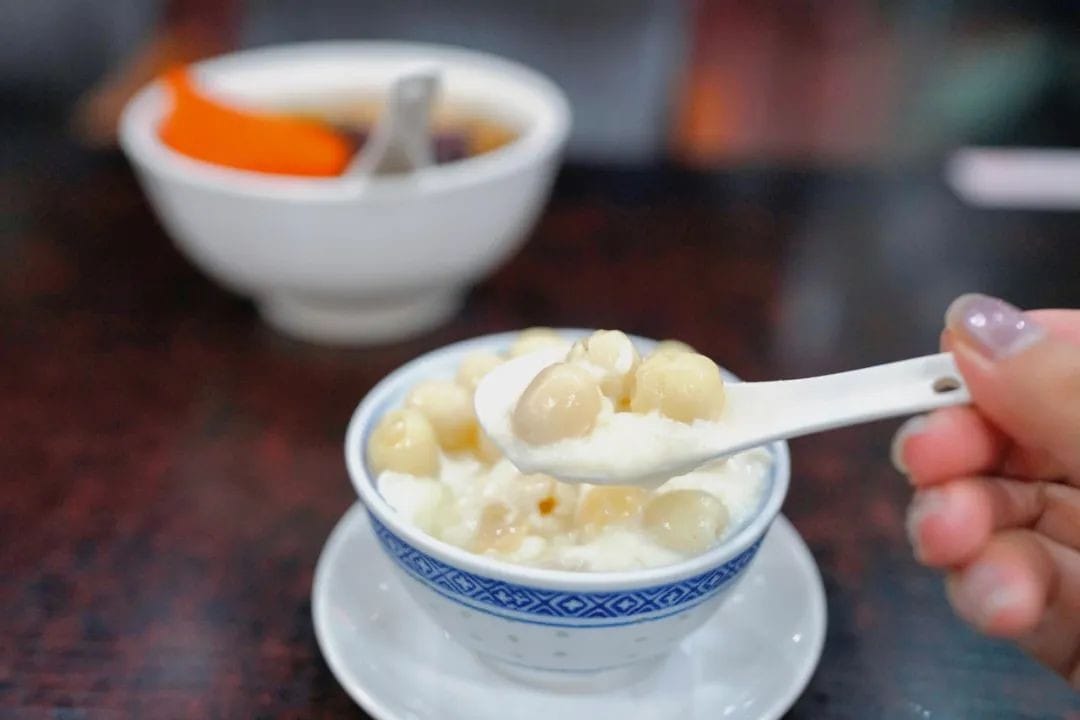
Additionally, they stop giving out numbers about half an hour before closing time, so it’s best not to arrive at the last minute, or you’ll be left disappointed.
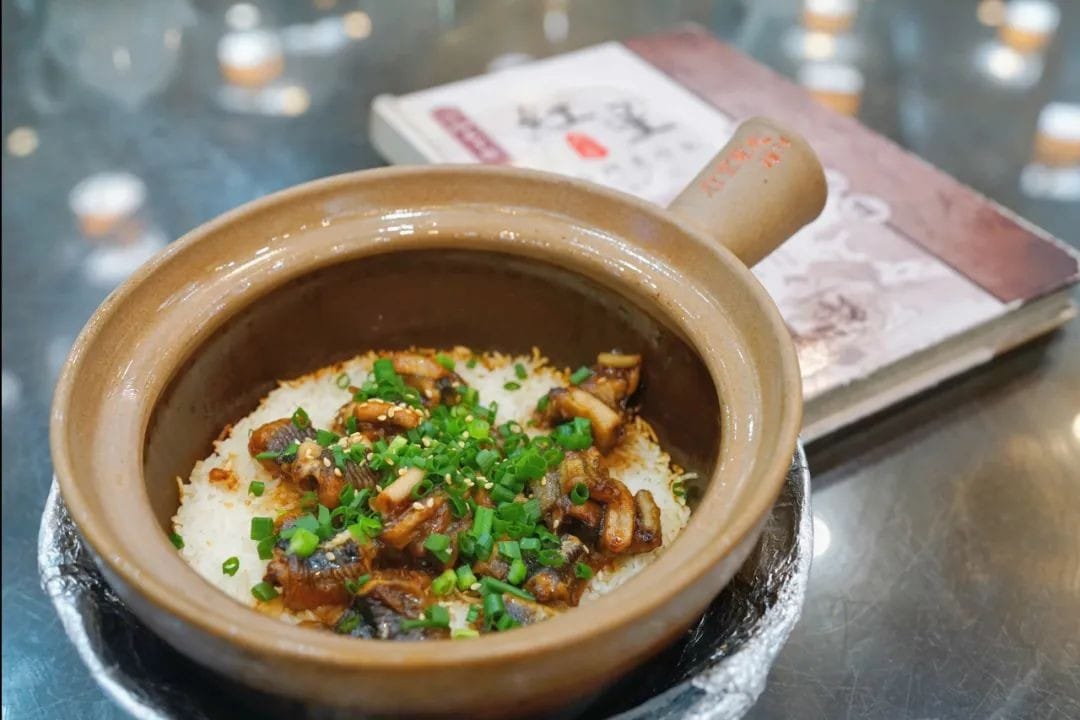
Hua Sheng Hang
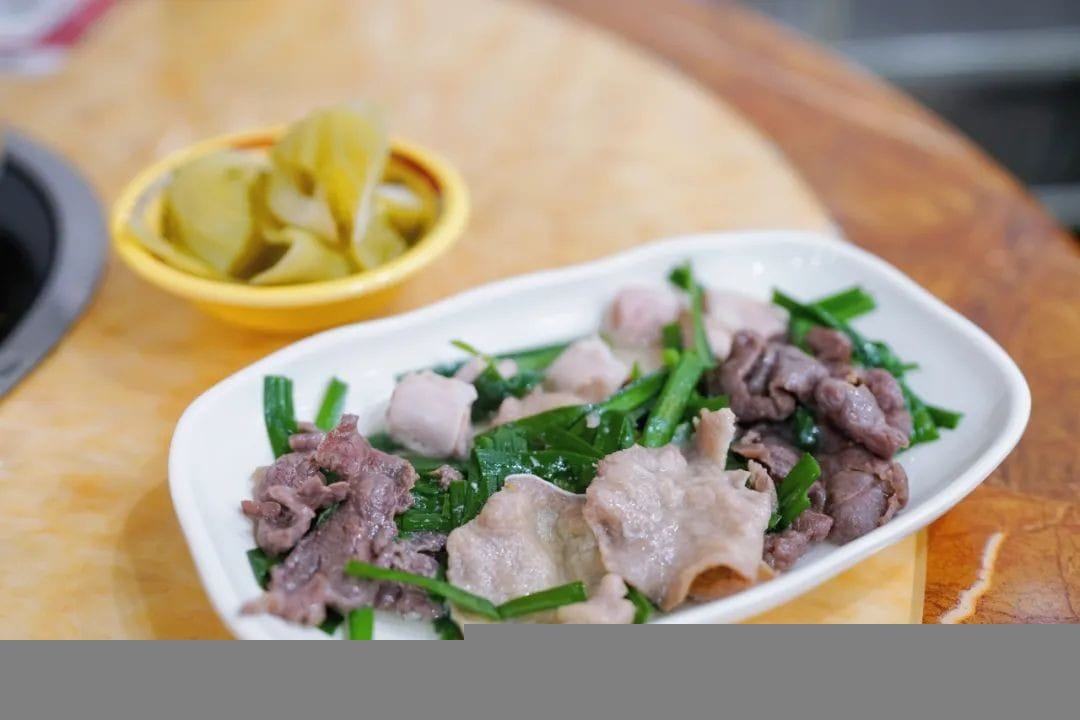
📍: Penglai Road, Penglai Commercial Building, Daliang, Shunde District
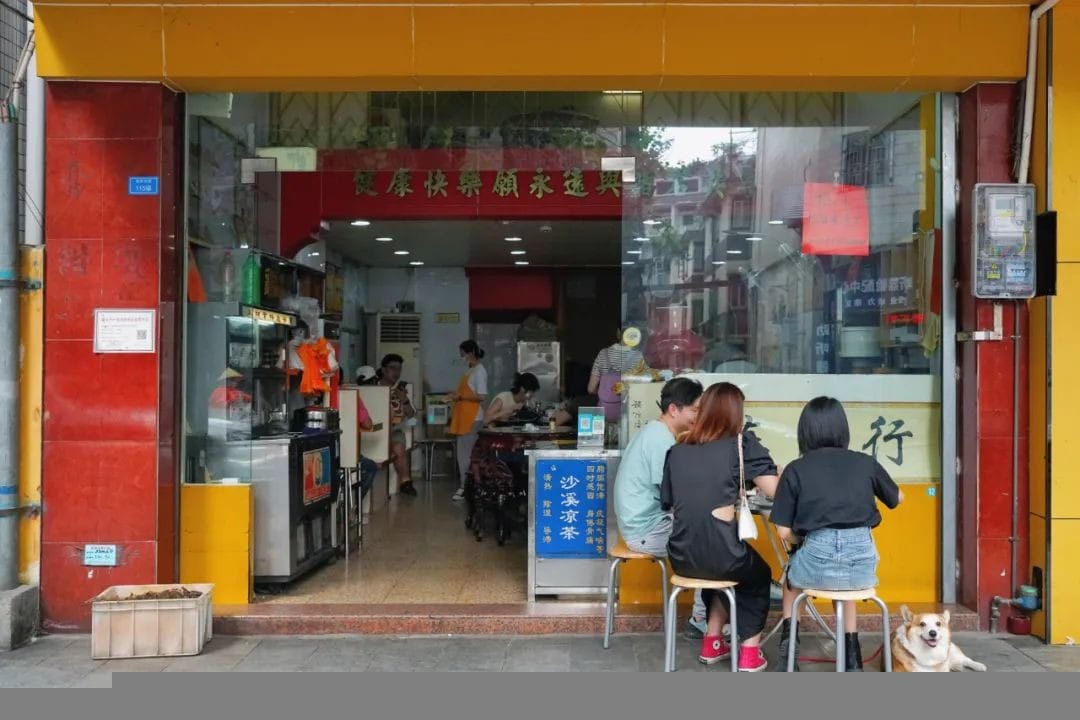
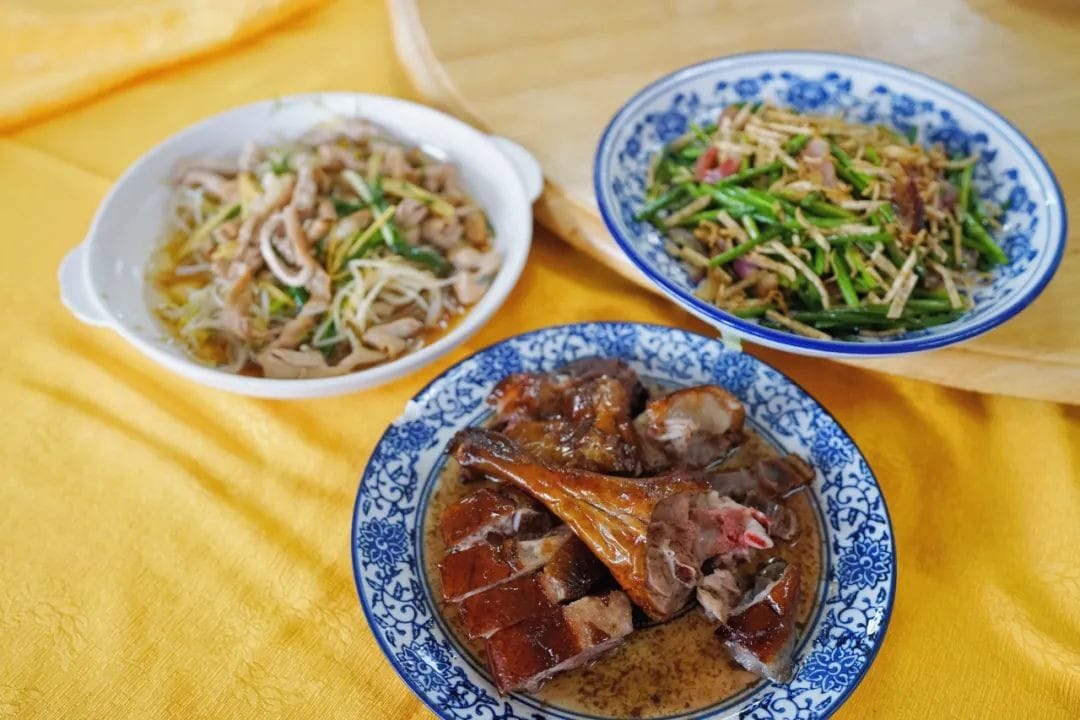
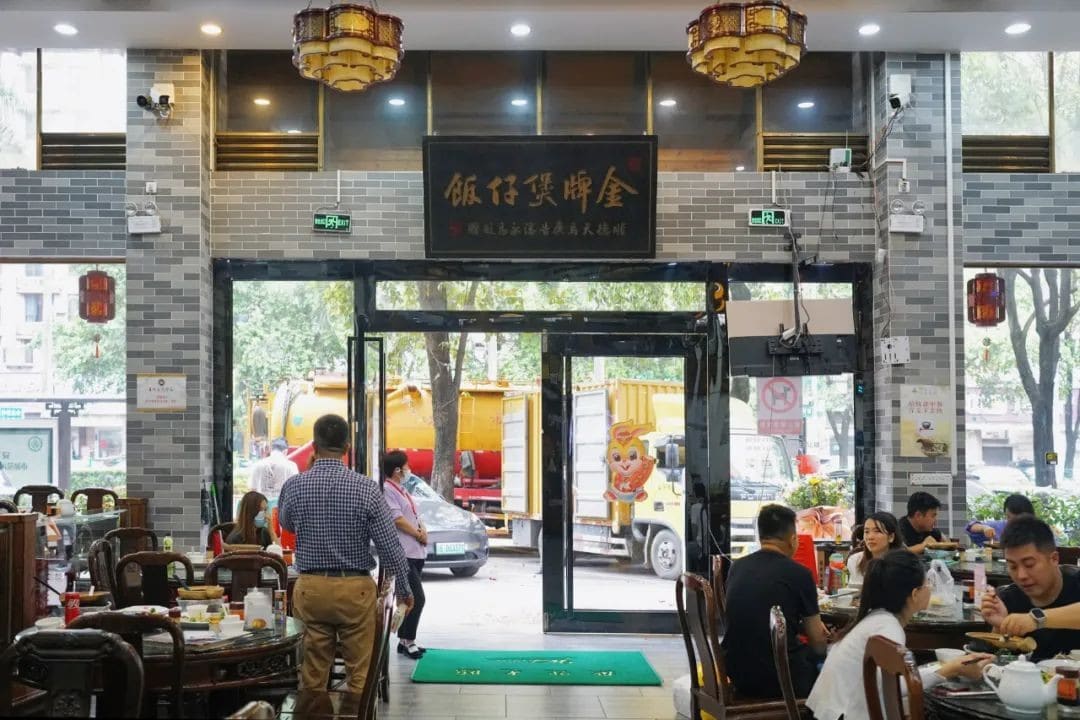
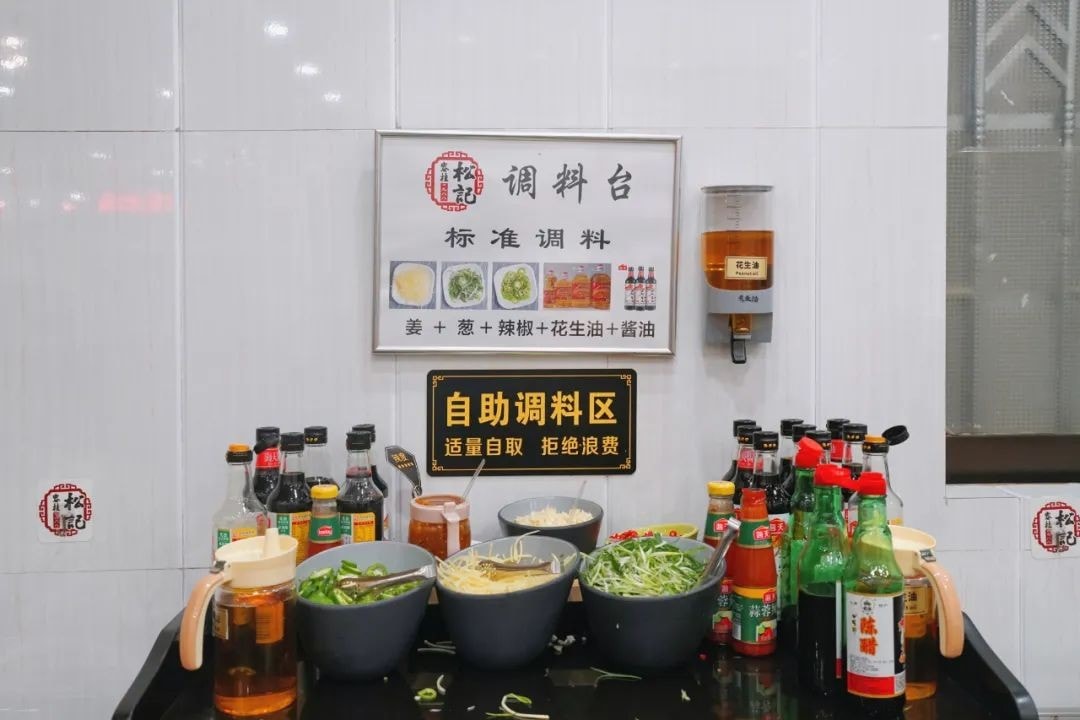
⏰: 6:00-23:00
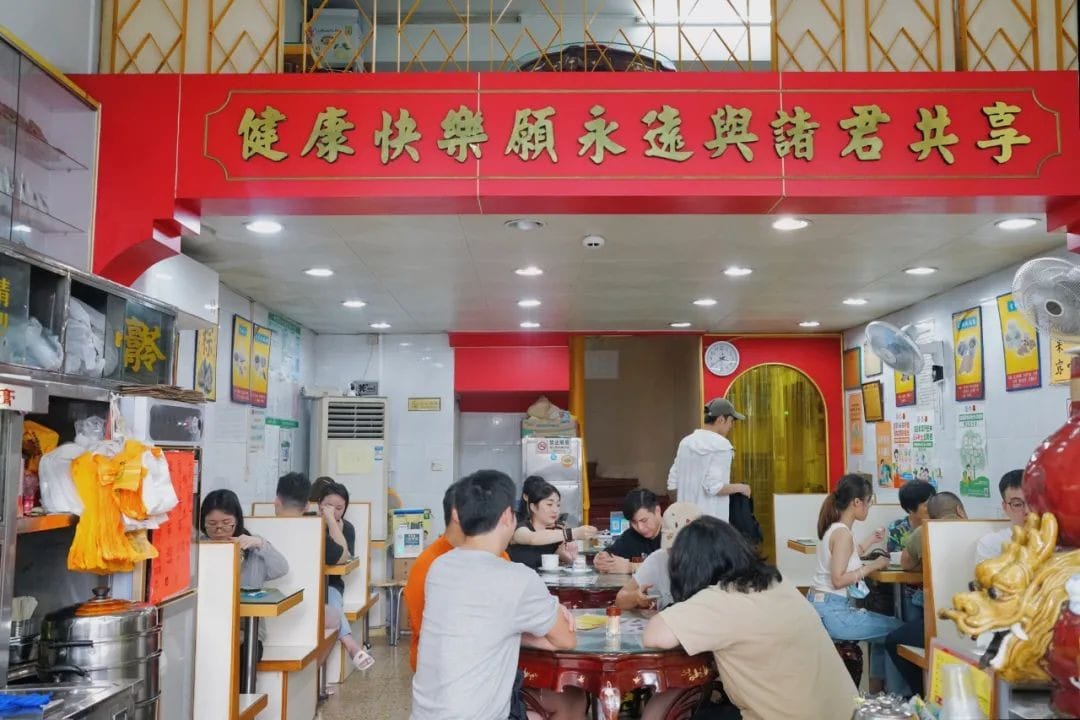
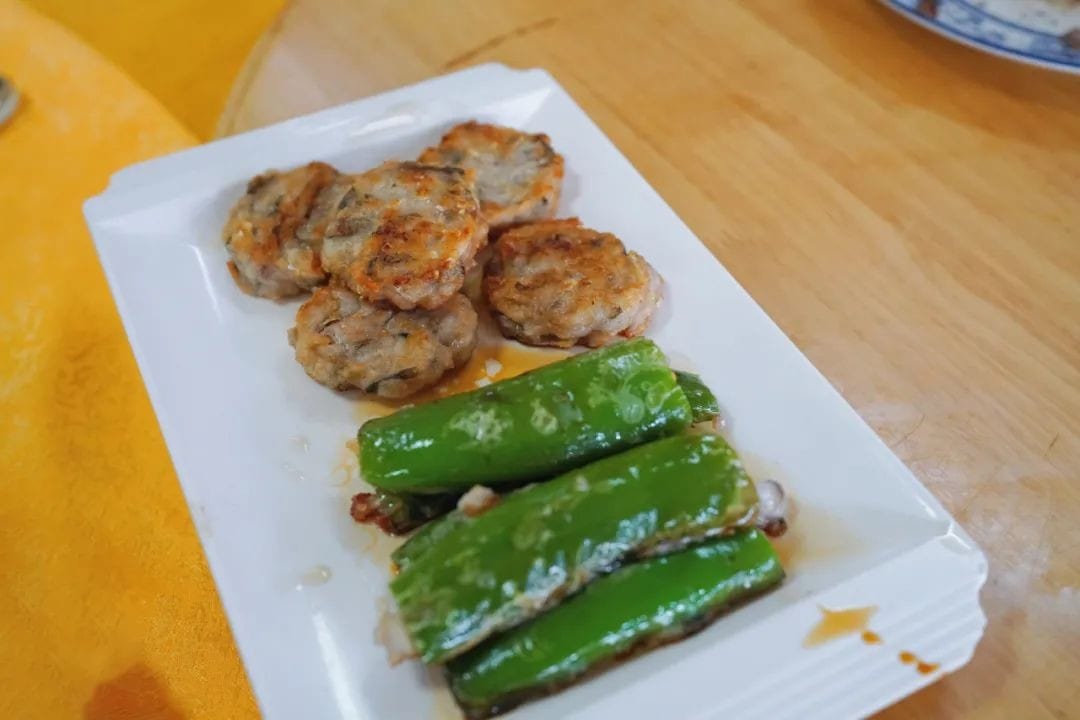
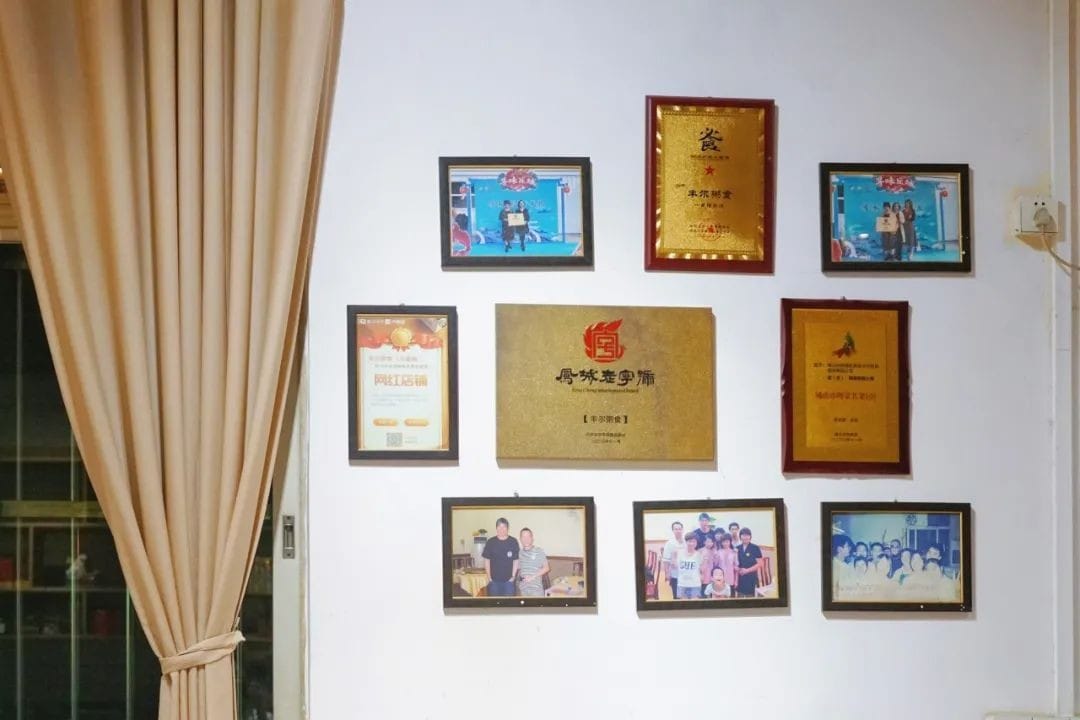
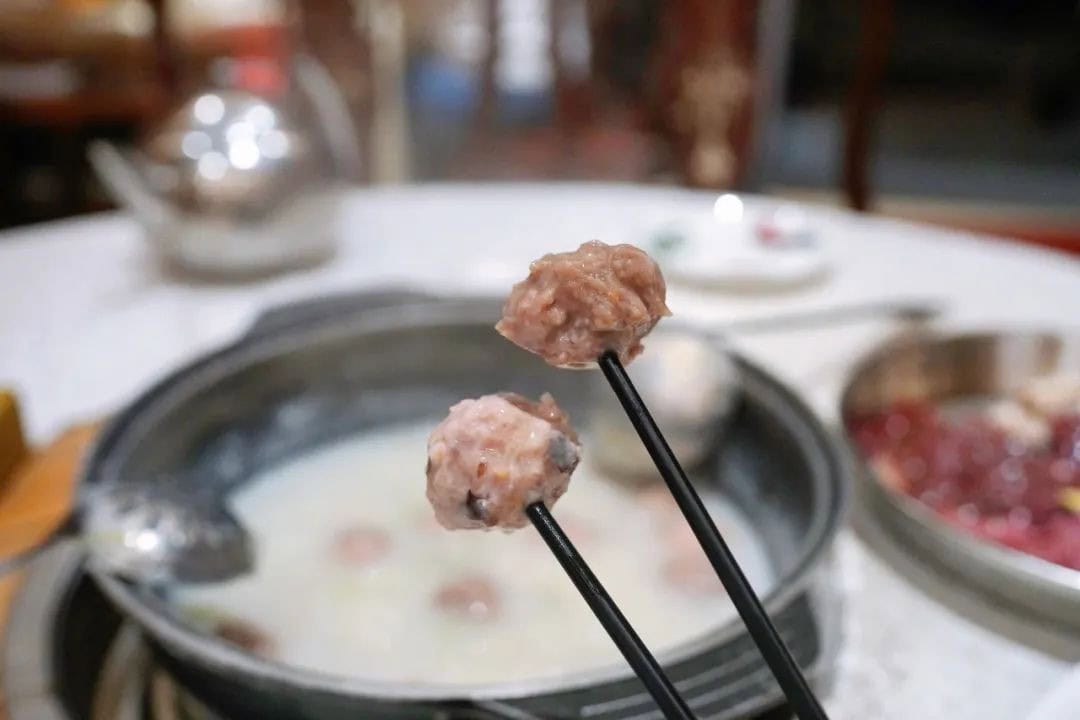
Double-skinned milk pudding has already become a culinary symbol of Shunde. To the extent that even Lanzhou noodle shops in Shunde sell double-skinned milk pudding.
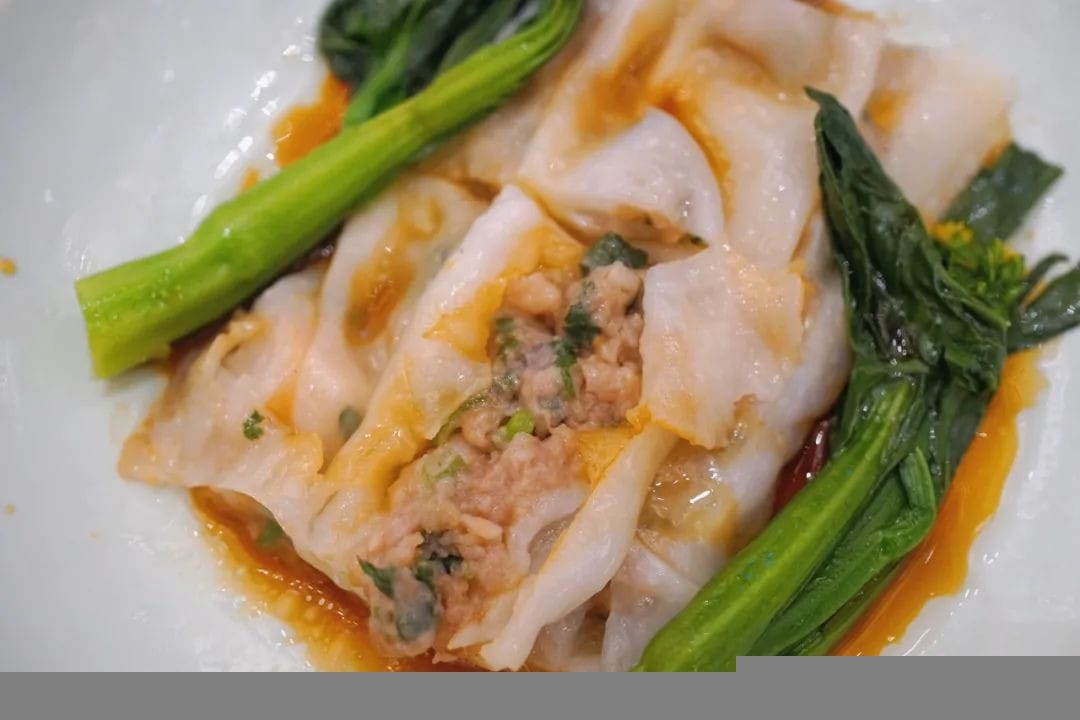
Hence, on this trip to Shunde, I decided to change things up and sought dessert shops that didn’t use double-skinned milk pudding as their signature dish.
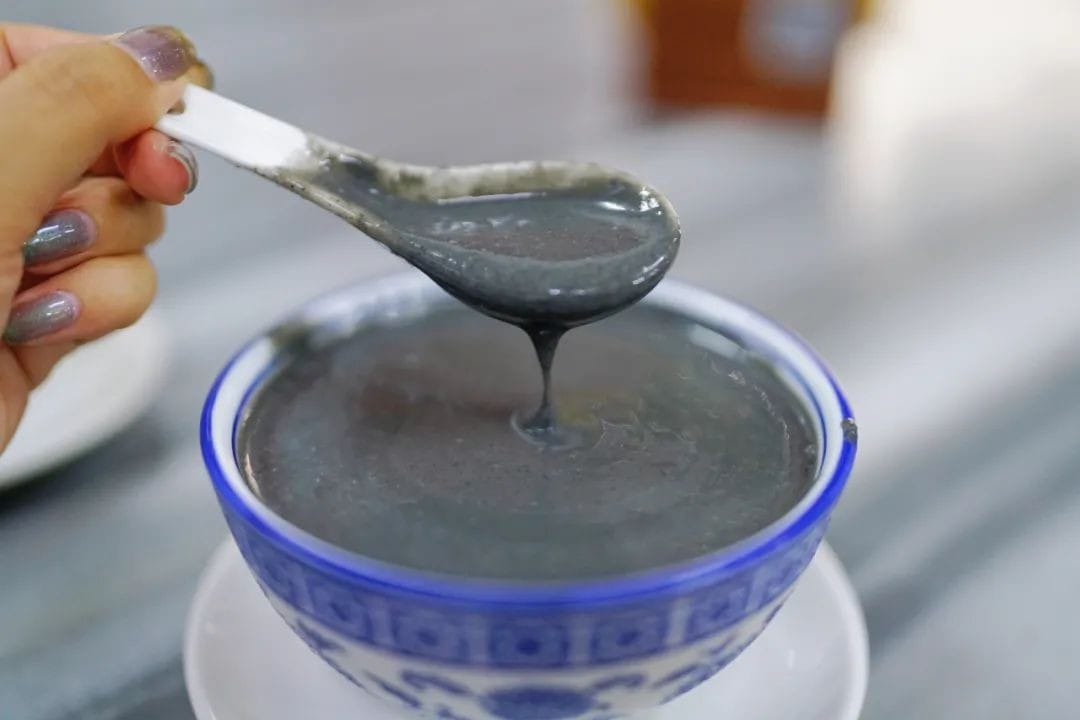
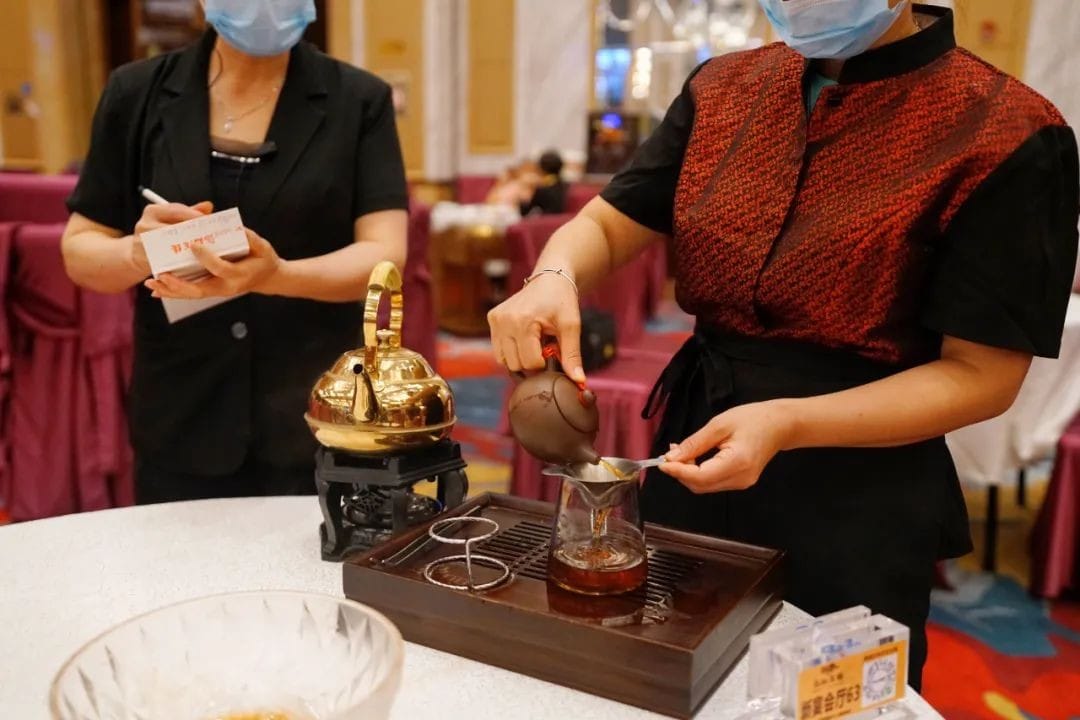
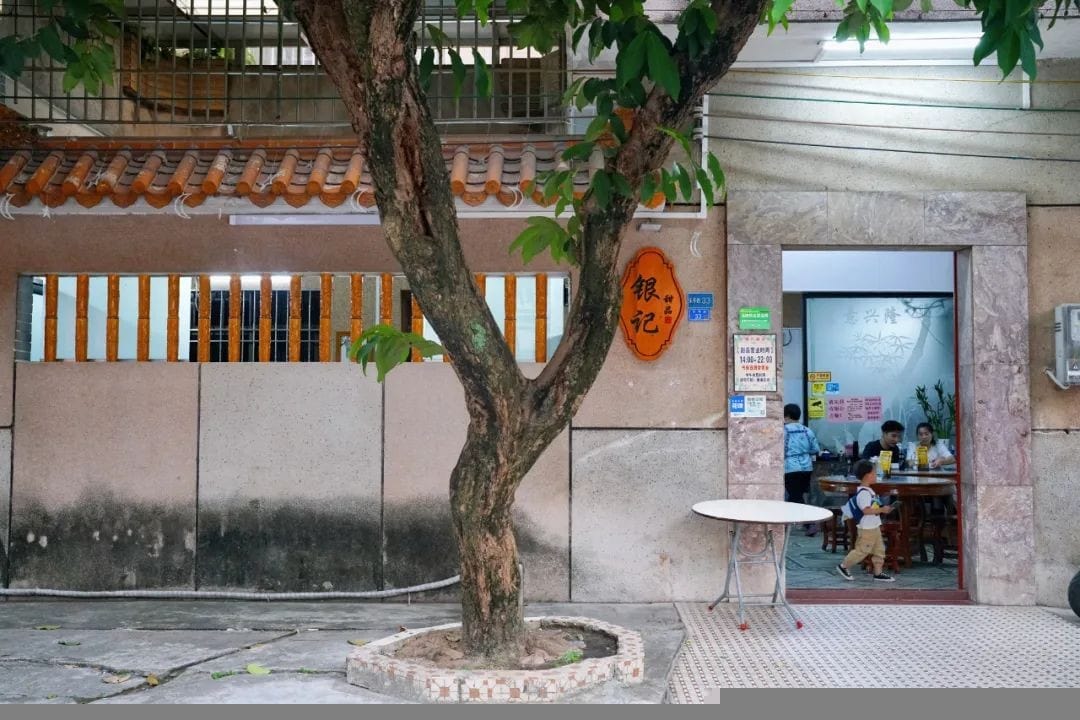
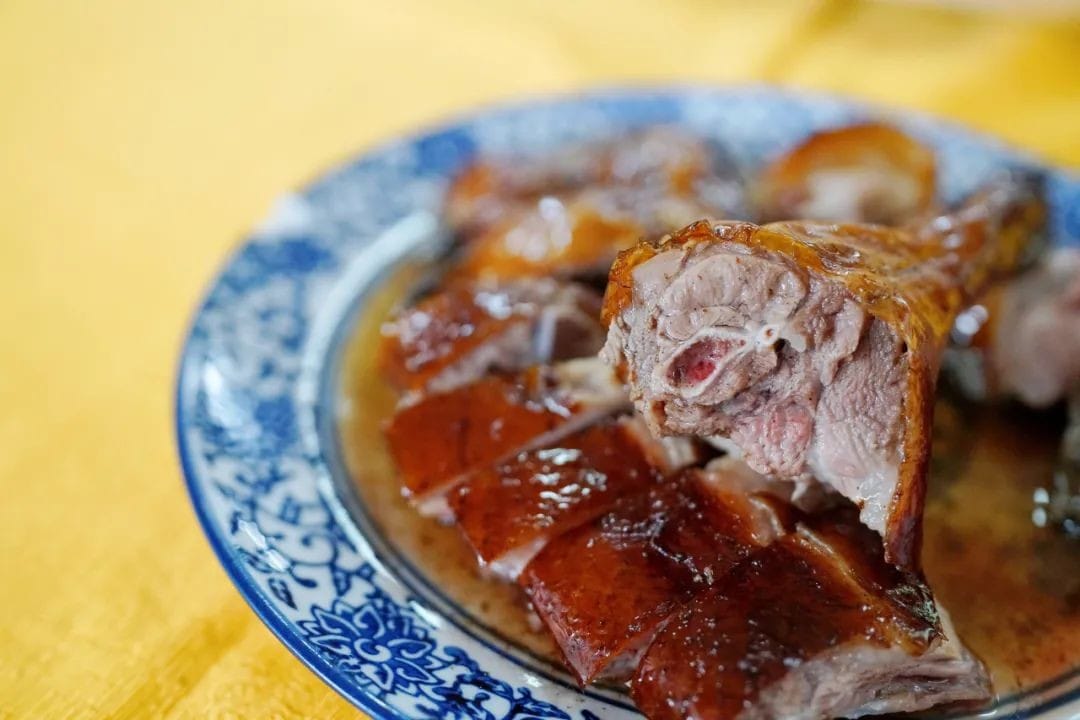
Hua Sheng’s decoration resembles the style of 1980s tea restaurants, with the most conspicuous decorations being the raw materials for turtle jelly—turtle shells.
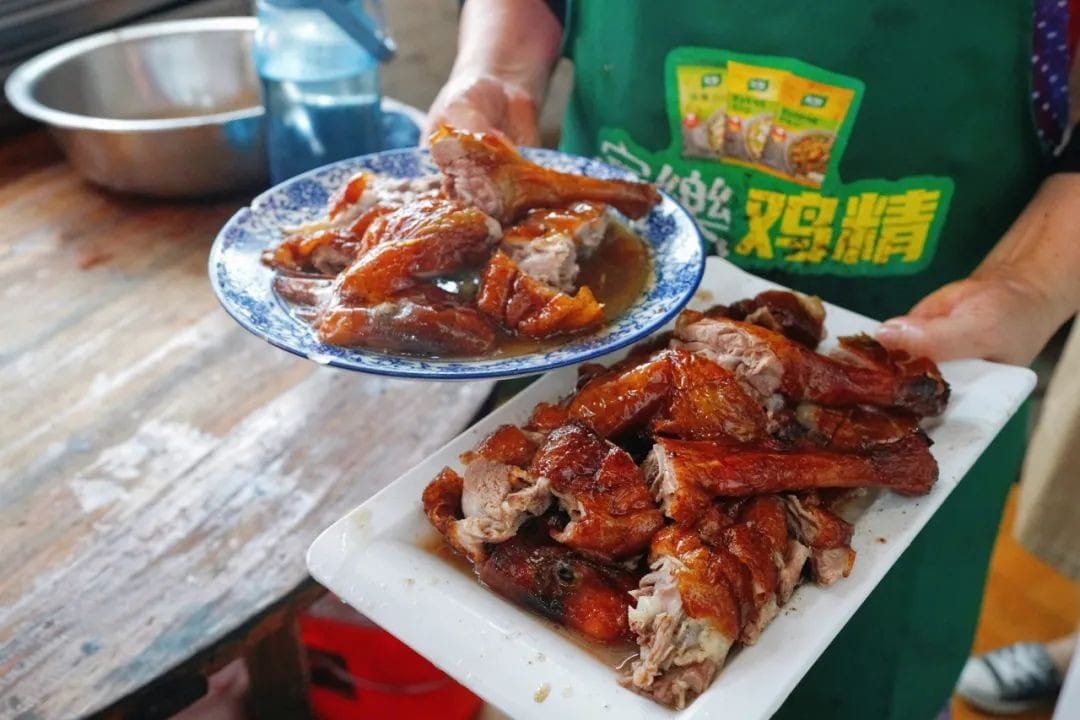
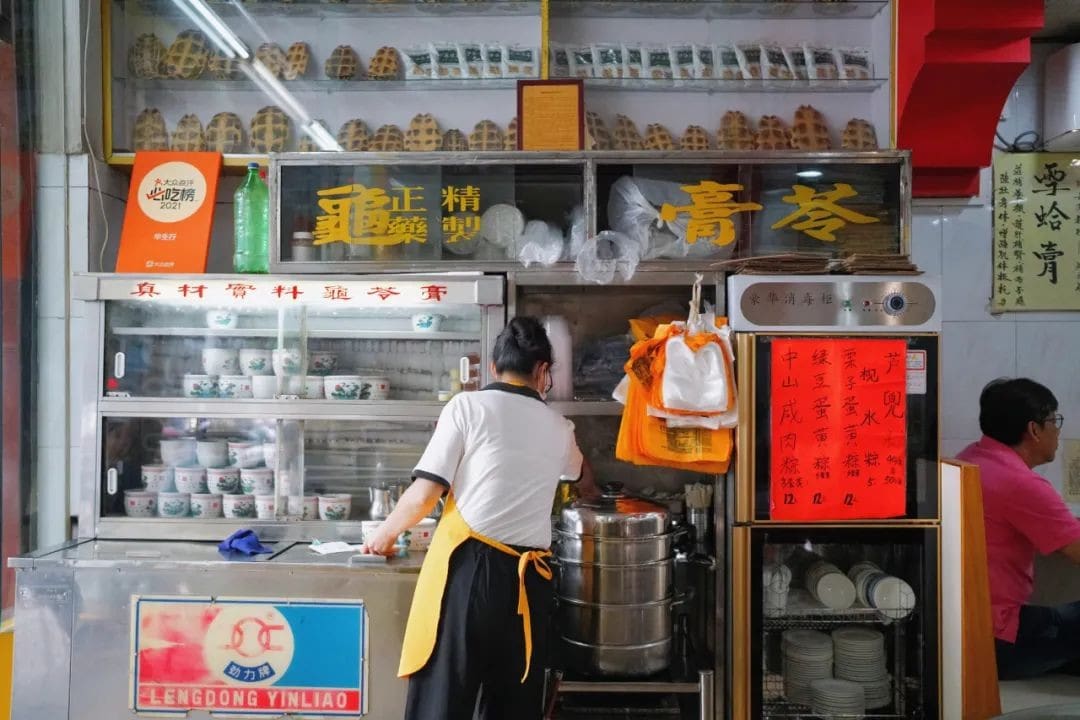
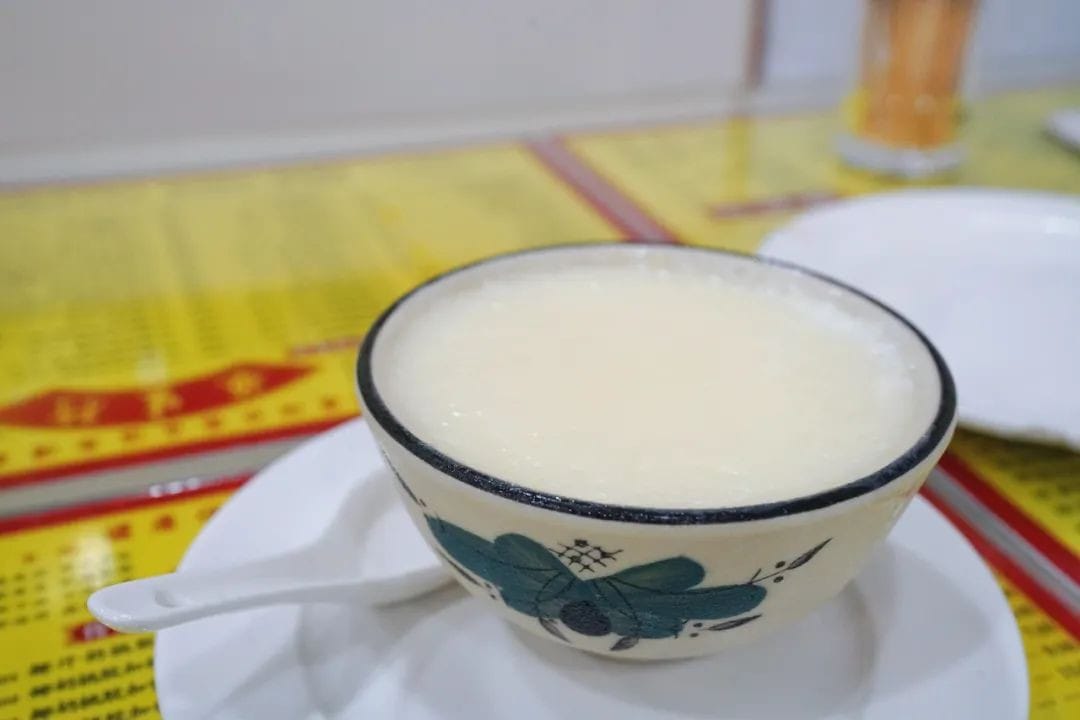
Hua Sheng’s most famous item, turtle jelly, is quite authentic as it is made from turtle shells boiled with 31 kinds of Chinese herbs. As a result, its taste is genuinely bitter, so it needs to be paired with condensed milk, honey, or regular milk to eat.
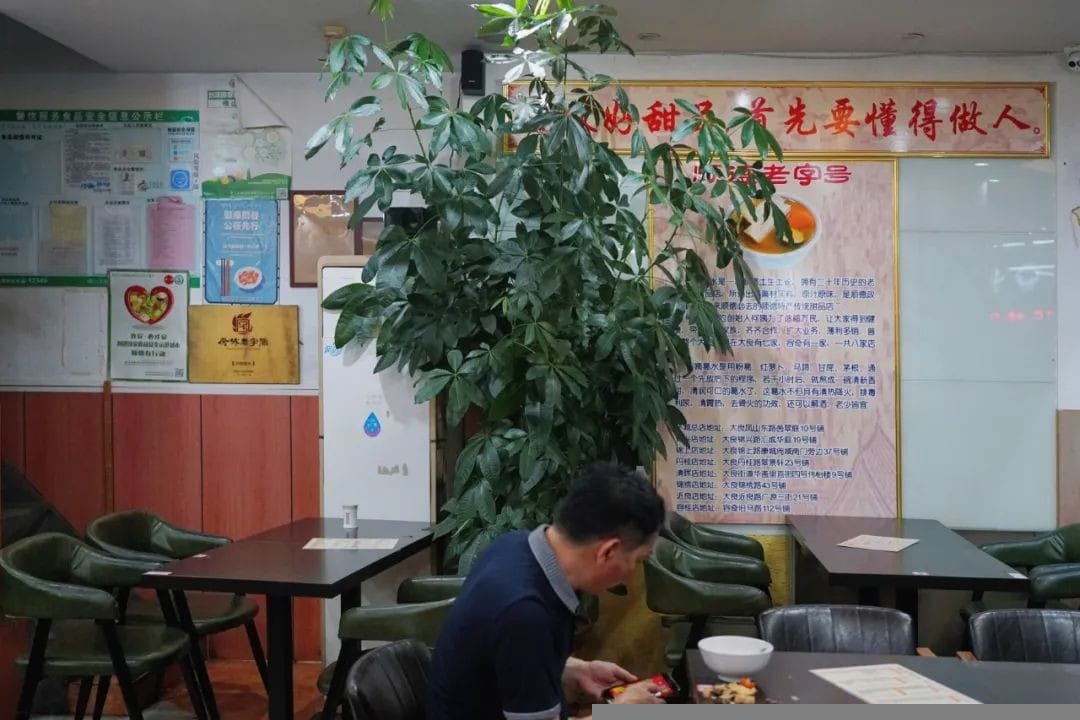
After trying Hua Sheng’s turtle jelly, the ones you buy at supermarkets are nothing more than just jelly.
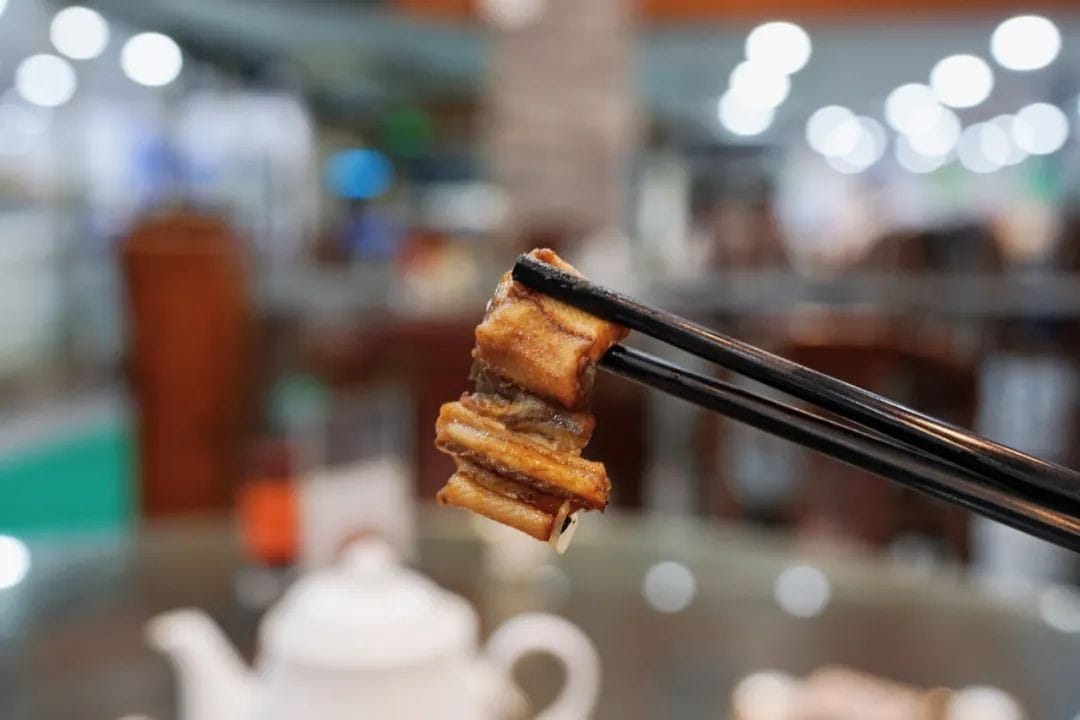
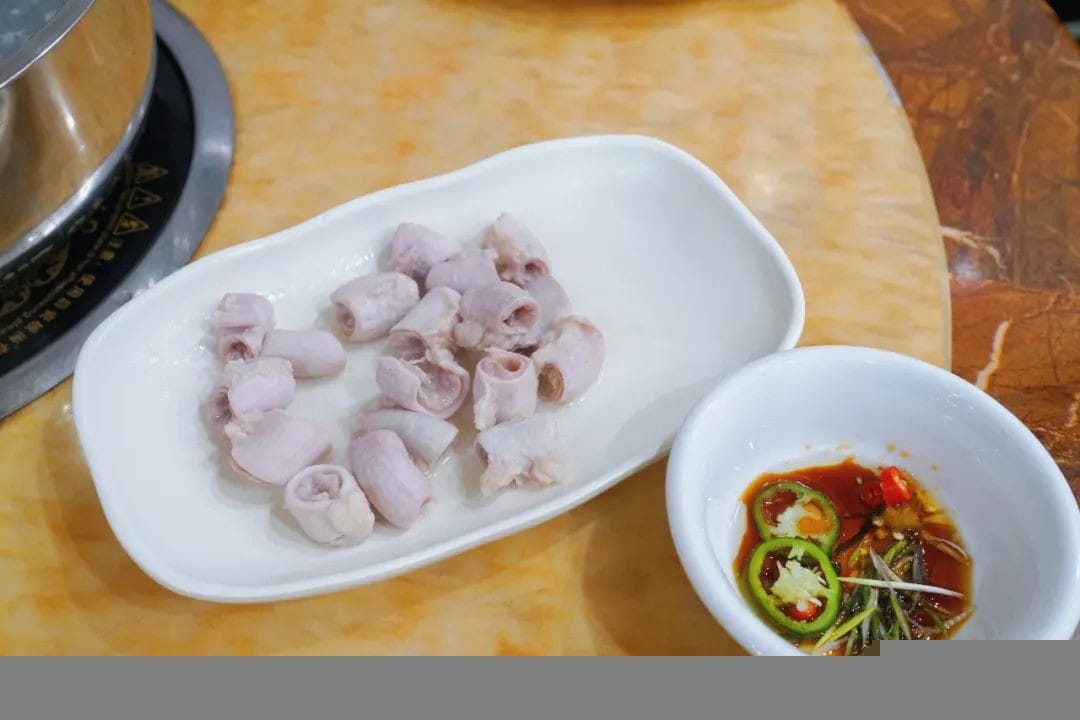
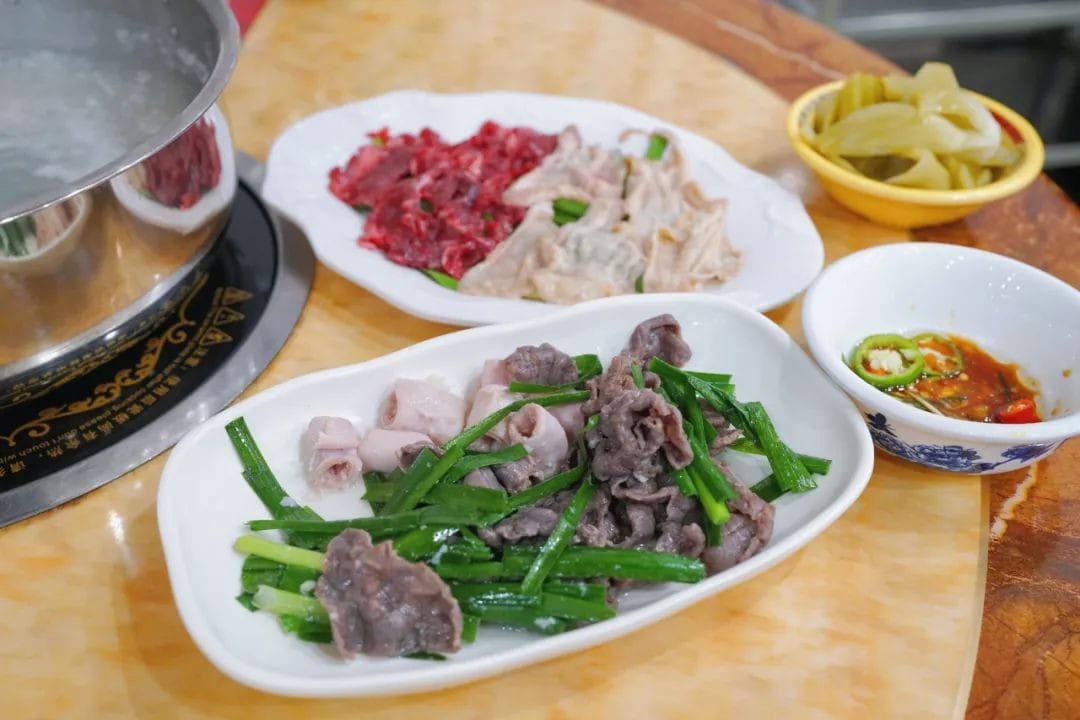
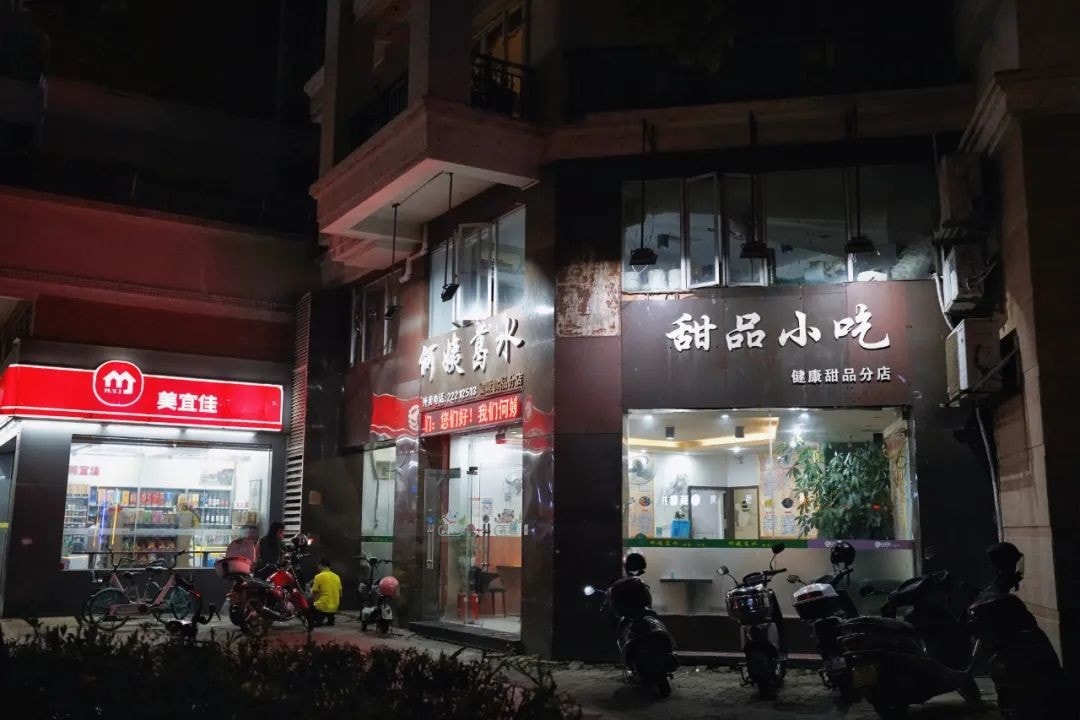
The condensed milk used is Panda brand, tapping into the DNA of Zhejiang people.
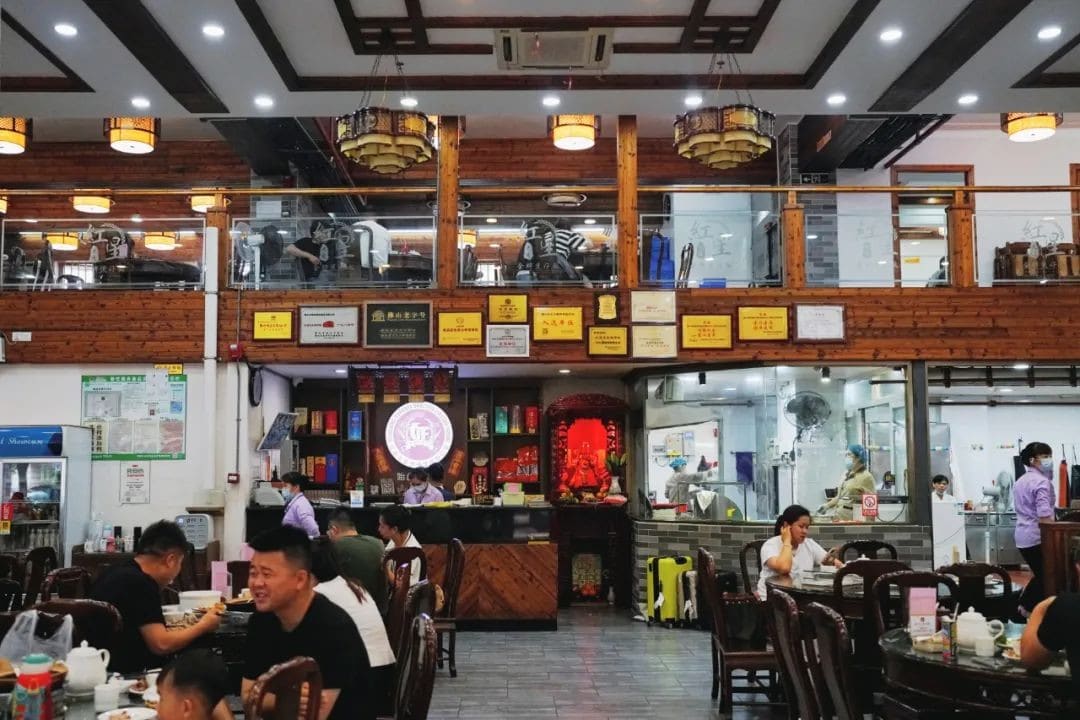
I also ordered double-skinned milk pudding, but Hua Sheng’s version didn’t suit my taste.
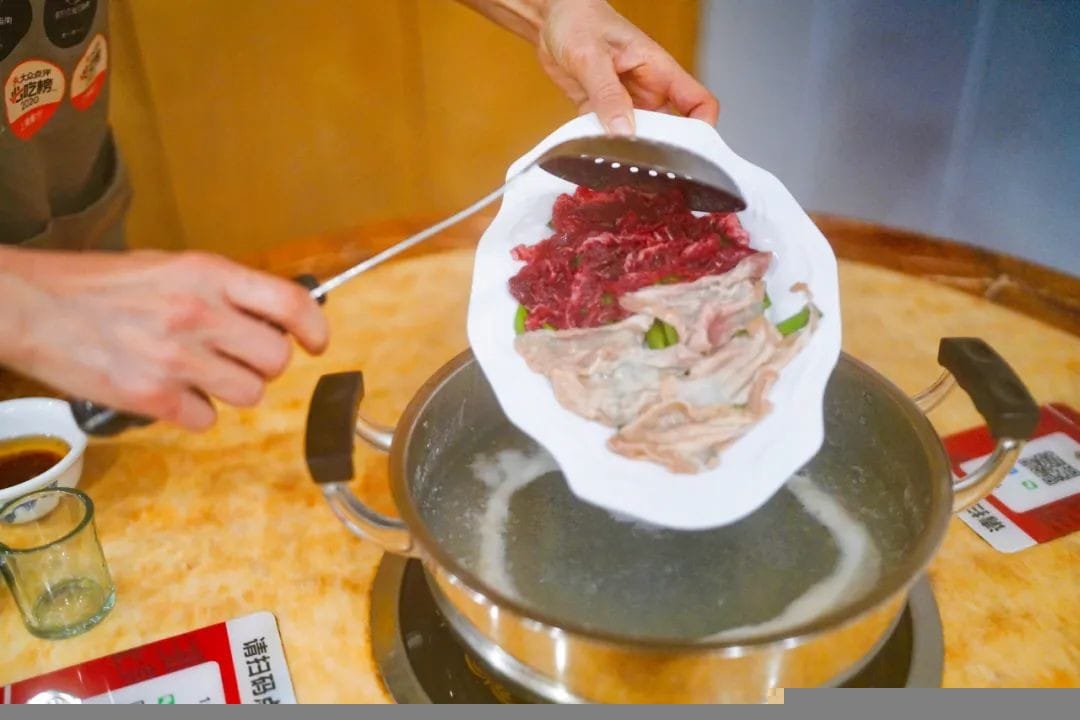
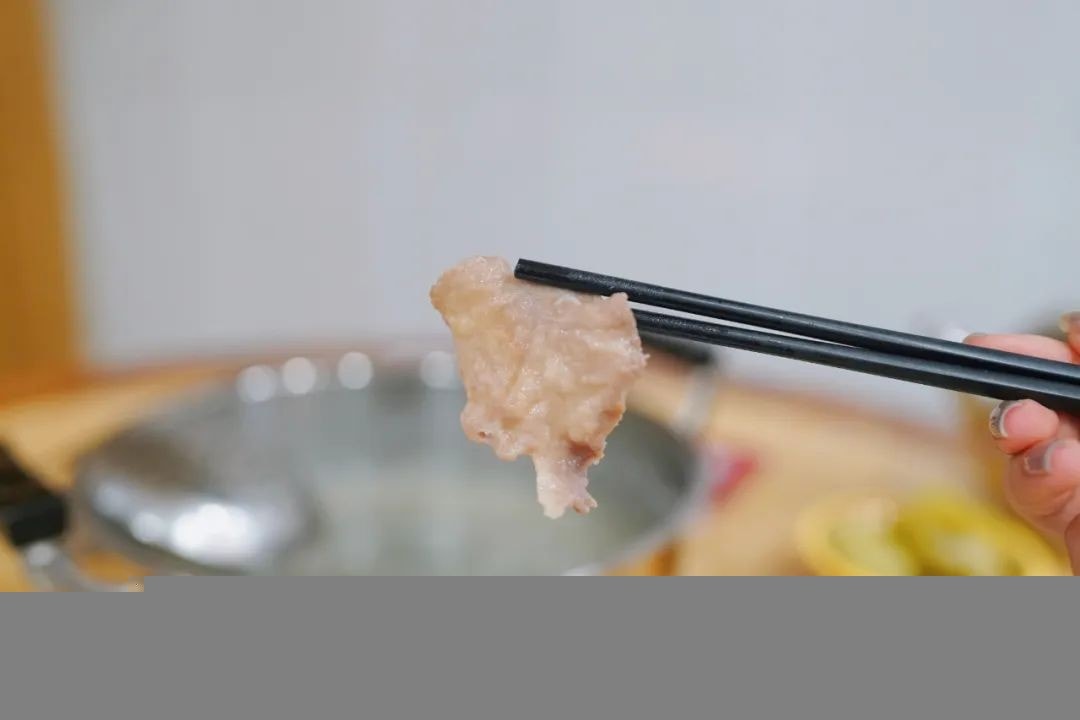
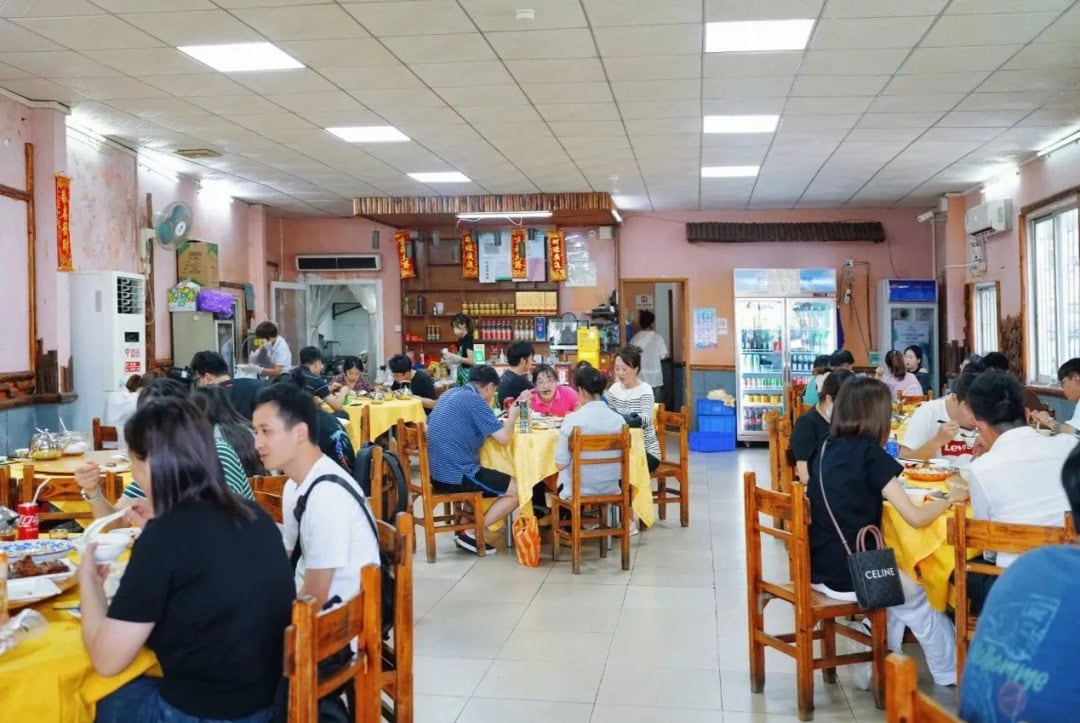
It lacked the milk skin, the texture was a bit like steamed egg custard. Although the sweetness was well controlled, the milk flavor wasn’t very prominent, so I wouldn’t recommend it.
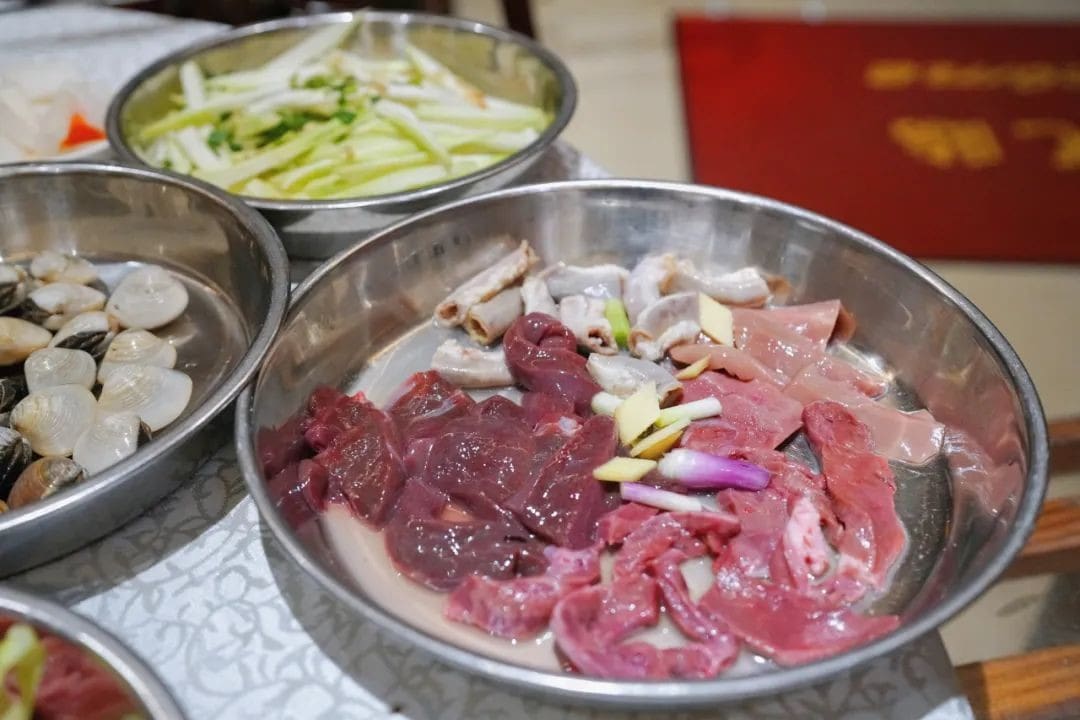
Seeing locals order Southeast Asian traditional dessert, cha-cha, I also got a portion.
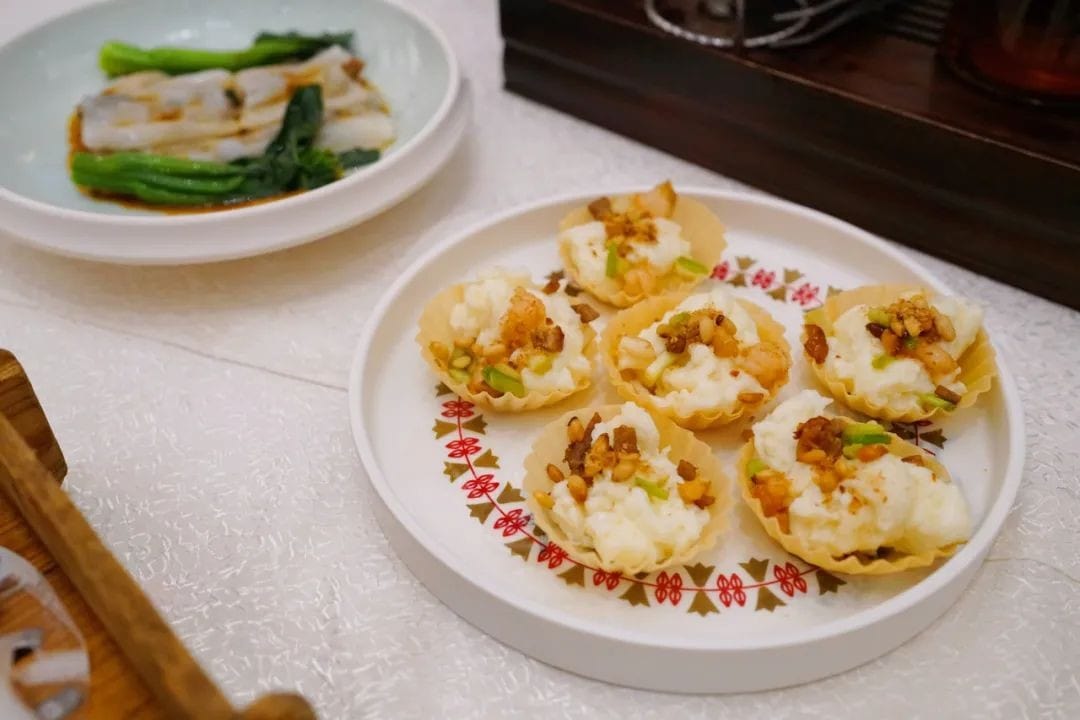
It included small ingredients like sago, taro balls, and red beans. The highlight was the coconut milk base, which had a richer coconut flavor compared to Hainan’s qingbuliang. Served chilled, it was very refreshing to eat in the sweltering Guangdong weather.
Feng’er Porridge and Food
📍: F1, No. 11, Taigan Road, Huangjin Commercial Plaza, Shunde District
⏰: 10:00-14:00, 17:00-21:00
Porridge-based hotpot is also a must-try when visiting Shunde. Not wanting to join the queues at the more famous Xing Tan Gong Ping Liang Zheng, I went to Feng’er Porridge and Food, recommended by familiar friends from Shenzhen, who often came to Shunde on weekends to eat.
Feng’er is also an established name in Shunde. The restaurant is quite impressive, with a photo of TVB actor Moses Chan dining there hanging on the wall.
Their hotpot uses no-rice congee as the base. Before adding ingredients, I specifically tasted a spoonful. It had no seasoning and no obvious rice grain texture, but to be honest, nothing particularly stood out.
A few must-try ingredients at Feng’er.
The white clams used mainly to infuse the base with freshness can be scooped up to eat once cooked. The shells contained no sand and were relatively clean.
Both the beef and pork balls are hand-beaten. Unlike the firmer Chaoshan beef balls, they have a more regular springy texture with a pronounced savory meat flavor, offering a very homely taste.
# Translations
Beef slices, pork liver, bamboo sausage—each ingredient is enjoyed for its original flavor, and the porridge base gives them all a subtle sweetness.
Fried dough sticks are always a brilliant addition to hot pot and spicy soup. The fried dough sticks at Feng’er Porridge are enormous, as thick as an adult’s forearm!
The holes in the fried dough sticks soak up the broth, making them incredibly flavorful. You can dip them in a bit of soy sauce for an extra kick—it’s just that good.
Finally, I recommend you try the “pot base,” which is essentially a hot pot version of boat congee.
With the help of the aforementioned ingredients, the porridge base has now become incredibly savory. The entire cooking process happens right before your eyes, with no MSG or artificial additives—just the natural umami from the ingredients.
Overall, this porridge-based hot pot doesn’t have any particularly fancy eating methods. It’s an old local spot where people come to enjoy a hearty meal or a late-night snack.
The ingredients are fresh, the service is very enthusiastic, and the price-performance ratio is quite good. It’s not exactly stunning, but it’s about the average quality you’d expect in Shunde.
Aunt He’s Kudzu Water
📍: Multiple locations
⏰: 10:00-22:30
A local brand in Shunde with many branches. The “Kudzu Water” in the store name is their signature, but actually, there are many types of sweet soups on the menu. Whatever sweet soup you want, Aunt He basically has it.
Kudzu Water is a sweet soup made from kudzu root, which has a cooling effect.
Besides kudzu root, this bowl also includes carrots, sugarcane, and water chestnuts. The sweetness of the soup comes from the ingredients themselves. This large bowl of real ingredients costs only 9 yuan.
After failing to try the double-skin milk at Huashengxing, I tried it again at Aunt He’s.
Aunt He’s double-skin milk has a strong milk flavor and is not overly sweet. The sweetness mainly comes from the lotus seeds on top, which are cooked to a very soft texture and generously cover the surface of the bowl.
Honestly, it can’t compare to the internet-famous Huanji, but it’s still quite delicious.
Even after 9 PM, locals continue to come for sweet soup. Aunt He has many branches, so you can just find one nearby. It’s another day wishing for a Cantonese sweet soup shop right at your doorstep.
🥟🥓🍵
Ronggui Chapter
Long’s Restaurant
📍: No. 1 Jinliang Road, Long’s Plaza, Shunde District
⏰: 9:00-14:00, 17:00-21:00
First, I must thank all the shareholders of Xiyou who recommended Long’s Restaurant in the comments of my previous Shunde dining guide. I arranged a visit to Long’s Restaurant right away during my trip to Shunde.
After my own comparison, I found that Long’s Restaurant indeed offers a better dining experience than the equally long-established Shunde People Restaurant.
Both share the grand style of a large restaurant, and Long’s Restaurant’s banquet hall for morning tea is equally spacious and impressive. I noticed that most of the patrons were locals from Shunde, coming in groups to enjoy tea together.
The menu at Shunde People Restaurant is extensive, almost to the point of resembling a comprehensive shopping catalog, whereas Long’s Restaurant offers a more streamlined menu. However, all the classic and specialty dim sum are still available.
Long’s har gow (shrimp dumplings) are excellent. Unlike Shunde People Restaurant, which mixes pea puree into the filling, Long’s uses the traditional combination of shrimp and diced bamboo shoots.
Each shrimp dumpling typically has one large and one small shrimp. The larger one is about the size of a small tea bowl, though the texture is not very bouncy, indicating the shrimp was frozen. However, for a price of 26 RMB, the quality is still outstanding.
The steamed beef balls with tangerine peel from Long’s extensive menu also deserve a special mention.
The beef does not have the usual minced texture but instead offers the pleasure of chewing on distinct meat chunks, enriched with celery and tangerine peel, making it both delectable and aromatic.
At 24 RMB per steamer, it truly deserves the praise of “great value for money.”
The cilantro tangerine beef rice rolls have a thin skin and ample filling, with the beef so plentiful that it almost bursts out of the rice noodle wrapper.
Regarding the Daliang fried milk, I initially thought it was a dessert, but I was way off when it arrived at the table.
This dish requires skillful cooking, turning milk into a soft, solid form in a frying pan, then sprinkling it with dried shrimp, pork drippings, pine nuts, and other garnishes. The first bite is a burst of creamy, savory flavor, making it a delight to eat.
However, it does get greasy if you eat too much, so having a sip of tea is necessary.
One of the auntie servers noticed me taking “ID photos” of every dim sum and made a point to tell me that all their dim sums are freshly made and not semi-finished products.
The items I ordered all met expectations, justifying their prices. For morning tea in Ronggui, I recommend Long’s Restaurant.
Hongxing Guangfa Clay Pot Rice
📍: No. 7 Wenhai West Road, Ronggui Street, Shunde District (next to Lavande Hotel)
⏰: 11:00-14:00, 17:00-21:00
The first internet-famous restaurant in Shunde now has two branches: one run by the father and the other by the son. Most diners usually choose the Wenhai branch for its better environment and location.
The day I visited happened to coincide with the reopening of Wenhai after its expansion, so there were more seats available (still with shared tables), and there was no queue during peak dining hours.
Hongxing offers roughly a dozen varieties of clay pot rice. The most popular orders are the sausages & cured meats, beef with egg, and eel clay pot rice, though the prices are a bit steep.
Taking the eel clay pot rice as an example, it comes in three price tiers: 45, 65, and 85 yuan, depending on the amount of toppings.
I noticed live eels in the restaurant’s tank and decided to go for the signature eel clay pot rice.
All of Hongxing’s clay pot rice is made to order, so the wait time is generally long. The eel clay pot rice, in particular, requires a lot of patience, taking about 30-40 minutes.
The authenticity of clay pot rice can often be judged by the rice. If it’s made with Thai fragrant rice, there’s a 90% chance it’s not traditional.
The most traditional Cantonese clay pot rice should use “silk seedling rice” from Zengcheng, known as the “king of rice in China.” The long and slender grains are exceptionally absorbent and soak up the oils from the ingredients.
The meat of the eel is incredibly thick and smooth, processed to remove any fishy smell, leaving a fragrant bite.
However, what puzzled me was that the eel chunks in the regular eel clay pot rice come with the bones intact, which detracts from the joy of big, hearty bites.
There is an option to have the eel de-boned for an additional 33 yuan, but I didn’t find it particularly cost-effective.
The rice crust (known as “guoba”) is the soul of clay pot rice. Shunde people hold their clay pot rice to high standards, requiring a thin layer of rice crust but not too much. Hongxing nails this perfectly.
Personal preferences vary; Hongxing’s rice crust is extremely crispy, resembling the texture of rice crisps, and is quite a workout for your jaw muscles.
To differentiate from other clay pot rice restaurants, the sauce is an area where they can stand out.
Hongxing makes their own soy sauce, which is much less salty than the typical light or dark soy sauce used at home. Reportedly, it’s blended with a dozen spices, including galangal and cinnamon, giving it a distinctive fragrance that complements the clay pot rice perfectly.
Hongxing is always packed and you’ll likely have to share a table, and the prices are somewhat high. However, they do deliver consistent quality, year after year.
If you find any other good clay pot rice in Shunde, feel free to recommend them to me.
Yinji Desserts
📍: Near Lexin Cultural Building, Zhenhua Community, Shunde District
⏰: 14:00-22:00
Unlike Huan Ji, Yin Ji is a genuine “neighborhood store,” where the shop is converted from the courtyard of their own house.
On one side is the kitchen, and on the other side, there are just a few round tables, making it feel like eating dessert in the living room of a relative’s home.
Shunde’s buffalo milk is renowned, and the fame of double-skin milk is largely due to the excellent quality of the buffalo milk.
In Shunde, if a shop owns its own dairy farm, they are certainly proud to advertise it. And places that have their own dairy farms typically make desserts that are quite exceptional.
Yin Ji’s most famous signature dessert is the steamed milk with egg. Compared to Daliang double-skin milk, though it doesn’t have the milk skin, it combines the flavors of milk and the fragrance of egg.
The two flavors are entangled in the mouth, incredibly smooth and sweet without being overly cloying; I really like it.
The black sesame soup is unremarkable but enjoyable, smooth and slightly thin in texture, with just the right amount of sweetness, fitting modern tastes well.
If it weren’t for the scorching summer heat, I would more recommend the hot sesame soup, as the aroma of sesame could be more fully released.
Unlike most dessert shops in Shunde, Yin Ji opens at 2 PM in the afternoon, so don’t go too early.
The steamed milk with egg is limited daily, sold out once it’s gone.
Song Ji
📍: No. 3 Hexiang Road, Shunde District (opposite United Electronics Factory)
⏰: 10:00-14:30, 17:30-21:00
For shareholders outside of Guangdong, the concept of a clear broth hot pot might be hard to grasp. The allure hidden in this cooking method, which requires no culinary skills, can only resonate with you after you’ve tried it once.
This is probably also the easiest hot pot base to prepare—just boil the water.
In Shunde, Song Ji is symbolic of clear broth hot pot. Though it has branches in Guangzhou, the main store in Ronggui always remains the favorite for those who truly understand and love food, making it the most surprising delight in my trip to Shunde.
The standard dipping sauces for clear broth hot pot are those labeled in the picture, but you only need a tiny amount, as the taste focuses on the original flavors of the ingredients. I was even asked by the staff to “redo” when I added too much oil.
There is a certain order for adding ingredients to the pot, but don’t worry about missing the perfect timing if you’re not counting the seconds. The staff will take care of what to put in first and the timing to take out the ingredients.
Because of the Chaozhou beef hot pot, I learned about various parts of the cow. After eating at Song Ji, my knowledge was further updated.
The signature beef shank is actually the beef tendon, rich in muscle fibers. Song Ji’s beef shank is especially tender, with a rich meat fragrance that spreads as you chew.
Moreover, the cooking of the chives used as a base vegetable was perfectly controlled. People from Shunde often say, “raw spring onions, cooked garlic, and half-cooked chives,” meaning the chives should still retain a certain crispness when wrapped together with the meat and eaten.
My favorite dish of the entire meal was Niu Keng Li (beef tongue root).
In Cantonese, “Niu Li” refers to beef tongue, and “Niu Keng Li” is the part where the tongue connects to the throat, a very rare portion.
Niu Keng Li has a strong milky aroma, similar to beef brisket, but without any greasiness. The clear broth pot perfectly retained the rich milky flavor of the Niu Keng Li. I regretted ordering just a portion, as it wasn’t enough to fully enjoy.
Bamboo sausage is also one of Song Kee’s specialties and is available in limited quantities daily.
In its raw state, the cleanliness of the processing is evident, with a strikingly balanced amount of white fat.
It cooks quickly and is ready to be scooped up soon after hitting the pot. On the first bite, the feedback isn’t bouncy but crispy.
When you bite into the fat, you can feel the oil bursting in your mouth, giving a juicy sensation that makes me truly appreciate this ingredient from the inside out.
After a voracious feast, the staff gave us a sticky rice bun wrapped in bamboo leaves as a finale treat. Chewy and sticky, it was very appealing to someone like me from Zhejiang.
The little fortune dog Didi is in charge of billing, smiling broadly at every diner entering the restaurant, while the staff amuse him whenever they have a moment.
I originally thought that Chaoshan beef hotpot already gave enough respect to the natural flavors of the ingredients, but it turns out that the food-savvy people of Guangdong have reached an even higher level.
Boiling ingredients in clear water, skipping even the shacha sauce, the ingredients alone win over diners’ hearts. If you come to Shunde, you must experience the clear broth hotpot at least once.
This concludes my second report on eating and drinking in Shunde.

